Bugs and improvements
- Fix Fixed an edge case where a user added or removed in the JumpCloud console for a group that has nested groups wasn't properly pulled into our systems
We  updates that drive your success!
updates that drive your success!
Teams are now available in ShiftControl, giving you a flexible way to organize people based on how your company already works. Different organizations use Teams differently — some treat them like sub-departments, some use them for functional groupings, and others use them for regional or segment-based structuring.
No matter how you define them, Teams give you a consistent, single-membership attribute that can sync cleanly from your HRIS and power Groups, assignments, and automation.
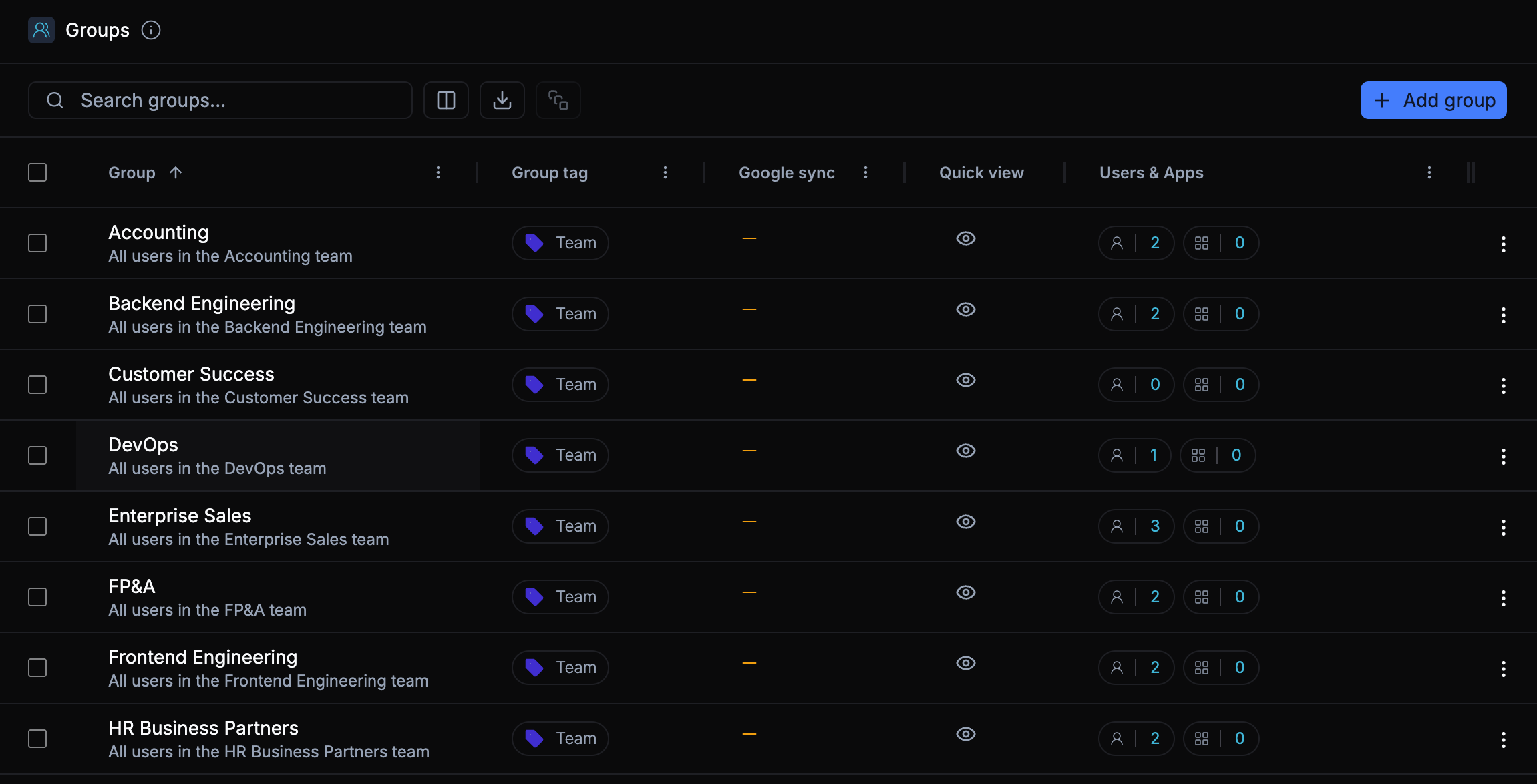
Different companies use Teams in different ways, so we’ve kept the concept flexible:
To keep things simple and aligned with most HR tools, each person can only belong to one Team at a time. This matches how HRIS systems like BambooHR and HiBob usually model Teams or sub-departments.
You can either:
When Teams are synced, we keep the structure in sync so your people data stays consistent across systems.
Every time you create a Team, ShiftControl automatically creates a matching Group (for example a DevOps Team will also create a DevOps Group).
You can then:
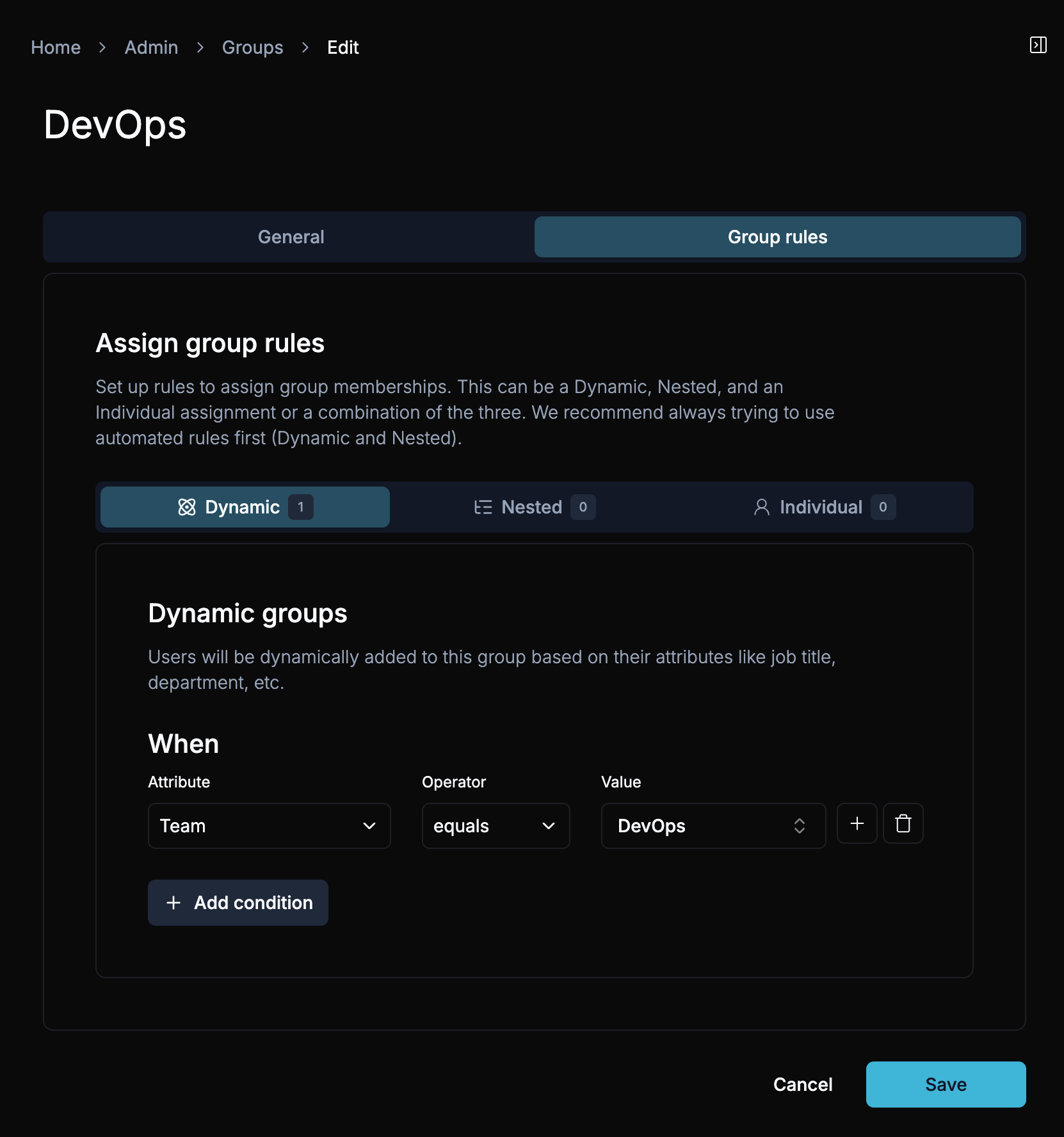
This works just like Groups for locations and departments, so it fits neatly into your existing setup.
If you rename a Team (for example from Customer Success to Client Success):
No more hunting for mismatched names between Teams, Groups, and user profiles.
Teams are also available as a condition in dynamic Groups:
This makes it easy to build rules such as “add everyone in the DevOps Team to the DevOps Apps group” without manual management.
Check out the video below to see how it works:
You can now connect Dream Team to ShiftControl and let HR data become the single source of truth for your user management.
Enjoy cleaner user data, smoother onboarding, and tighter security with our new Dream Team HRIS integration!
We’ve added a quick way to match your screen to your mood (or your existential crisis).
Press Cmd/Win + Ctrl + T to cycle through Light, Dark, and System modes, because sometimes you want that crisp daylight productivity vibe, and other times you just want to brood in the dark.
✨ Go ahead, toggle away. We won’t judge your aesthetic choices.
You can now tag every group in your organization to instantly understand its purpose and category.
Whether it’s a department, a shared account, or a distribution list, Group Tags help make sense of even the most complex group structures.
✨ Highlights:
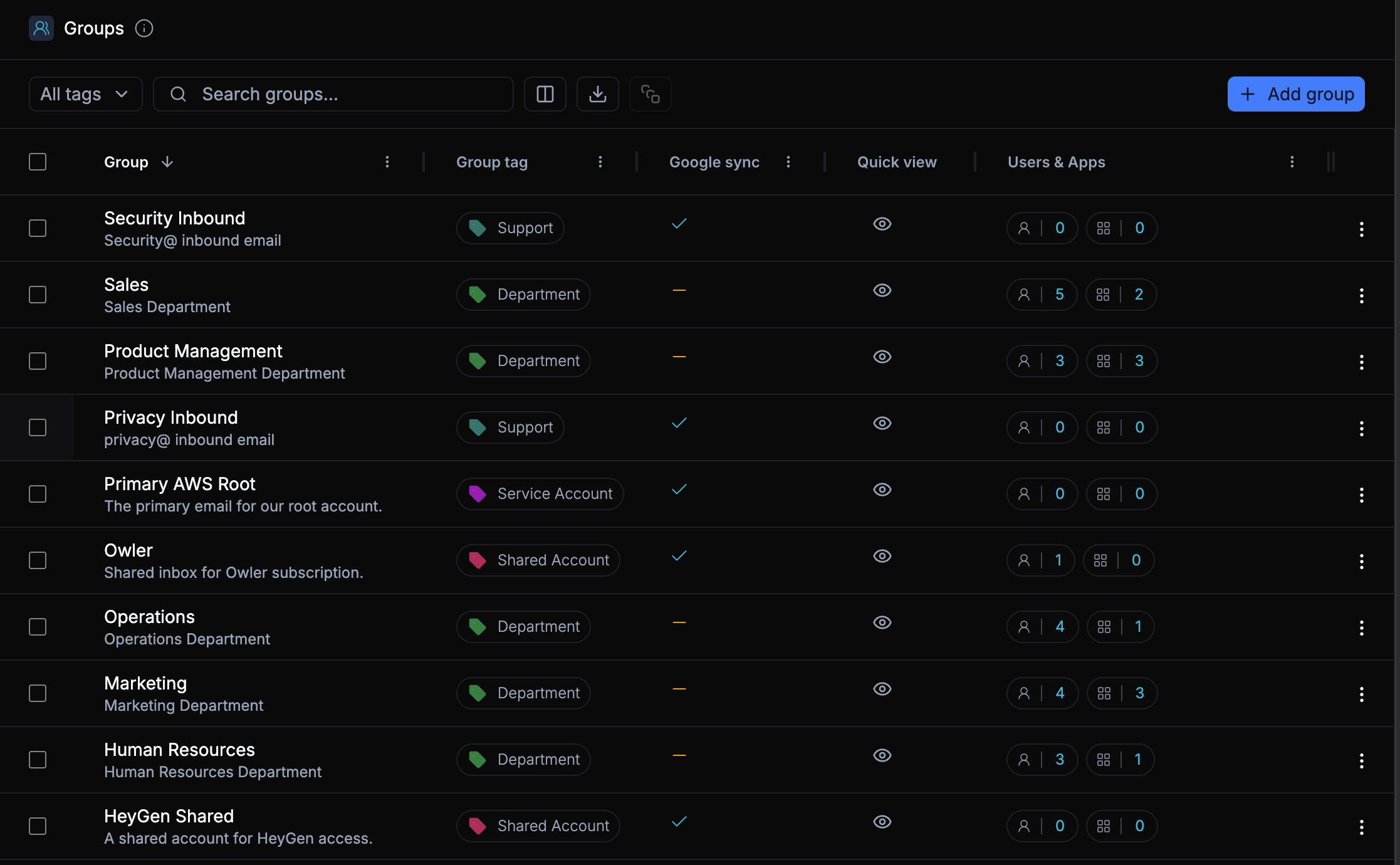
This feature is especially useful for organizations managing shared or system accounts across multiple services. You’ll always know which groups are tied to automation, access, or communication lists — without guesswork.
Check out the video below to see how it works!
We’ve made the Permissions dashboard easier to explore!
🔍 You’ll now see hover details showing how many permissions each app has — and when you click the icons, you’ll see all permissions for that app across services in one clean view.
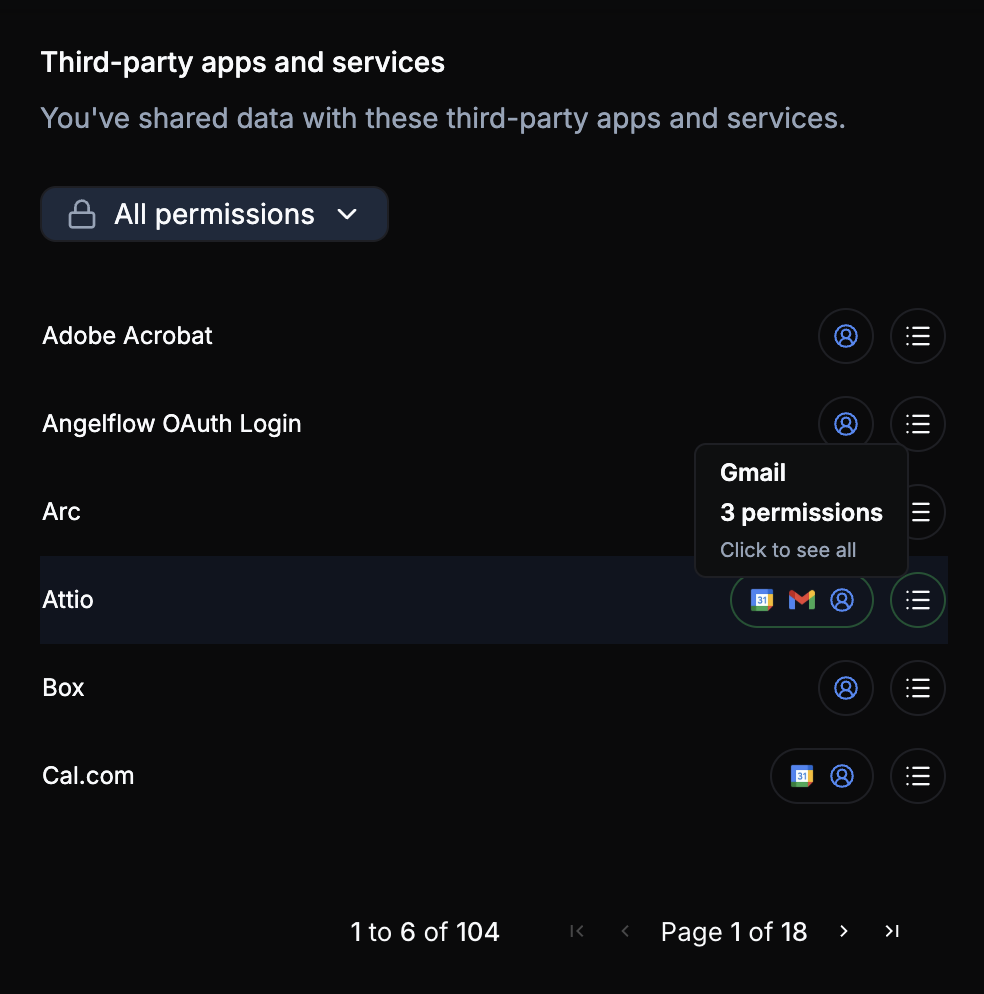
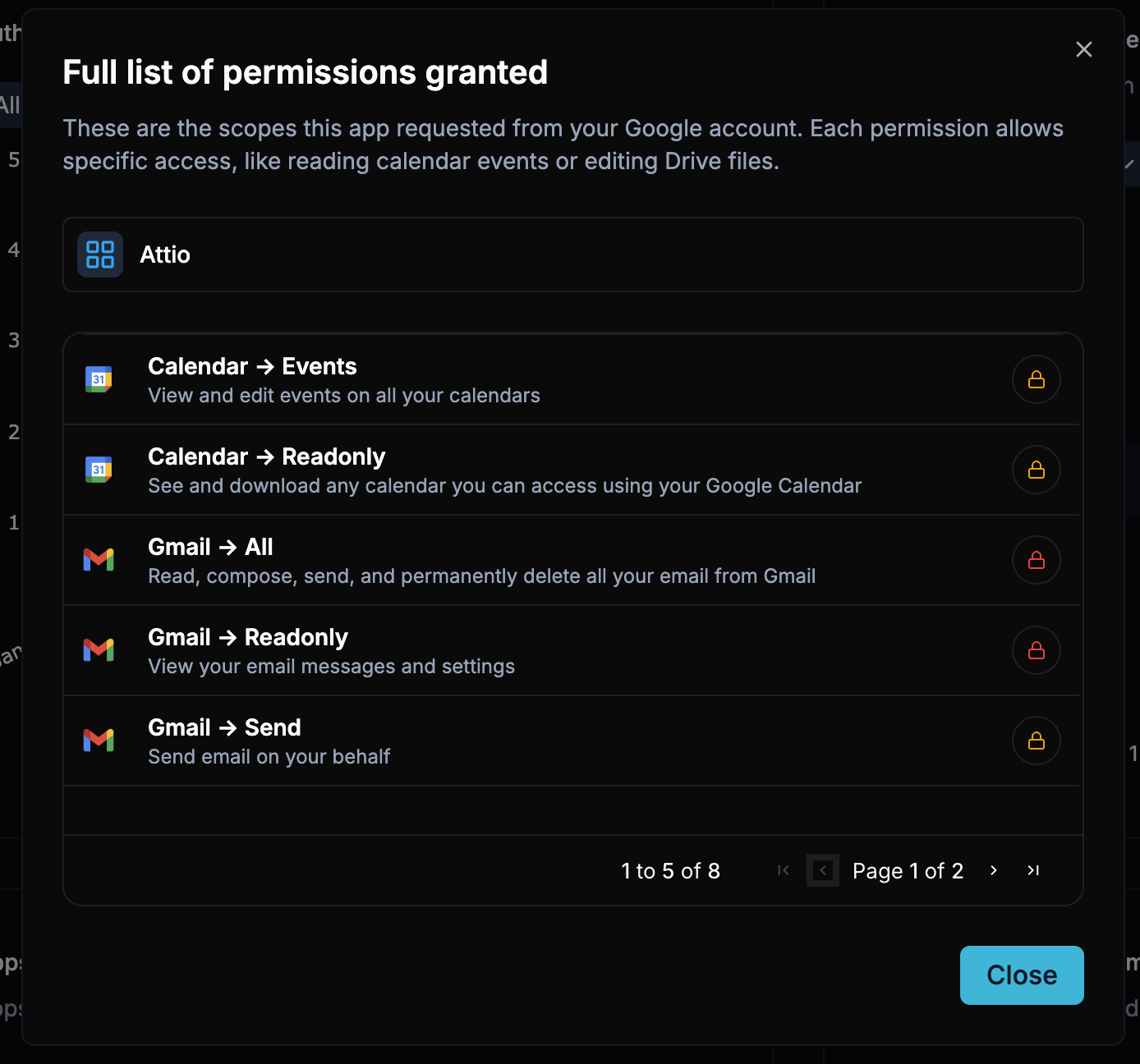
✨ We also made it more obvious that the three-lined icon at the end is clickable (yes, that one!), so you can quickly access the full authorization list.
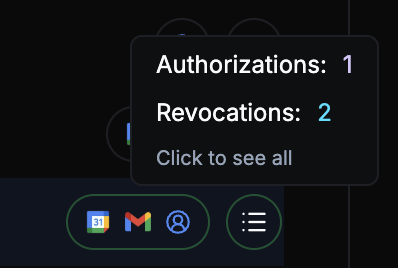
Little improvements, big difference in clarity.
Admins can now create, edit, and customize Group Tags directly from Settings → Group Tags.
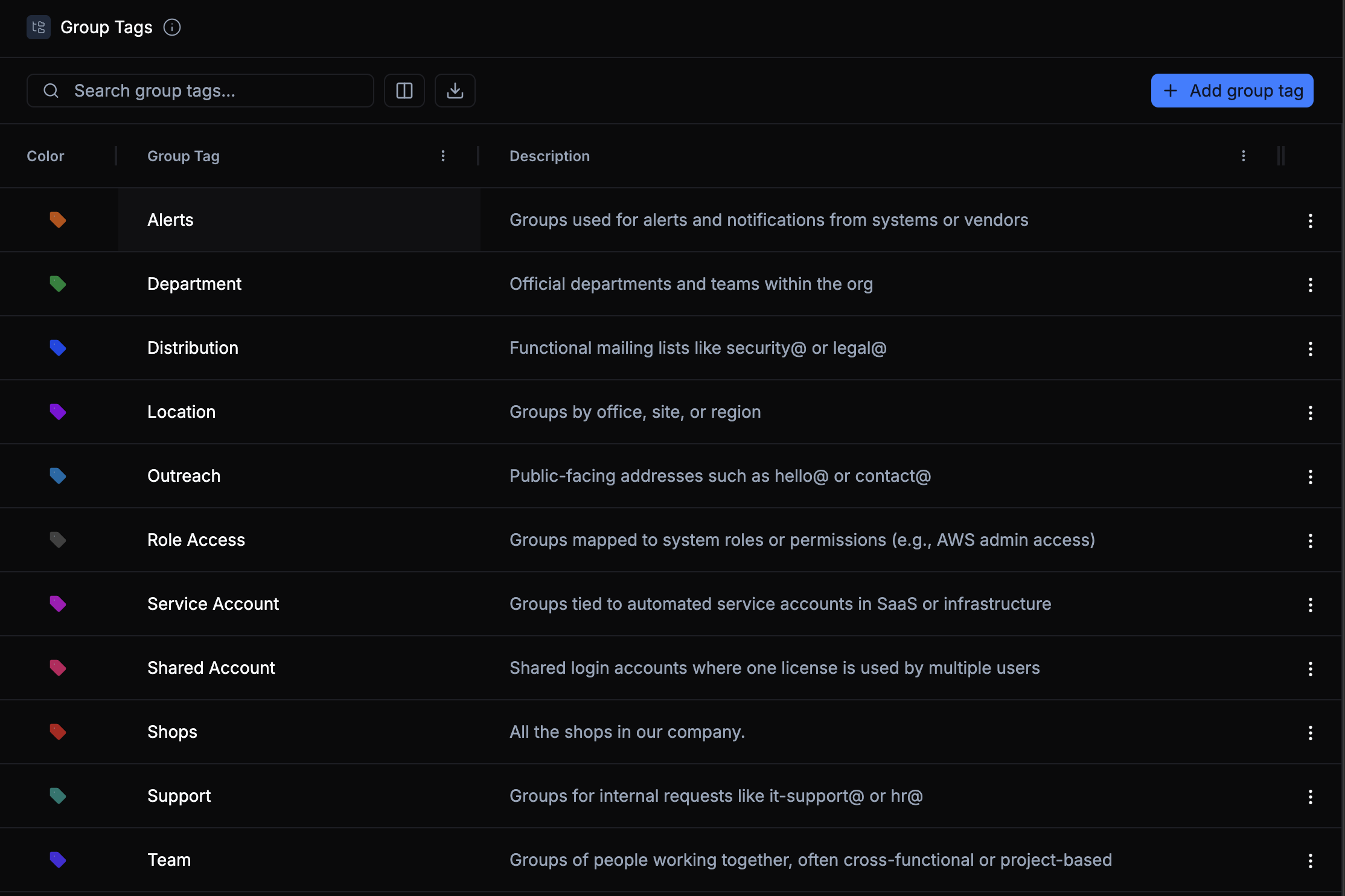
🪄 What you can do:
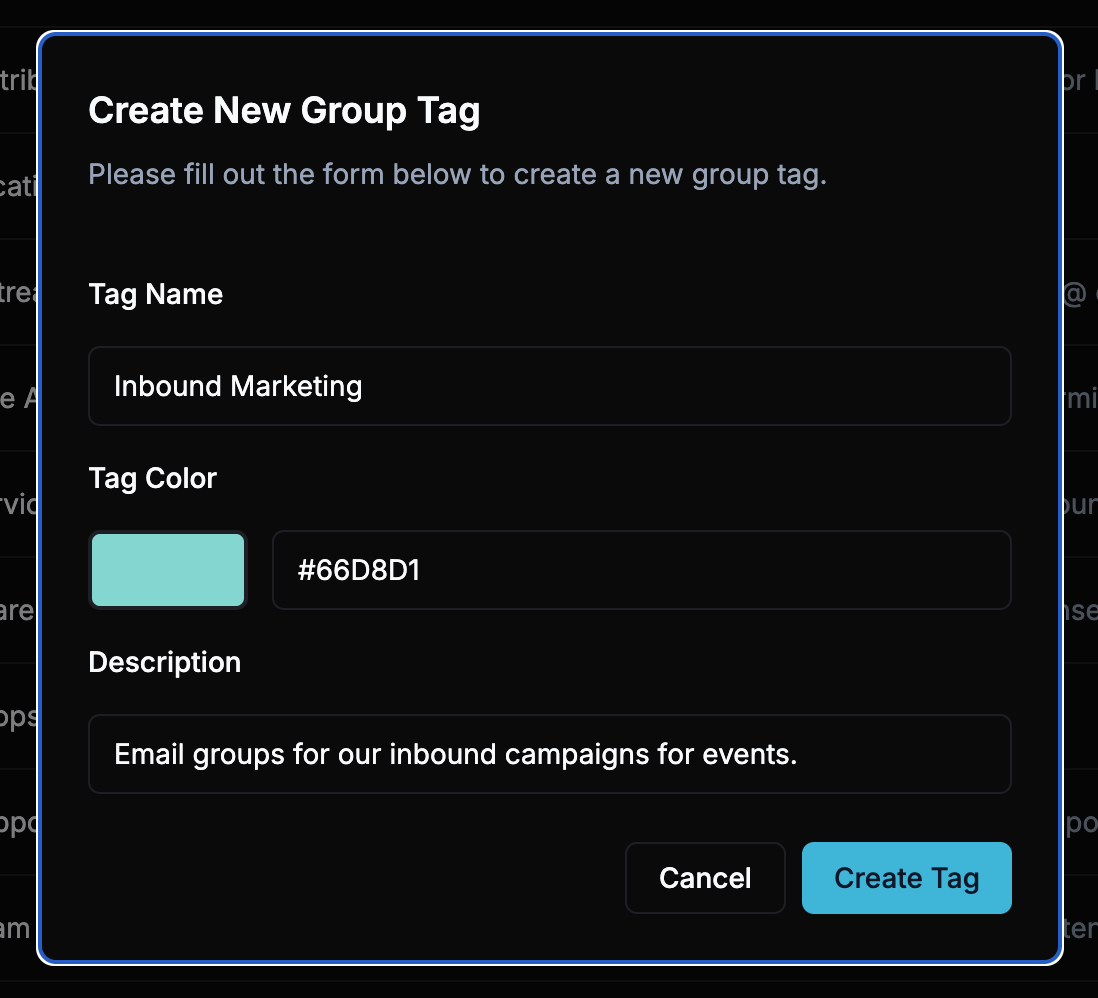
Every organization starts with a default set of tags (like Department, Location, Role Access, Shared Account), but you can expand them to match your company’s specific needs — for example, Inbound Marketing or Shops.
We’ve moved Integrations into the Settings area and renamed them to Connectors to better reflect their purpose — securely connecting ShiftControl to the apps and systems that power your business.
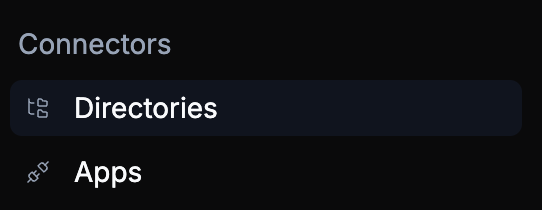
Connectors are now organized into two categories for clarity:
Directories include your Identity Providers and HRIS systems — the sources of truth for your user and employee data.
From here, you can manage authentication to services like Google Workspace, JumpCloud, or BambooHR.
We’ve also laid the groundwork for upcoming capabilities, including a unified view of users and groups across Google and JumpCloud, and the ability to designate a primary directory.
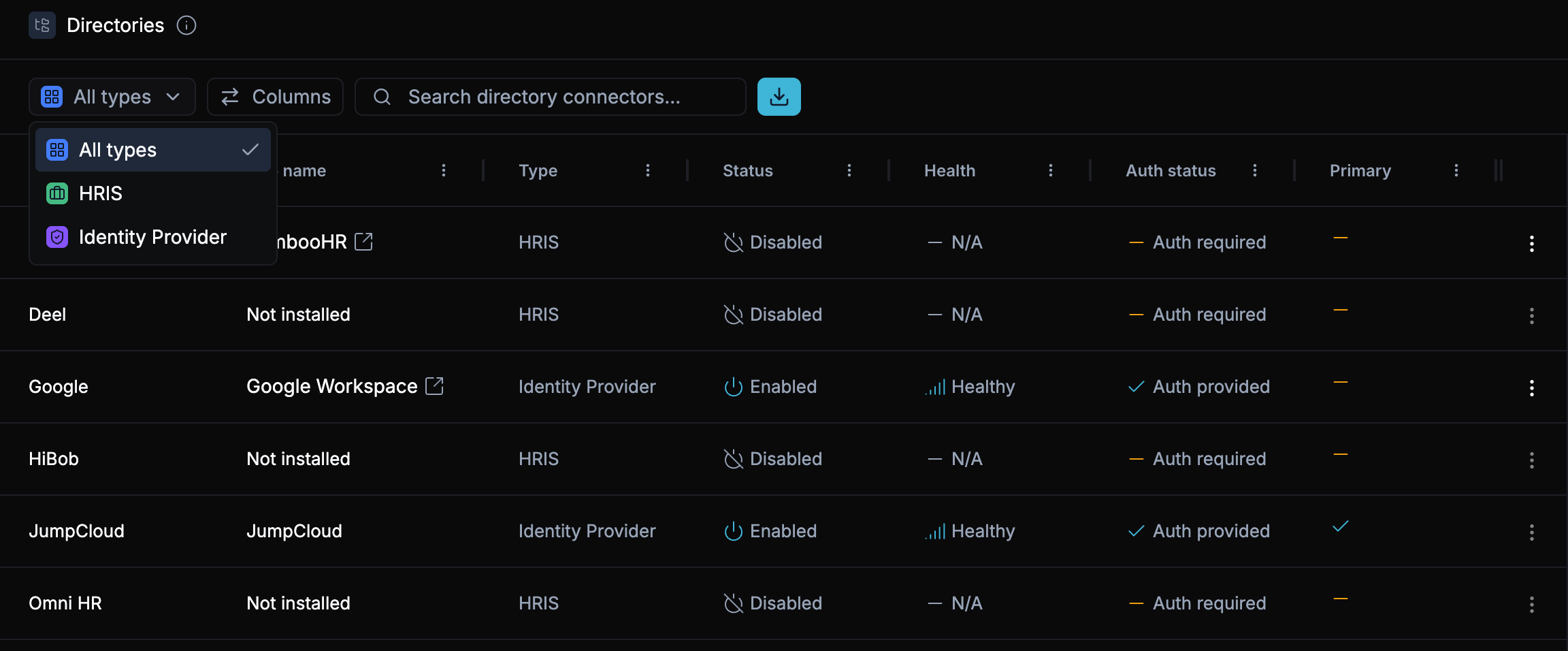
Apps include everything else — the SaaS tools you integrate with to sync user information in and out of ShiftControl. Use this section to manage authentication and connection status for your app connectors.

You can now clean up and organize faster than ever! Bulk management isn’t just for users anymore — you can now manage multiple Groups and Apps at once.
🧩 For Groups, you can change tags or delete multiple at a time.
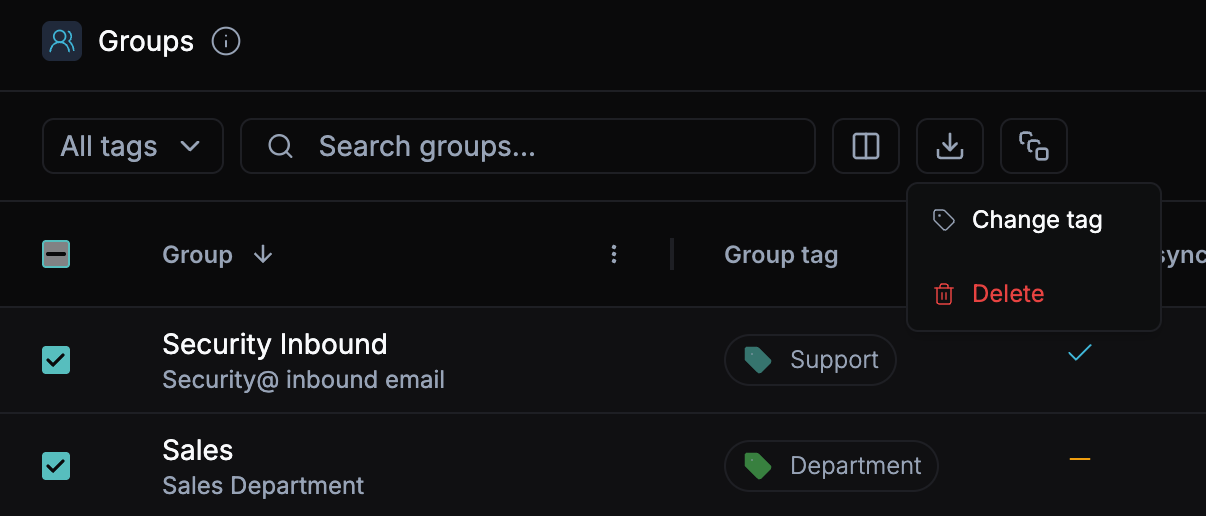
⚡ For Apps, you can bulk delete to tidy up your catalog in seconds.
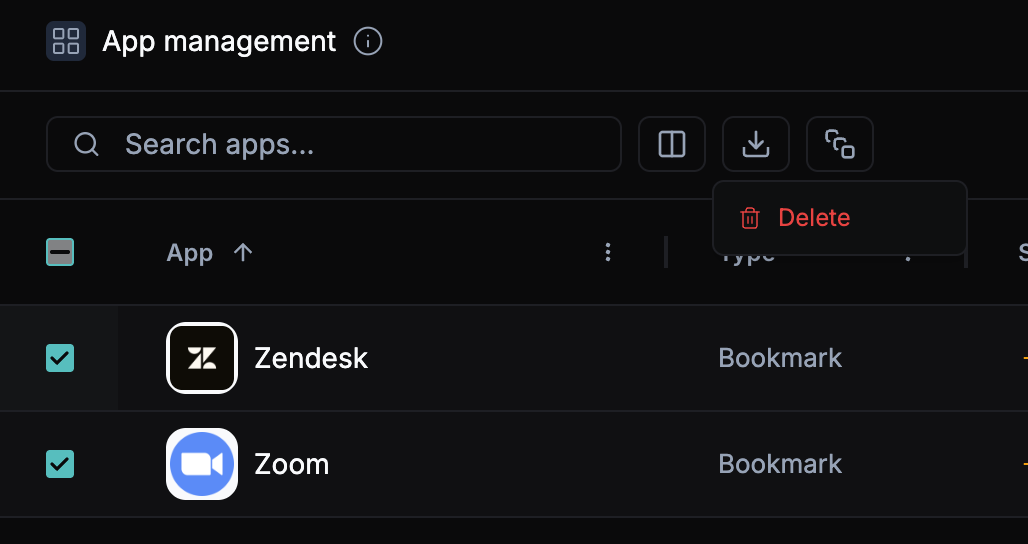
Perfect for those satisfying clean-up sessions where you get everything just right — and save a bunch of clicks while you’re at it.
You can now jump between the Employee Portal and Admin Portal in a flash! Use ⌘/Windows + J to toggle instantly, or open the ShiftControl menu to switch portals — either in the same tab or a new one.
Sometimes it’s the little things that make a big difference ✨
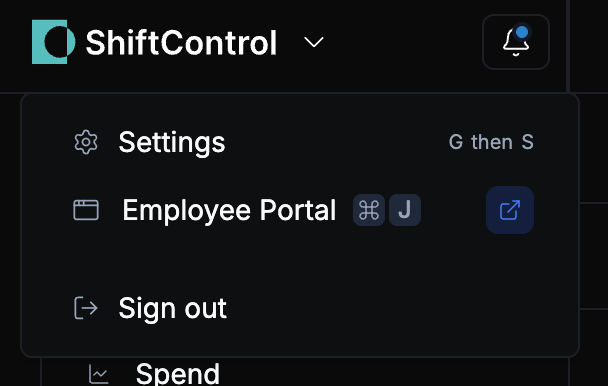
We’ve redesigned the actions menu to make it sleeker and easier to use. All actions now live in a single, compact dropdown — saving space and keeping things tidy.
Dangerous actions like Delete are clearly marked in red, while the Edit option has been neatly folded into the same menu for a cleaner look.
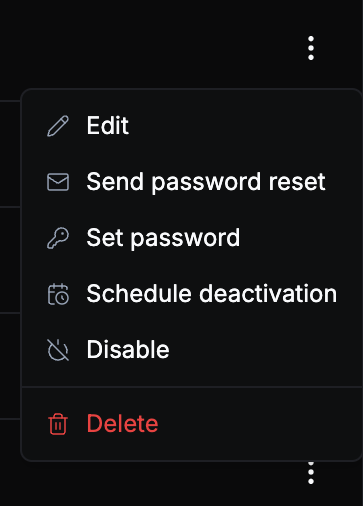
Simple, intuitive, and just a little more polished.
We’ve made it much easier to understand how users are assigned to groups — whether through dynamic rules, nested groups, or individual assignments.
You told us it was hard to tell when someone was already added through another method, especially when cleaning up manual assignments or switching to automated rules. Now you’ll see exactly how each user is assigned, wherever you manage groups:
👥In the group side panel
Quickly see whether a user is part of the group via dynamic, nested, or individual assignment.
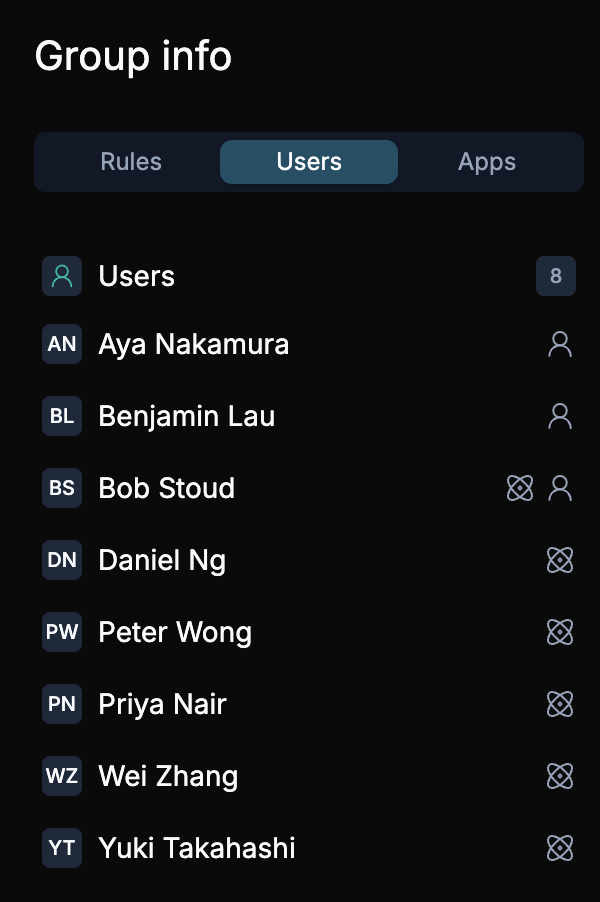
⚙️In the Individual Assignment tab
See the same indicators while managing manual assignments, so you don’t add duplicates.
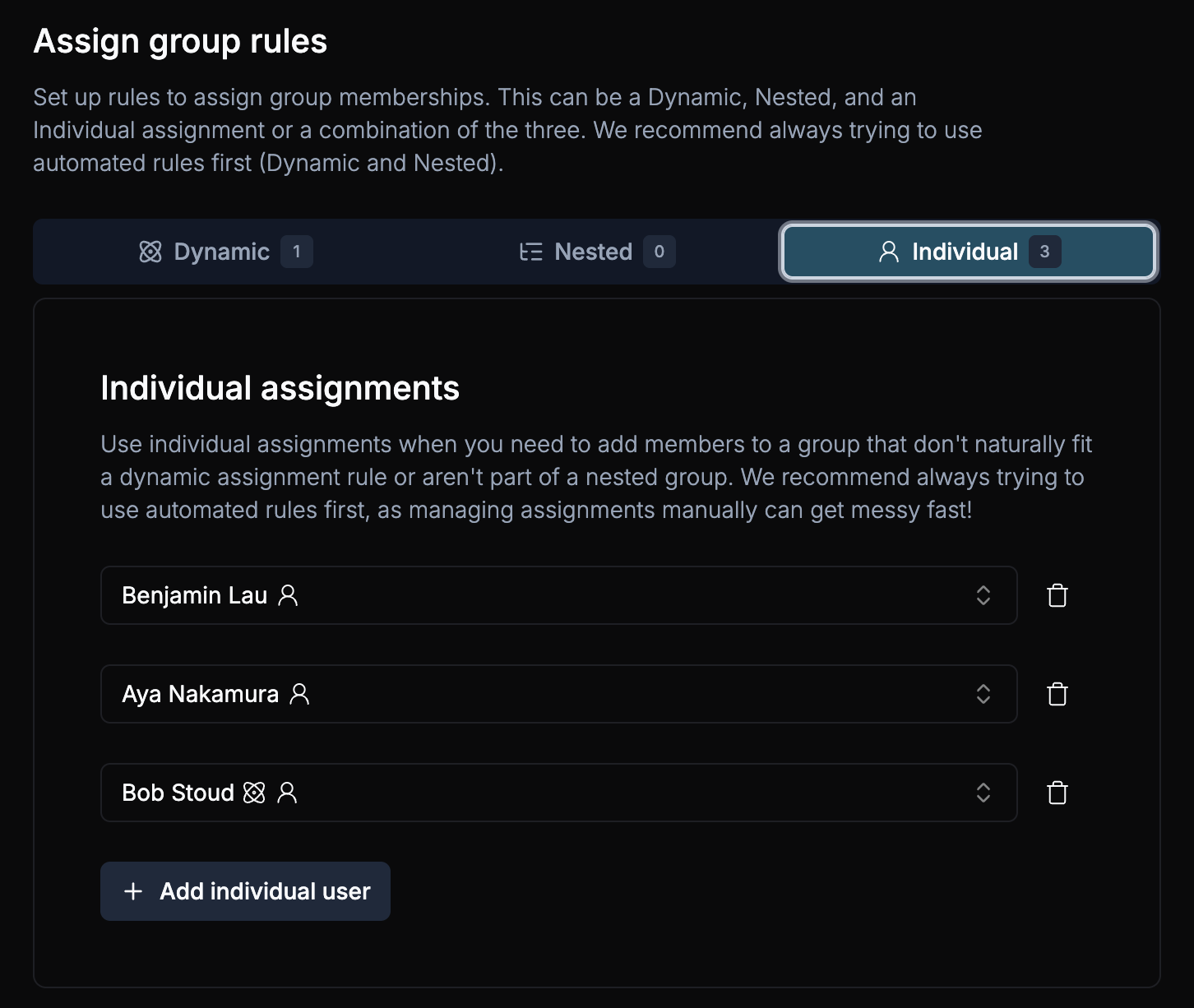
🔍In the user search dropdown
Indicators now appear directly in search results — making it easier to pick the right person and avoid confusion.
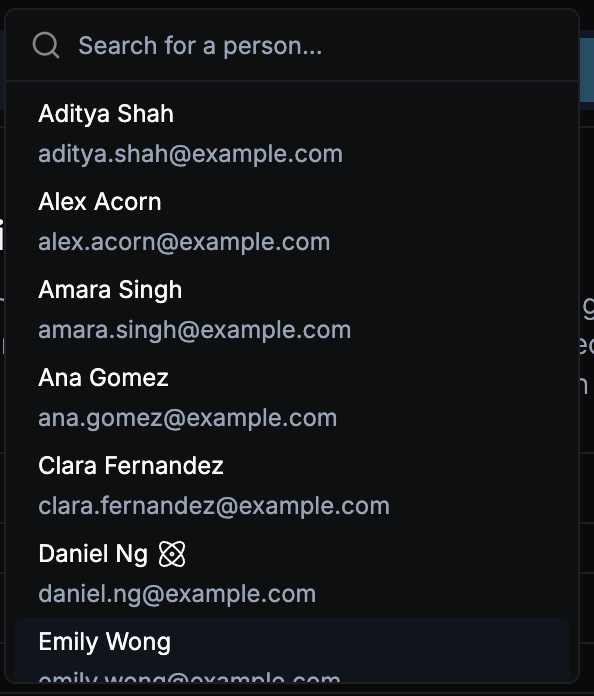
We’ve added a powerful new Permissions Dashboard that gives administrators complete visibility into how data is shared with third-party apps and services inside Google Workspace.
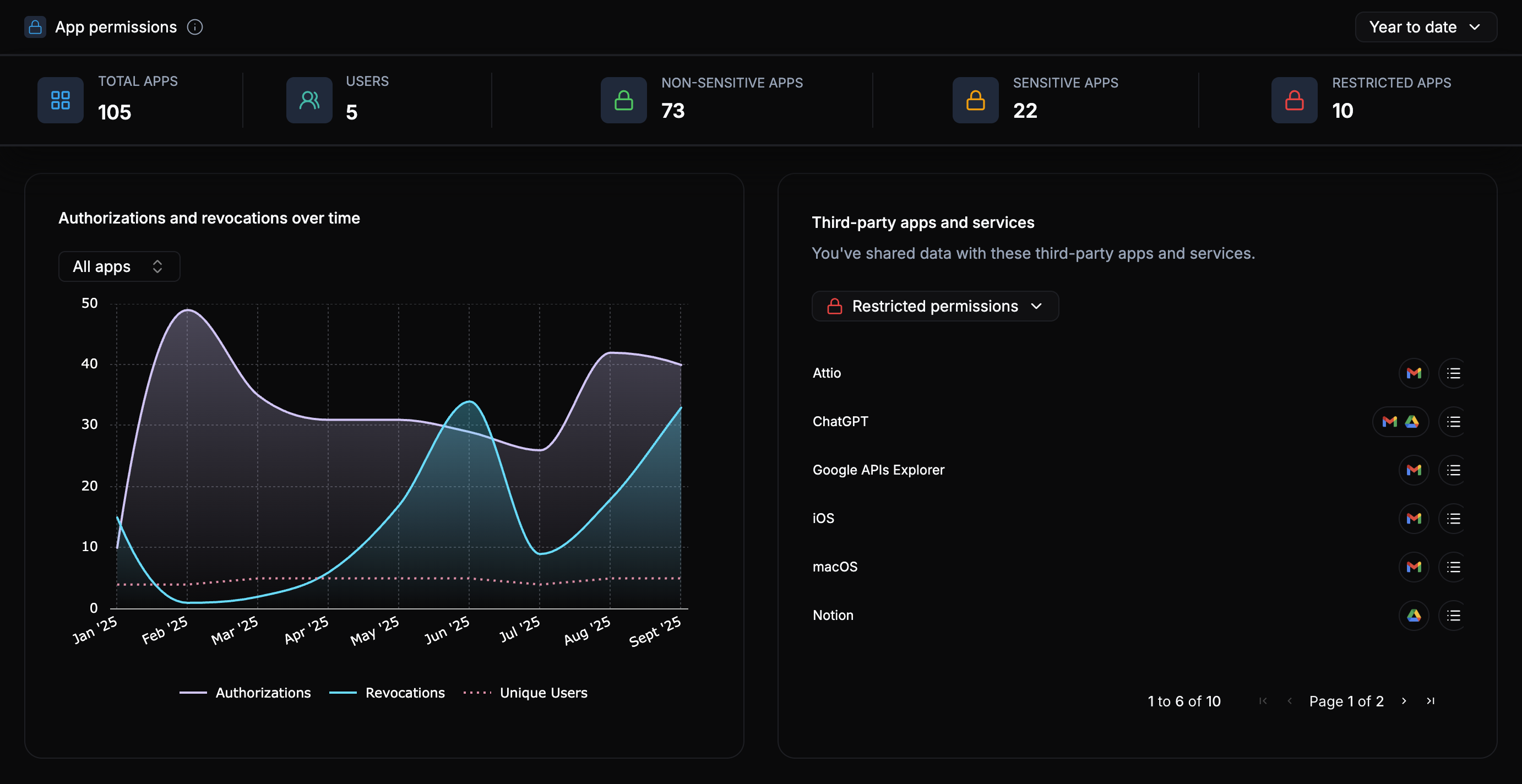
Many business apps connect through Google using secure authorization flows (known as OAuth). These connections can expand over time, and without proper oversight, they create risk. The new Permissions Dashboard helps teams keep that risk in check by surfacing all connections, scopes, and user actions in one easy-to-use view.
The new dashboard is live for all administrators under Reports → Permissions.
No configuration required, your connected app data is already being analyzed.
Check out the explainer below for more information.
You can now link Deel to ShiftControl and let your HR data drive identity and access automatically.
Why it matters
What’s different from JumpCloud’s native connector
How it works
Enjoy cleaner records, smoother onboarding, and worry-free offboarding with our new Deel integration!
We’ve made it easier (and nicer!) to manage your settings. Instead of being spread across different menus, everything now lives in one dedicated Settings area, accessible from the ShiftControl icon at the top left.
🎉 What’s new:
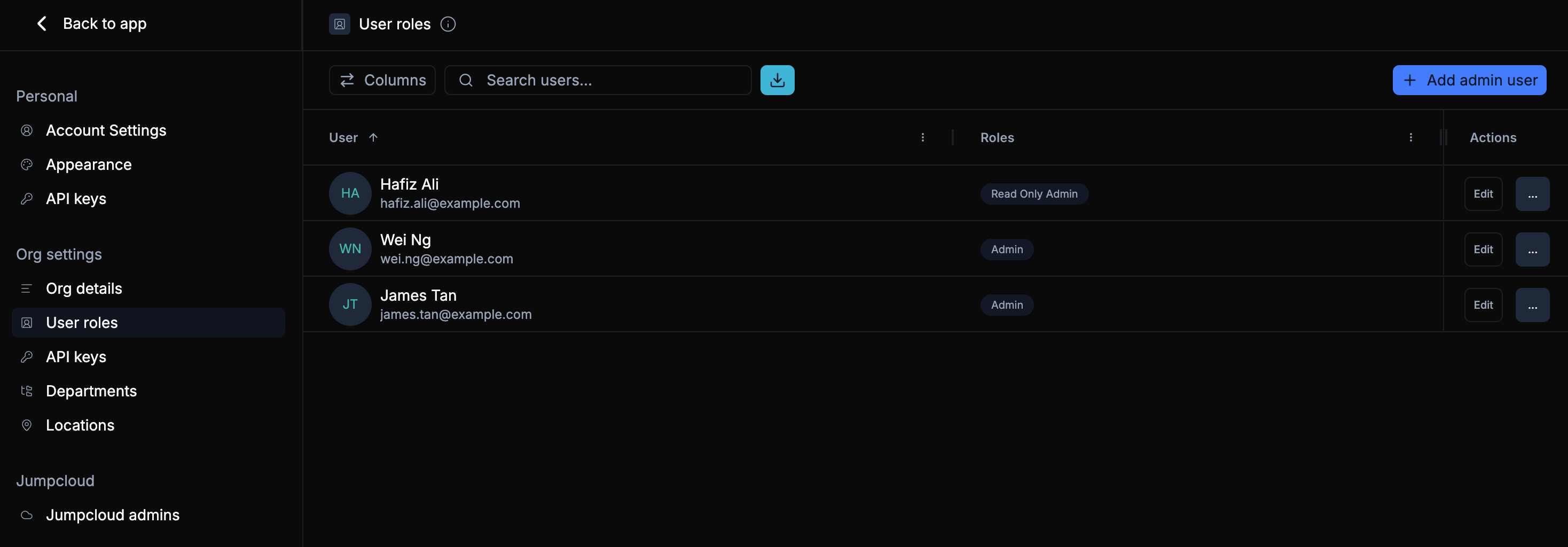
Check out a quick demo below!
This update makes your workspace feel more connected, more intuitive, and ready for what’s next.
We’ve refreshed the look of status icons in the User Directory to make them easier to read and more consistent across the platform. The new design helps you quickly distinguish between user states and any related actions, making the directory more scannable at a glance.
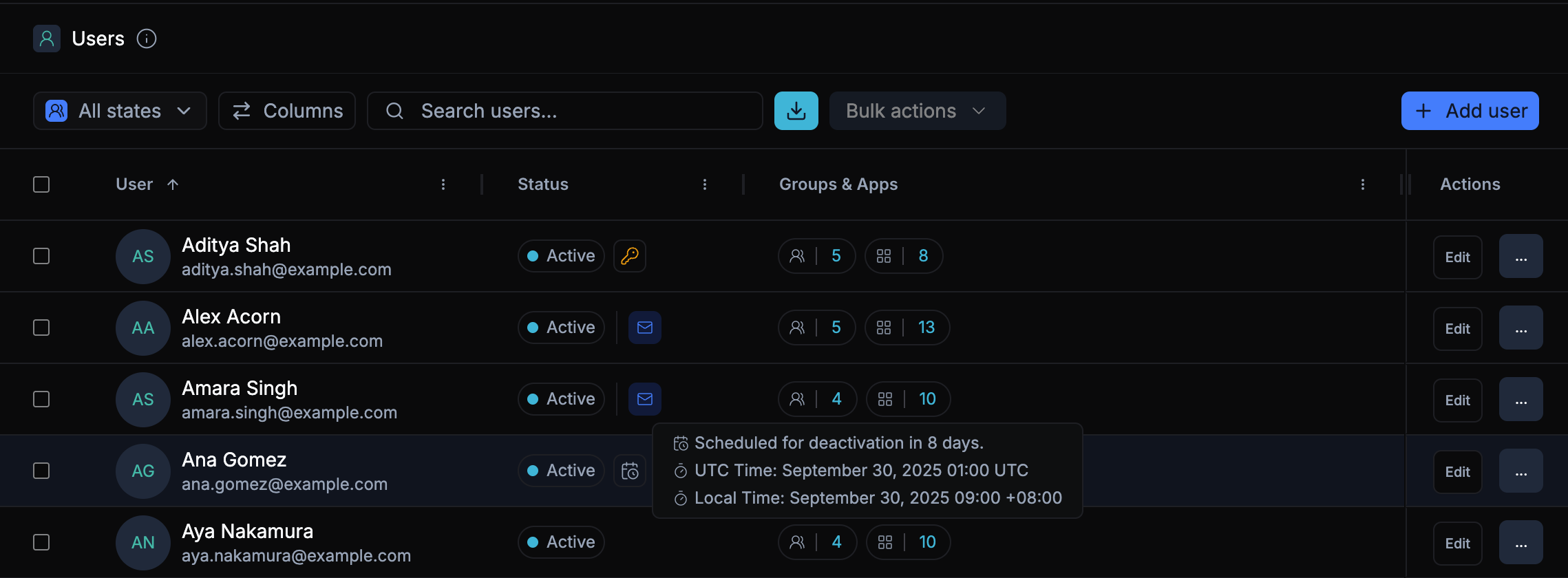
You can now connect HiBob to ShiftControl and let HR data become the single source of truth for user management.
Enjoy cleaner user data, smoother onboarding, and tighter security with our new HiBob integration!
You can now work with tables more comfortably. Tables automatically expand to take up the full screen, giving you more room to see your data.
When you select more rows than can fit on the screen, a scroll area is dynamically added, keeping the table header fixed at the top so you can always see column names while sorting and reviewing data.
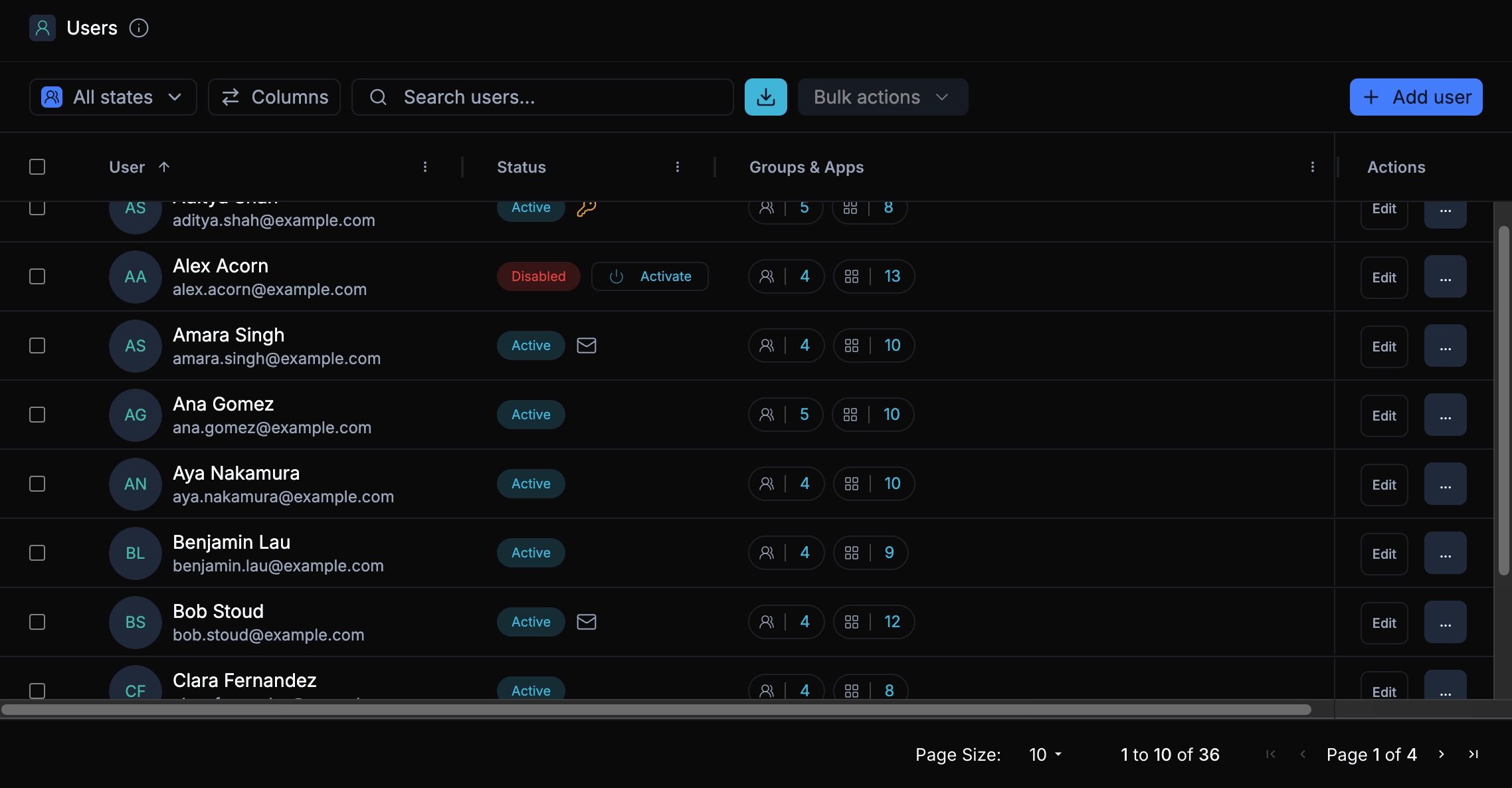
You can now create group emails with fewer errors and more flexibility. If your JumpCloud Cloud Directory connector is set up with a default domain or multiple domains, we’ll automatically detect them and display them in a handy dropdown, making it easier to select the right domain without typos.
We also now support syncing to multiple Google Workspace directories. If you’ve configured more than one, you can choose which directory to sync with, and the available domains shown will adjust to match that selection.
This makes managing group emails across locations and workspaces smoother and less error-prone.
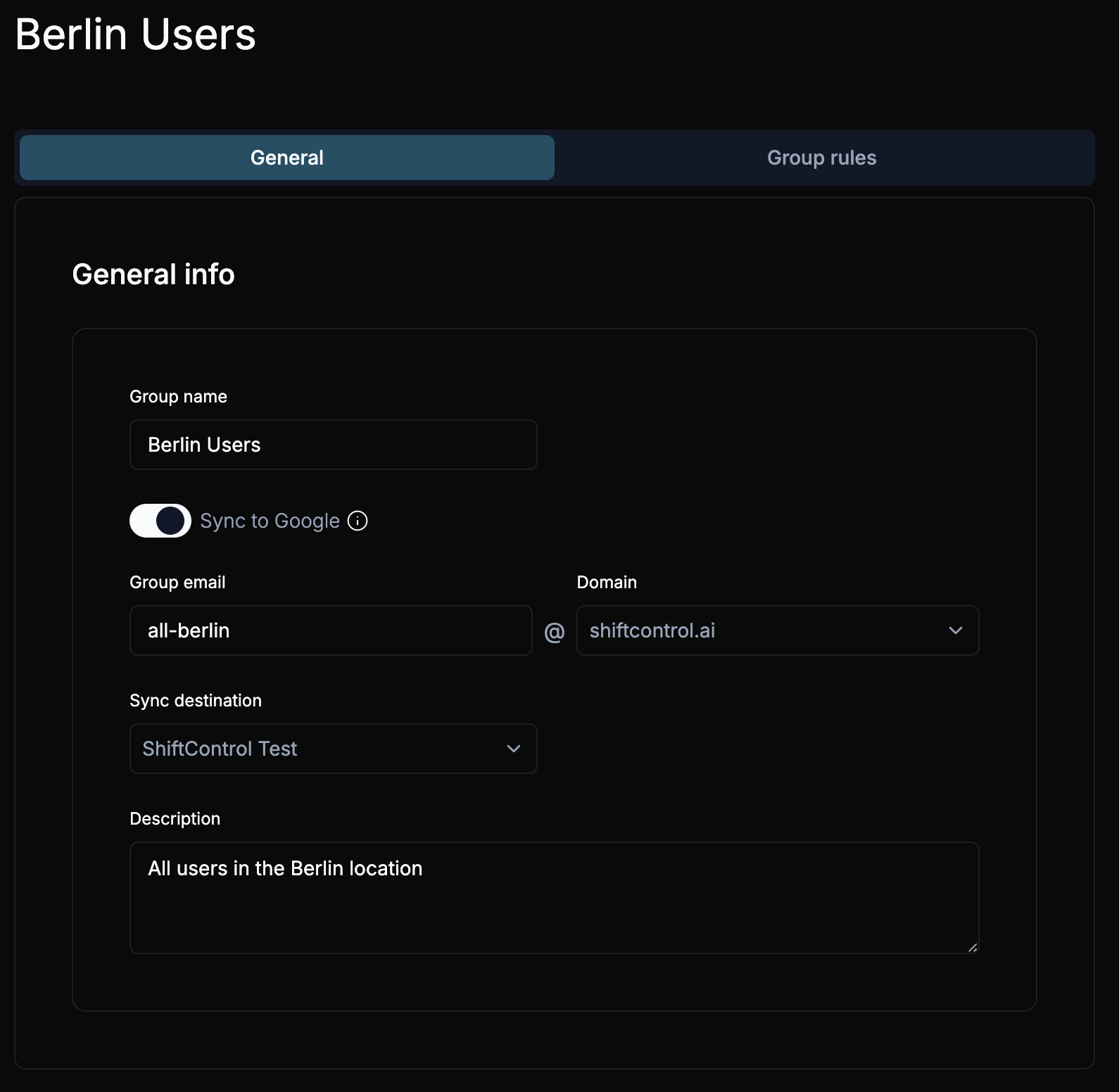
We’ve upgraded how you search and select groups to match the robust experience in people fields. You can now:
Finding and assigning groups or people is now faster, easier, and more consistent.
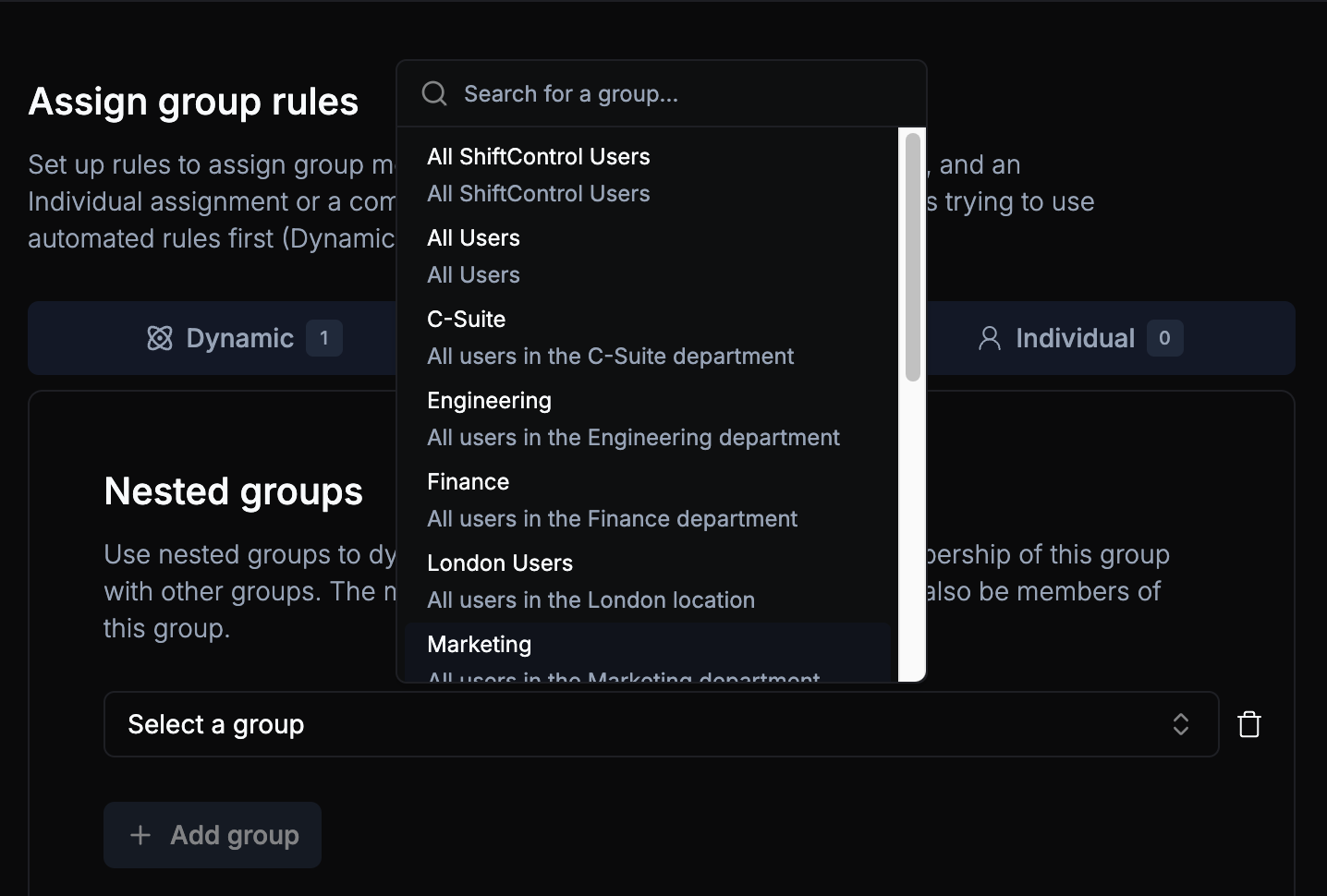
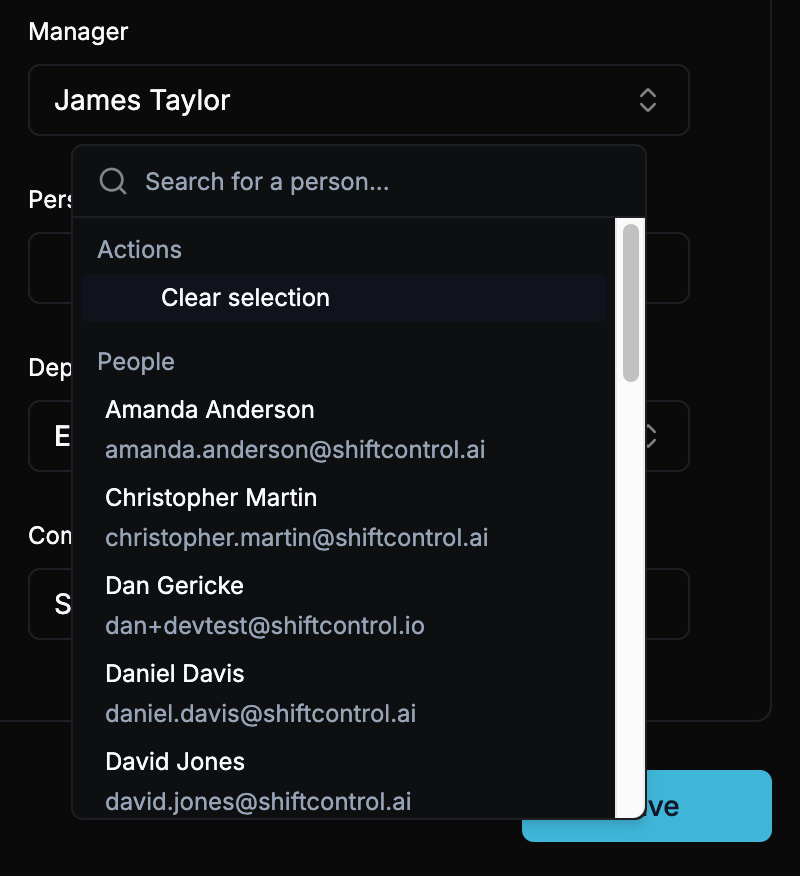
We’ve refreshed the Subscription screen to make terms clearer and more consistent across the app. The changes include:
These changes make it easier to understand your subscription details at a glance, with more consistent wording across all fields.
What it does
You can now zero in on exactly the users you need, instantly.
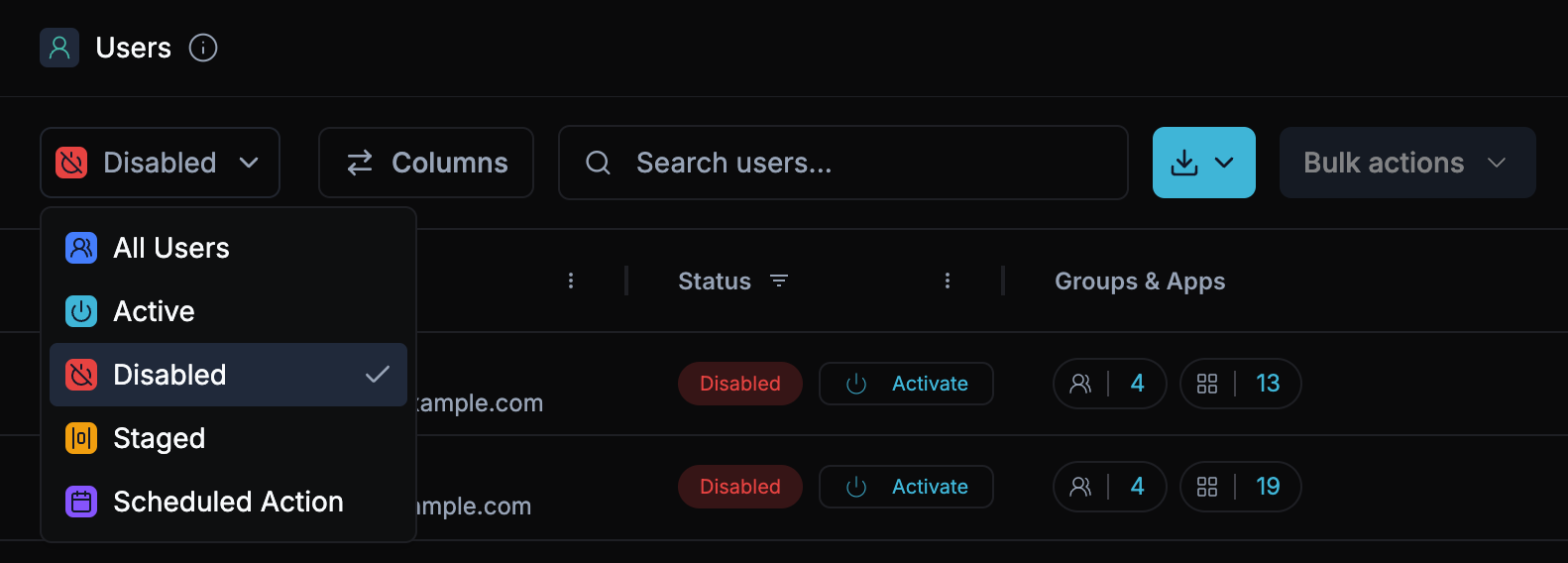
Filter options
Why you’ll love it
Jump into Users in the menu, pick a state from the dropdown, and work with just the slice of your roster that matters right now.
The header checkbox now selects only the rows that match your current filters instead of every row in the table.
Try it out
Filter any table, hit the header checkbox, and enjoy precise multi-row actions that match exactly what you see.
Need to bring a batch of previously disabled accounts back online after a temporary freeze or cleanup? You can now re-enable multiple users in one swift move! Simply select the disabled accounts and hit Enable in the Bulk Actions menu. It’s a speedy quality-of-life upgrade that gets everyone back to work without the click marathon.
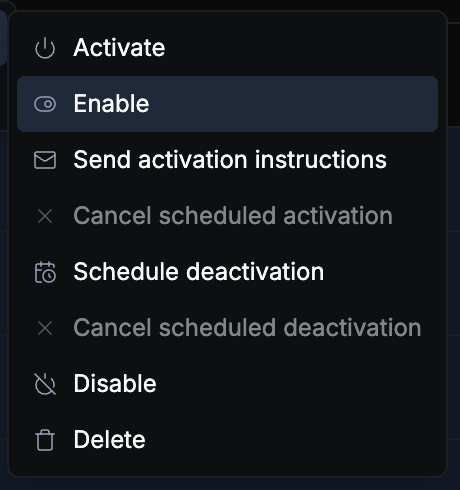
Need to tidy up an org—or quickly handle big changes like layoffs or seasonal off-boarding? You can now select multiple users and hit Delete from the Bulk Actions menu to remove them all at once. It’s a small quality-of-life boost that makes large-scale clean-ups faster, simpler, and a lot less click-heavy.
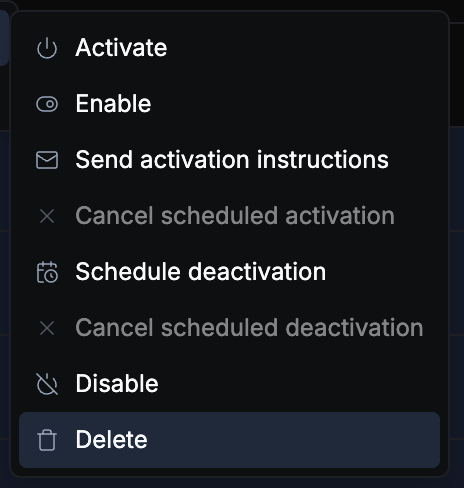
You can now connect OmniHR to ShiftControl and let HR data become the single source of truth for user management.
Why it matters
What’s new
How it works
Get started
Enjoy hands-off user management, smoother onboarding, and a tighter security posture with the new OmniHR integration!
You can now connect BambooHR to ShiftControl and let HR data become the single source of truth for user management.
Why it matters
What we fixed vs. JumpCloud’s built-in connector
How it works
Get started
Enjoy cleaner user data, smoother onboarding, and tighter security with our new BambooHR integration!
Understanding who has access to what is only half the battle, knowing how much you’re spending on your SaaS stack (and where that spend actually lands) is just as critical. Our new App Spend Intelligence Dashboard gives you a clear, actionable view into your SaaS costs. making it easier to spot trends, cut waste, and stay on top of renewals.
Whether you’re responsible for budgets, renewals, or just trying to wrangle sprawling SaaS usage across departments, this dashboard has you covered.
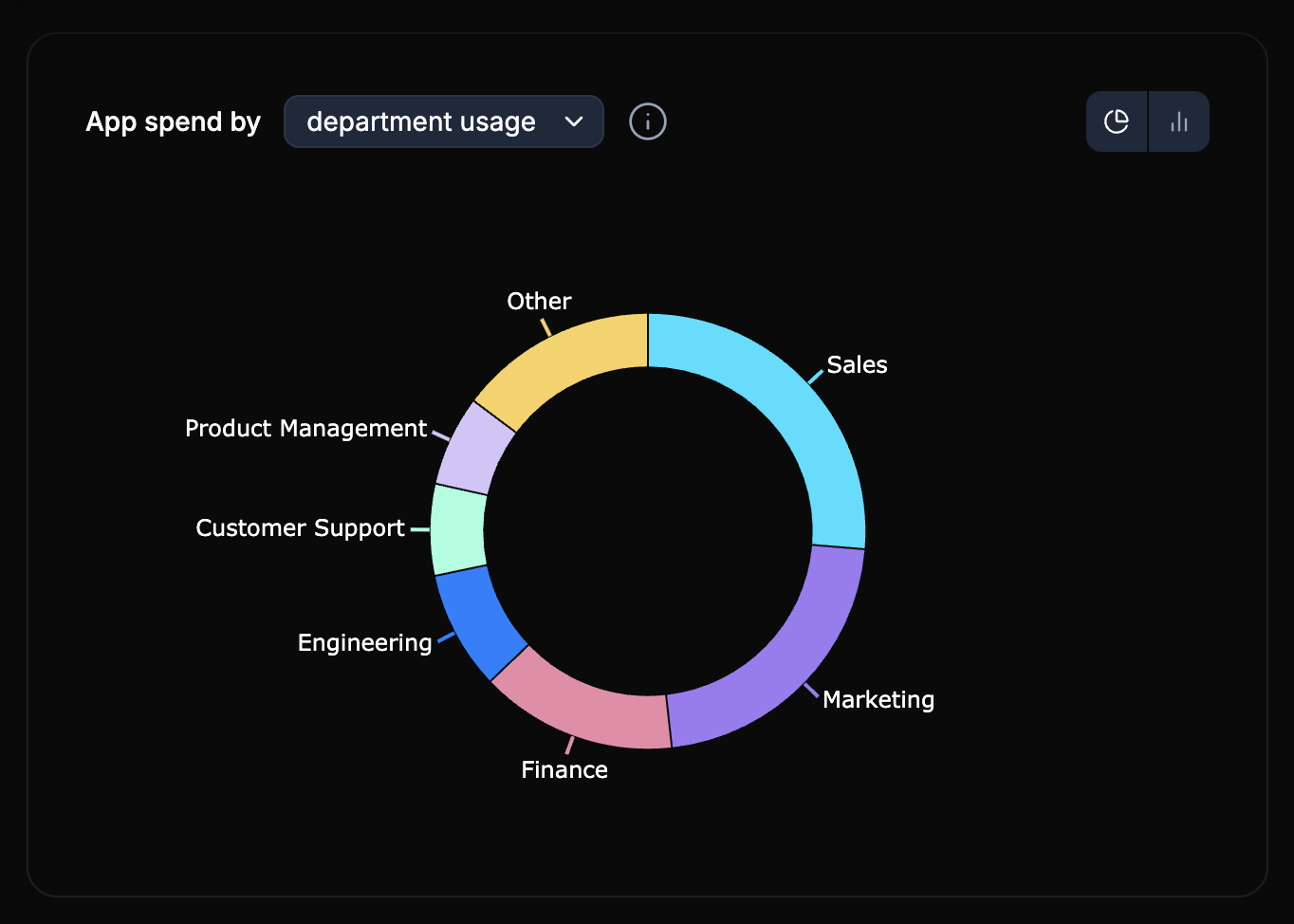
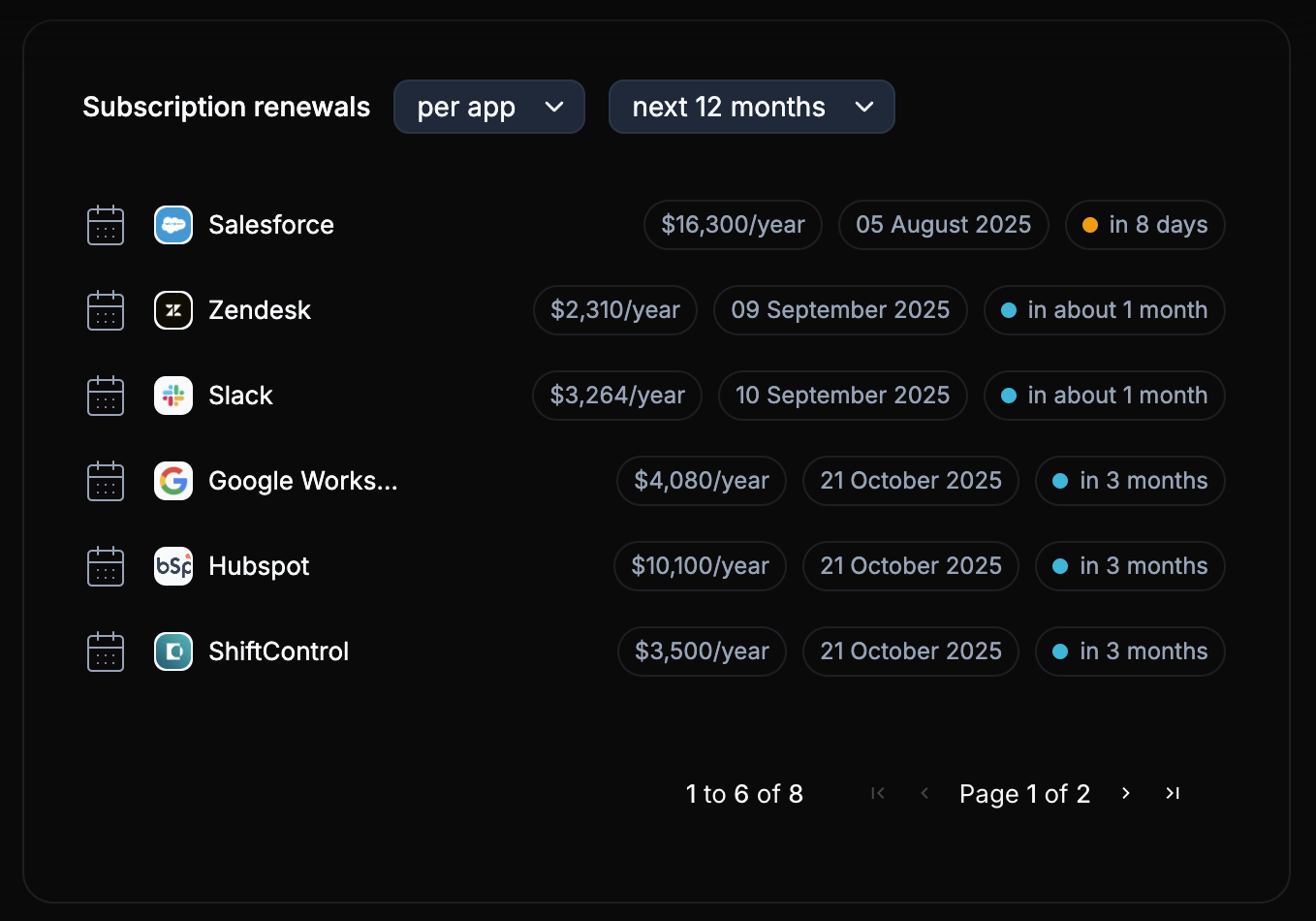
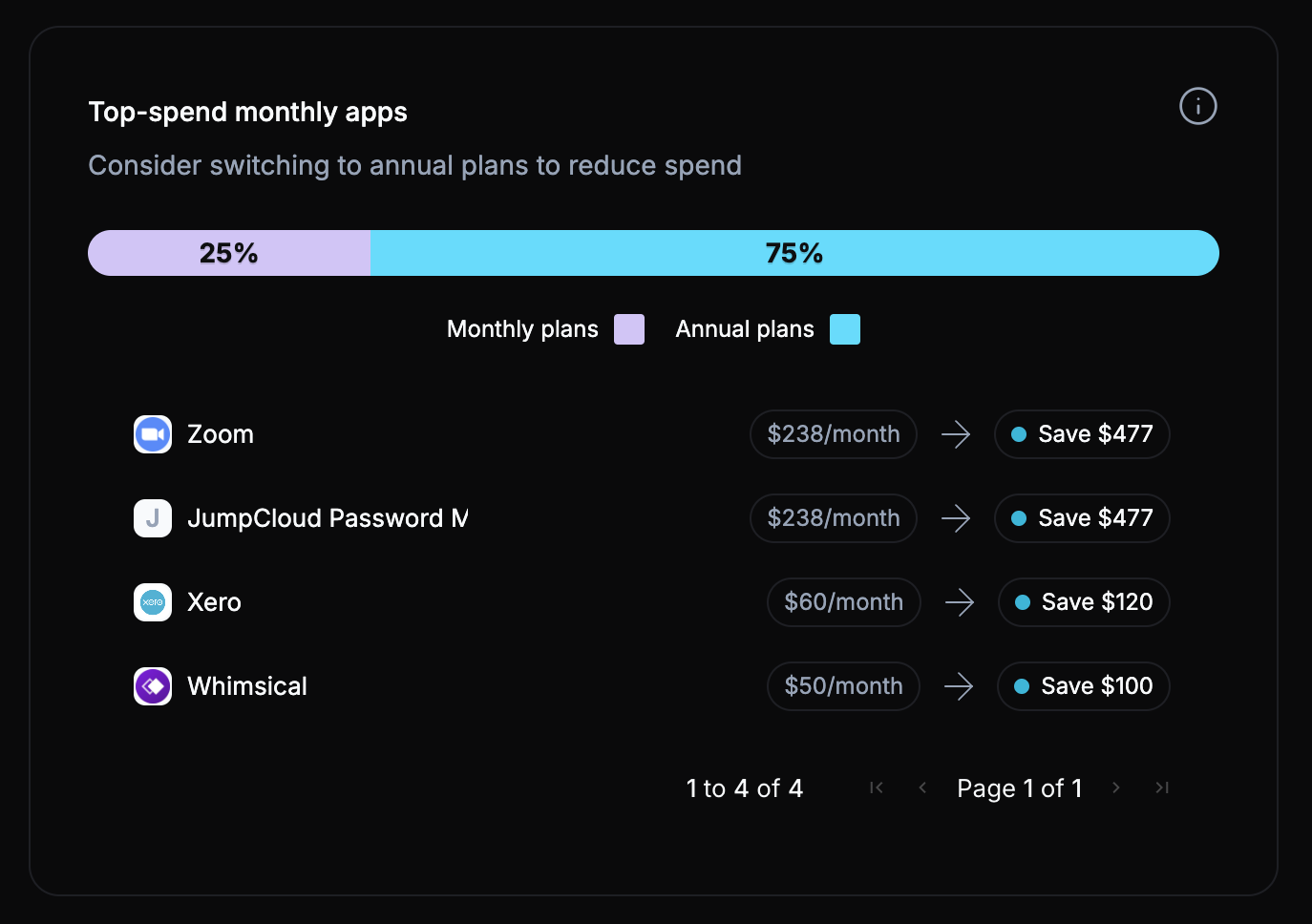
🧮 See your SaaS at a glance
View your total number of apps, active users, annual vs monthly costs, and the average cost per active user, instantly.
📊 Break down spend by ownership and usage
See how SaaS costs are assigned (who owns the budget) vs. how they’re actually consumed across departments. Great for untangling shared usage and internal chargebacks.
📆 Stay ahead of upcoming renewals
Get a forward-looking view of contract renewals so you can take action before you’re auto-renewed into another year of spend.
💡 Catch easy savings
See which of your top monthly spend apps could be converted to annual plans, complete with savings estimates.
📈 Spot your top dollar burners
Quickly identify the apps eating the biggest portion of your budget across your entire stack.
🚩 Fill in missing data
We’ll flag apps that don’t have subscription information so you can plug the gaps and make smarter decisions.
🧍 Find high-cost users
Get a ranked list of users with above-average SaaS cost so you can better manage licenses and entitlements.
💱 Convert everything to a currency that makes sense
Even if your contracts span multiple countries and currencies, you can now unify them under a single reporting currency for easy tracking and comparisons.
Check out the demo below!
Keeping tabs on reporting lines shouldn’t require a spreadsheet. With today’s release you can open a live, interactive org chart that shows your orgs users in real time.
Understanding how people connect drives faster approvals, smoother access reviews, and fewer “who reports to who?” moments. The ShiftControl Org Chart keeps itself up-to-date, so you can focus on work instead of diagrams.
Org charts are available to all employees in the employee portal in the navigation sidebar. You can turn org charts off and on for your organization in your organizatio settings by going to the gear menu at the top right as an admin and going to settings.
Check out the video below for a demo!
We’ve polished up the layout across all our management areas to give you more breathing room and better usability:
💻 Full-width tables – Take full advantage of your screen real estate. No more cramped columns.
📌 Sticky headers – Table headers now stay locked to the top while you scroll, so you never lose context.
📐 Tighter title areas – We’ve cleaned up spacing and layout to give you more room to work, with less visual noise.
It’s all part of making ShiftControl feel faster, cleaner, and more delightful to use—every click of the way.
Can you spot the improvements below?

Last week we gave you zippy, in-session caching. This week, we’re going one better.
Your app state—queries, data, filters, and more—now persists across reloads and return visits. Whether you refresh the page or come back tomorrow, everything is right where you left it. No more waiting to re-fetch or reconfigure views.
🕒 The cache sticks around for 24 hours, giving you a snappier, more seamless experience every time you jump back in.
Just one more step toward a smarter, faster, and more reliable workspace.
You can now navigate directly to Users, Groups, and Apps from the side info-panel! Previously, the sidebar gave you useful context—like what groups a user belongs to or which apps are assigned—but you couldn’t click through to manage them.
Now you can. Every item in the sidebar is clickable and takes you straight to the view/edit screen for that object. It’s a small change that makes managing things a lot faster.
We’ve made performance better when you first log in. Previously, we waited until you landed on a specific screen to start running expensive queries—like calculating how many apps users have access to. That meant waiting for a spinner before data appeared.
Now, we load that important information upfront so it’s ready when you need it. No more delays, just instant access to the insights you care about.
We’ve spent the last month or so working behind the scenes on a major update that makes things much faster, not only for our users, but also in terms of us shipping updates!
🏎️ Zip between pages instantly – once a view loads the first time, you can bounce anywhere in the platform with near-zero wait.
🔄 Live, auto-refreshing data – the app silently re-fetches updates in the background and refreshes your screen on the fly, so you always see the latest info without hitting reload.
🛠️ Edit without interruption – create, update, or delete records and watch the changes appear in place.
🗂️ State that sticks – your filters, sorts, and scroll position stay put as you explore, so you can pick up exactly where you left off - and we’ll soon make this perisistent across your visits too!
📉 Fewer network calls, smoother feel – smarter caching cuts traffic and keeps things snappy even on slower connections.
🚀 Built for what’s next – this new data engine unlocks offline-ready capabilities and richer dashboards rolling out soon.
We’ve completely re-engineered how tables work across the platform, and the difference is immediate:
🔍 Instant search & filter – type or click to zero in on the data you need.
↕️ Drag-and-drop columns – reorder, auto-size on double-click, or pin key fields so they stay put. We remember your layout next time.
📑 Hide or show columns – tailor each view with a simple checkbox menu.
🎯 Contextual actions at every header – sort, filter, resize, pin, or export without leaving the grid.
📋 Copy anything – select rows or cells and copy straight to your clipboard.
📊 One-click export – download the current view (filters, order, and all) to CSV or Excel from any table.
⌨️ Keyboard-friendly & accessible – navigate, select, and act without lifting your hands from the keys.
These upgrades are live everywhere in the platform. Watch the quick demo video to see them in action and start exploring your new super-charged grids!
We recently shipped a popular update that you to easily convert a bookmark app to a SSO app without losing any data. We realized that people also needed to move from SSO back to bookmark as well, and you can now do that!
We’ve also moved from the term upgrade to convert. After all, moving between SSO and Bookmark apps isn’t an upgrade or a downgrade, they’re just different!
Check out the quick video!
When taking action on an application like deleting or upgrading it, you’ll now immediately get more context by seeing the app’s logo along with the name and description.
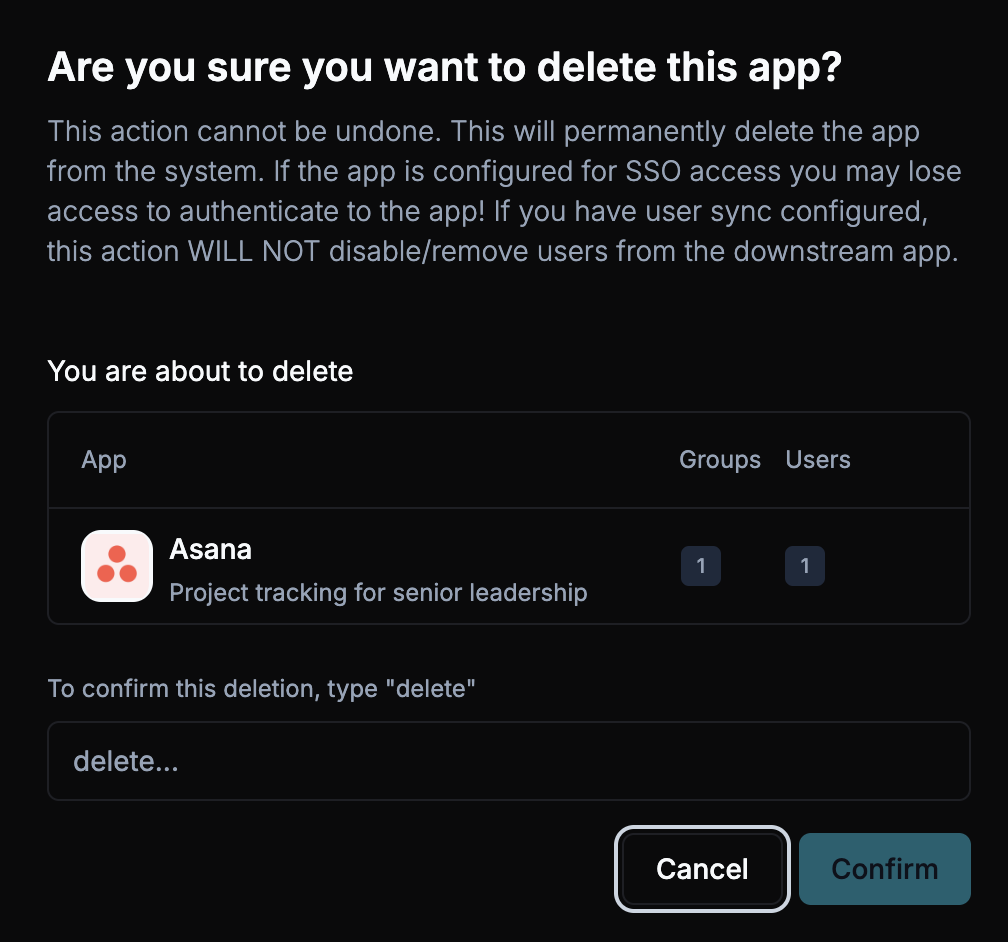
Say goodbye to tedious manual steps! Now you can effortlessly convert any bookmark app to a full Single Sign-On (SSO) app right within ShiftControl. Simply select the new “Upgrade to SSO” option from the app menu, and ShiftControl will handle the rest—creating your new SSO app, transferring metadata and group assignments automatically, and cleaning up the old bookmark.
Watch this quick demo to see it in action!
We gave the gear and tasks menu (top right!) a behind-the-scenes upgrade. Ever area in that menu now loads more dynamically, with clearer visual cues when things are updating or saving. It’s faster, snappier, and way less “did-that-even-work?” vibes.
When you delete a user who manages other people, we’ll ask what you’d like to do with their direct reports. Pick a new manager to take over—or leave the role blank if you’re reorganizing. No more mystery managers or abandoned org charts!
We’re excited to announce a new integration feature for ShiftControl: Box. This addition is designed to enhance your digital workspace by seamlessly connecting with Box, a leading cloud content management and file sharing service.
You can now connect your Box application and keep an accurate view of the your users and fully understand your license usage.
To start using the Box integration, simply navigate to the integrations section in your ShiftControl dashboard and follow the setup instructions.
We’ve rolled out frontend Role-Based Access Control (RBAC) across ShiftControl! This upgrade builds on our earlier RBAC API release and brings smarter access management and a better user experience to the UI. Under the hood, this is a lot of work, as each button, screen, widget, toggle, and more checks to make sure you have the right permissions.
Check out the video and read below to see what’s new!
Every screen where you can make changes — Users, Groups, Apps, Subscriptions — now has a dedicated View Mode. No more jumping into an edit screen just to peek at some data. It’s a smoother, cleaner way to inspect without touching anything.
We’ve improved the way you navigate ShiftControl. Now, clicking the name of a user, app, or group takes you straight to its View page. This aligns with what many of you were already trying to do (we saw you clicking!) — and just feels more natural.
You can now assign a Read-Only Admin role — perfect for finance teams, auditors, or curious co-founders who need visibility into users, apps, and subscriptions but shouldn’t be changing anything. It’s a safer way to share access, without compromising your setup.
Coming Soon: More granular roles like User Admin, App Admin, Group Admin, and beyond — so you can delegate more confidently without going full super-admin.
Check out the preview of the Read Only view for the Users, Groups, and Apps areas below!
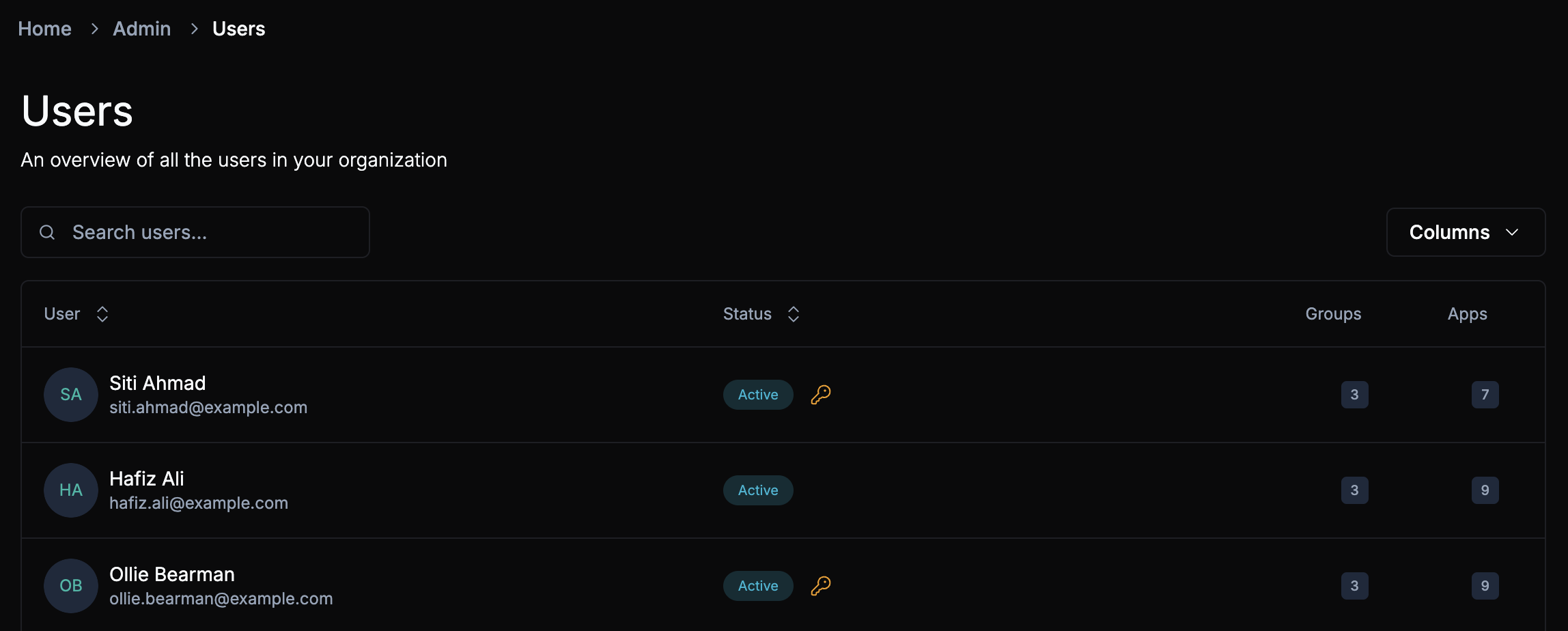
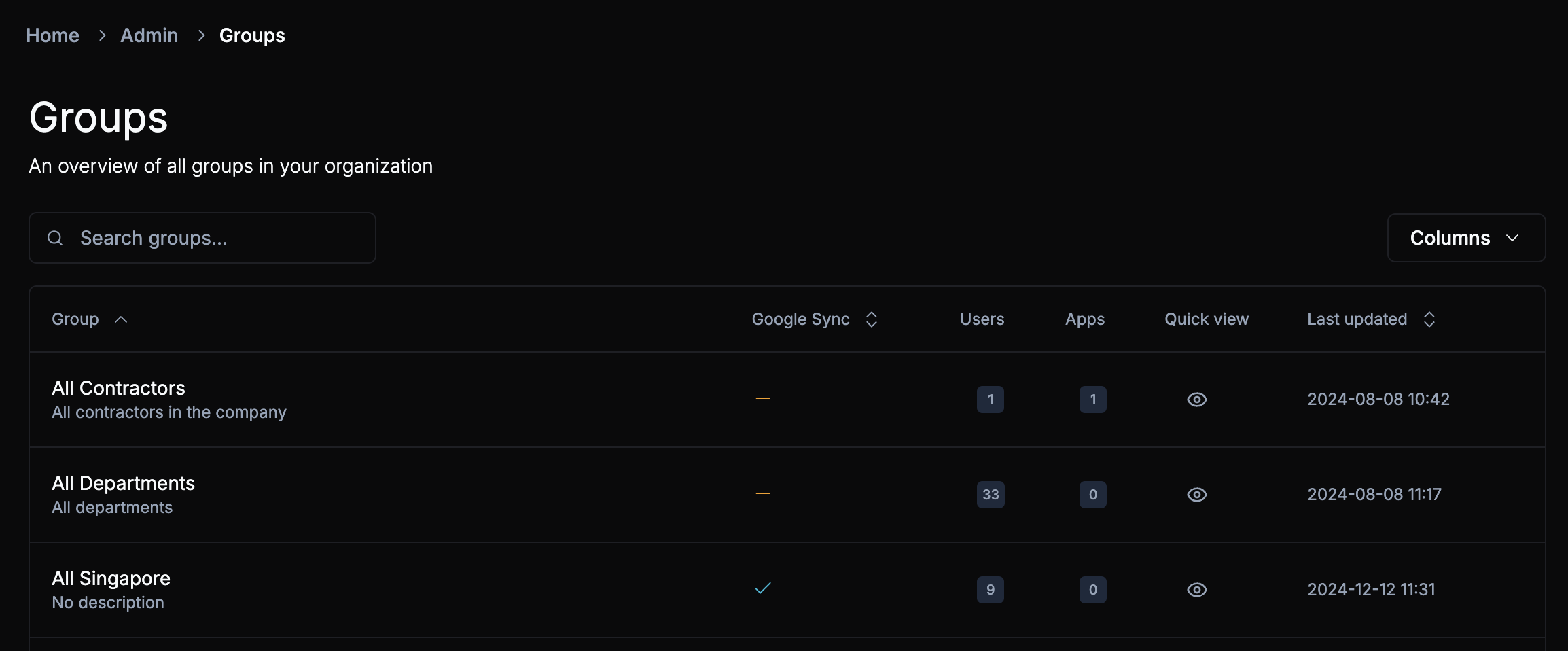
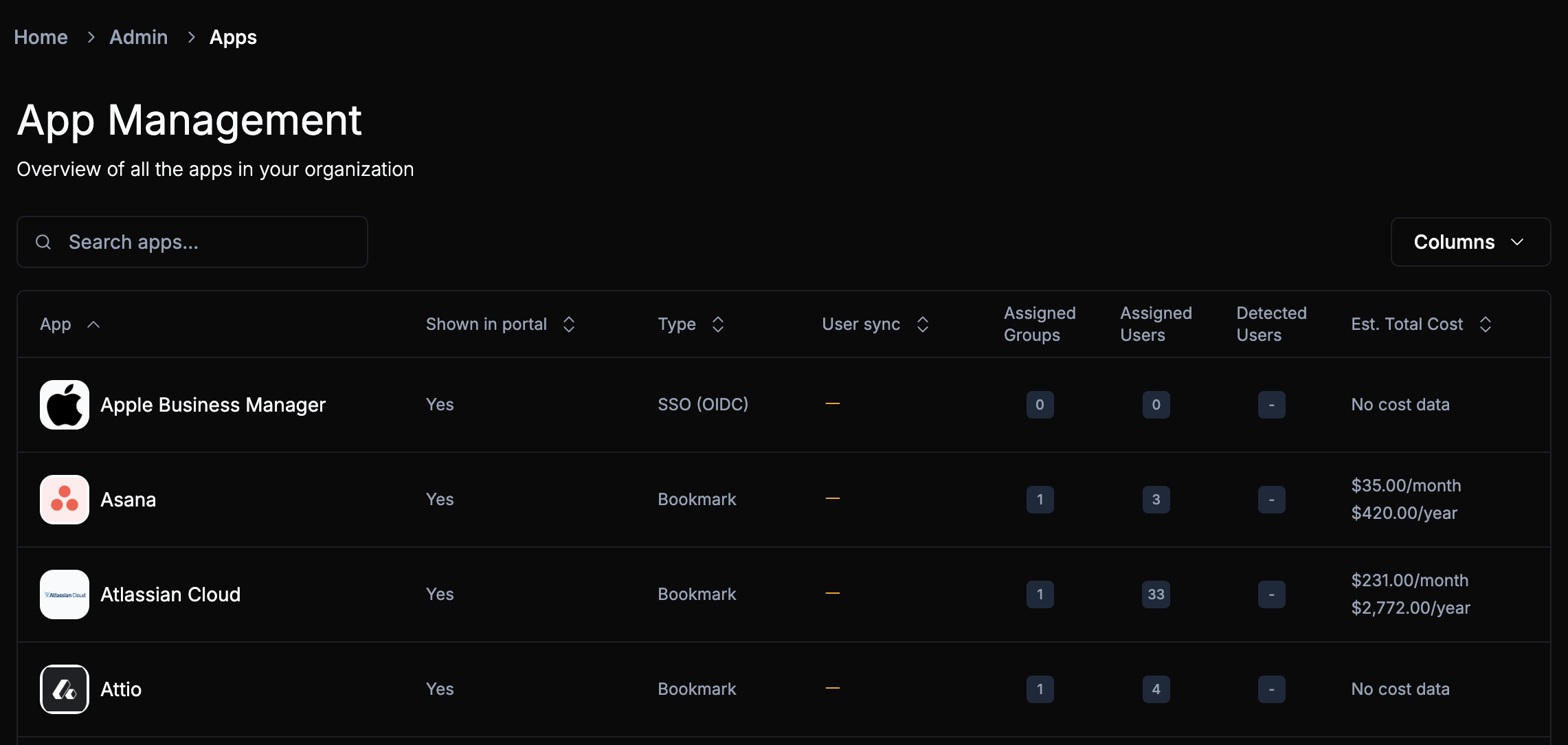
We’ve given our app catalog a major refresh! 🎨
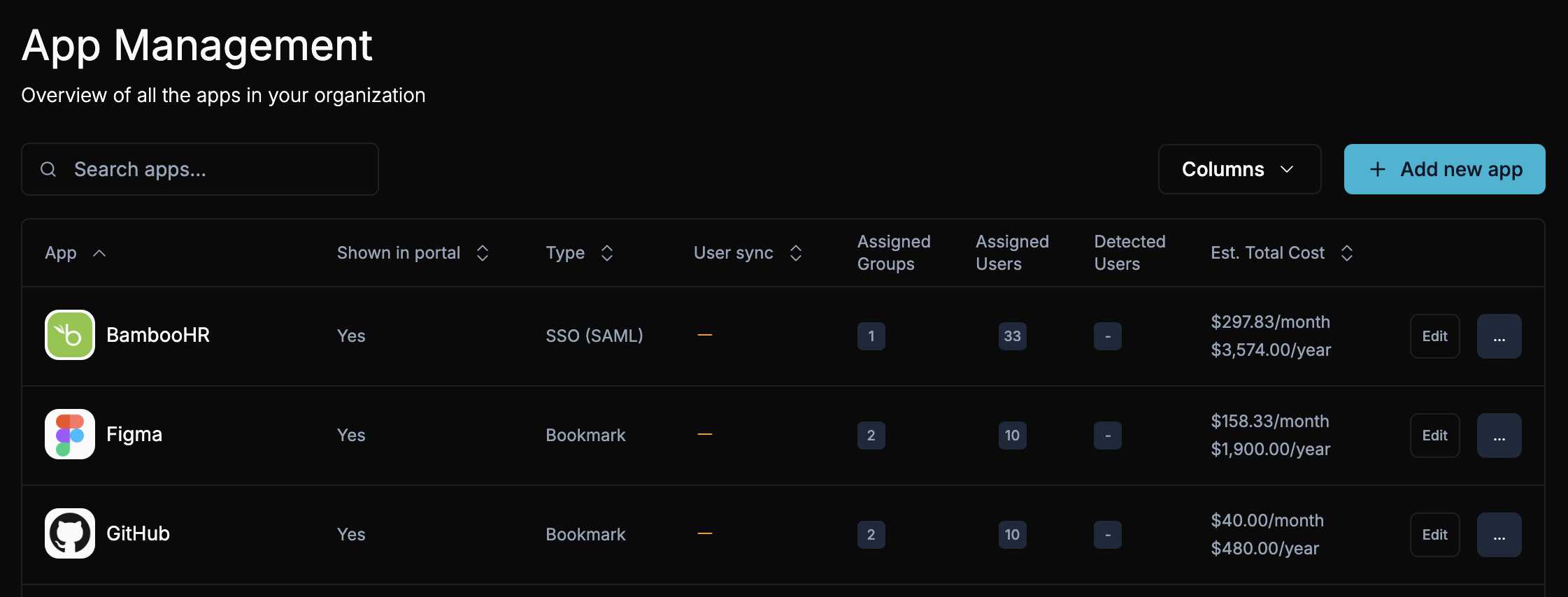
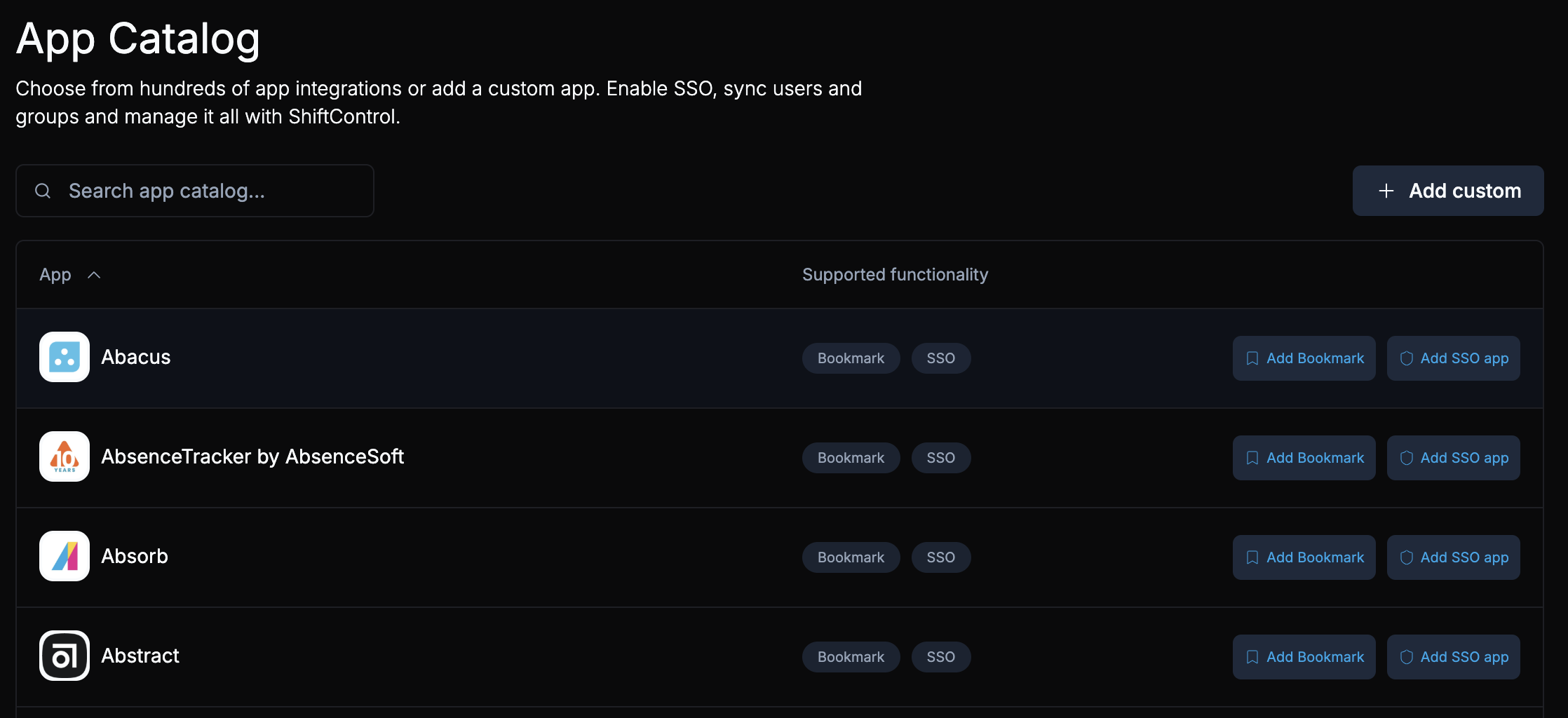
A more polished and informative experience, all without lifting a finger.
We’ve made dropdowns even more flexible—now you can effortlessly remove your selections by clicking “Clear selection” or the handy “X” button. Small improvement, big convenience!

We’ve added helpful links directly to confirmation alerts, letting you instantly jump back to the group or item you just edited—saving you clicks and keeping things clear!
Check it out in action below.
No more clicking around to find what matters most! Now, when you edit apps and groups, the tab with active config items is front and center by default. Because let’s be honest—who actually wants to start on a tab that you’re not using? 🎯
Now, there’s no mystery when deleting groups synced with Google Workspace! When you’re about to delete a synced group, you’ll clearly see exactly what will—and won’t—happen. We explain that the group itself won’t be removed from Google Workspace, but syncing will stop. You can then confidently manage your groups without surprises!
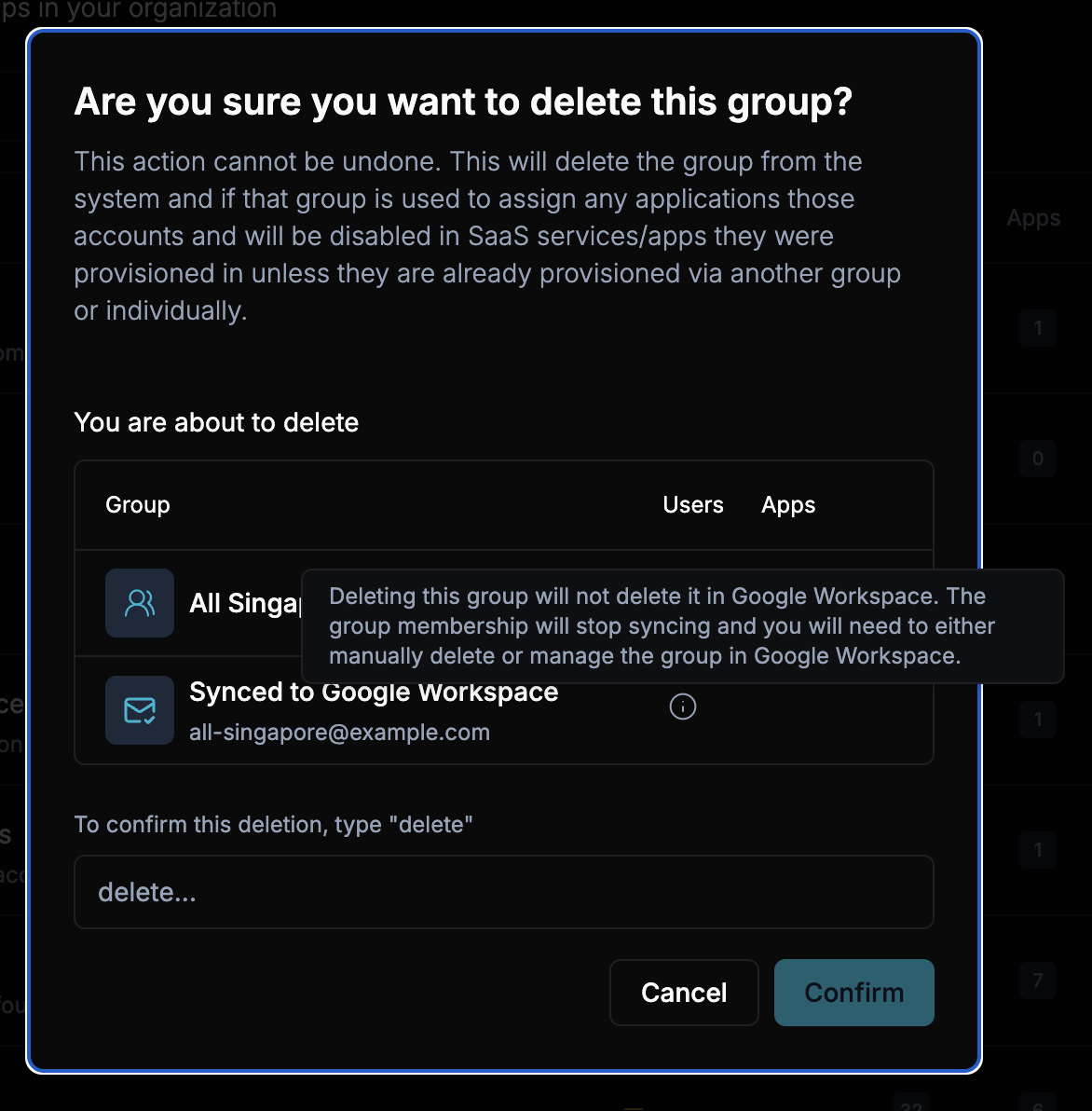
We’ve taken the guesswork out of authorizing your integrations! Now, when adding or updating integration authorizations, you’ll see clear, step-by-step instructions guiding you through exactly what’s needed and what screens you’ll encounter next. Whether you’re integrating Slack or another service, simply follow the instructions, approve the permissions, and voilà—you’re seamlessly connected!
Check out this quick video to see it in action!
You can now easily view and manage your users’ MFA factors within ShiftControl. If a user replaces their phone or encounters MFA issues, simply remove the problematic factor, and they’ll be prompted to set up MFA again at their next login. No hassle, and no downtime!
Watch this quick video to see how smoothly it works!
Your employees can now effortlessly view and manage their Multi-Factor Authentication (MFA) devices directly in the employee portal. Whether it’s a YubiKey, an authenticator app, or built-in device authenticators (Windows Hello, Apple fingerprint), your team can rename, organize, or even remove devices seamlessly. Keeping security simple—and fully under your control.
Check out this quick video to see it in action!
You can now easily upload custom logos for your apps! Simply click or drag-and-drop logos directly in ShiftControl, and they’ll appear instantly in your employee portal. Stay tuned—these custom logos will soon be featured in even more places!
Watch this quick demo video to see how simple it is!
We’ve improved user activation in ShiftControl! Previously, activating users always sent an immediate activation email. Now, you can activate user accounts ahead of their start date without notifying them right away. This lets you pre-provision accounts, schedule meetings, and set up access in advance. When you’re ready, easily send activation instructions to their company or personal email—or simply set a password directly during onboarding. Activation now fits your workflow perfectly!
Check it out in action below.
Managing JumpCloud admins just got simpler! Previously, you had to handle JumpCloud admin roles separately in JumpCloud itself. Now, you can seamlessly add, edit, or disable JumpCloud admins right from ShiftControl. Set roles (like Admin, Help Desk, or Read-Only), toggle API access, and even trigger onboarding emails instantly—all in one convenient place.
Watch this quick video to see it live in action!
Our Employee Portal and Login Pages are now fully optimized for mobile devices. Whether you’re signing in or managing your profile on the go, you’ll experience a smoother, more responsive interface—no more zooming, pinching, or frustration.
🔹 Better navigation on smaller screens
🔹 Touch-friendly design for effortless interactions
🔹 Faster load times for a seamless experience
Managing your JumpCloud integration just got easier! If you bring your own JumpCloud, you no longer need to contact support to update your API key. You can now update it yourself directly from the ShiftControl UI—no more back-and-forth with support, just a simple and seamless update process.
You can now connect ShiftControl to your Slack workspace! 🎉
This new integration allows ShiftControl to pull user information from Slack, helping you verify that the number of assigned Slack users matches what’s in ShiftControl. Additionally, we collect user metadata—such as identifying workspace owners and admins—which will soon be surfaced in the platform to give you deeper insights into your Slack environment.
Check out a quick demo below!
🔮 What’s Next?
This is just the beginning! In the near future, our Slack workbot will enable interactive features, such as letting users query their app assignments directly in Slack. Stay tuned as we expand its capabilities to make managing your SaaS tools even easier.
To get started, head to Integrations in ShiftControl and connect Slack today!
We’re taking ShiftControl integrations to the next level! We recently announced our partnership with Workato, leveraging their powerful automation engine to accelerate how we build and deploy integrations—all while keeping customer data securely isolated in tenant-specific instances.
Now, we’ve completed the heavy lifting to seamlessly link our integrations page with Workato behind the scenes. For our customers, the experience remains familiar: you’ll still enable and manage integrations just like before, but now, when you connect an app, ShiftControl automatically links that authorization to a set of managed automation recipes.

🔥What This Means for You
• More powerful integrations, faster – We can now build and roll out integrations at scale with deeper insights.
• Richer application data – Get metadata like subscription details, license usage, and user access to ensure your records match reality.
• Better user insights – Identify unused licenses, active admins, and unexpected access with enriched user data.
• Future-ready automation – The types of integrations we can create are virtually limitless, and we’re committed to delivering new ones frequently.
This is just the beginning—expect to see more integrations, more automation, and even better control over your SaaS stack in the coming weeks! 🎯
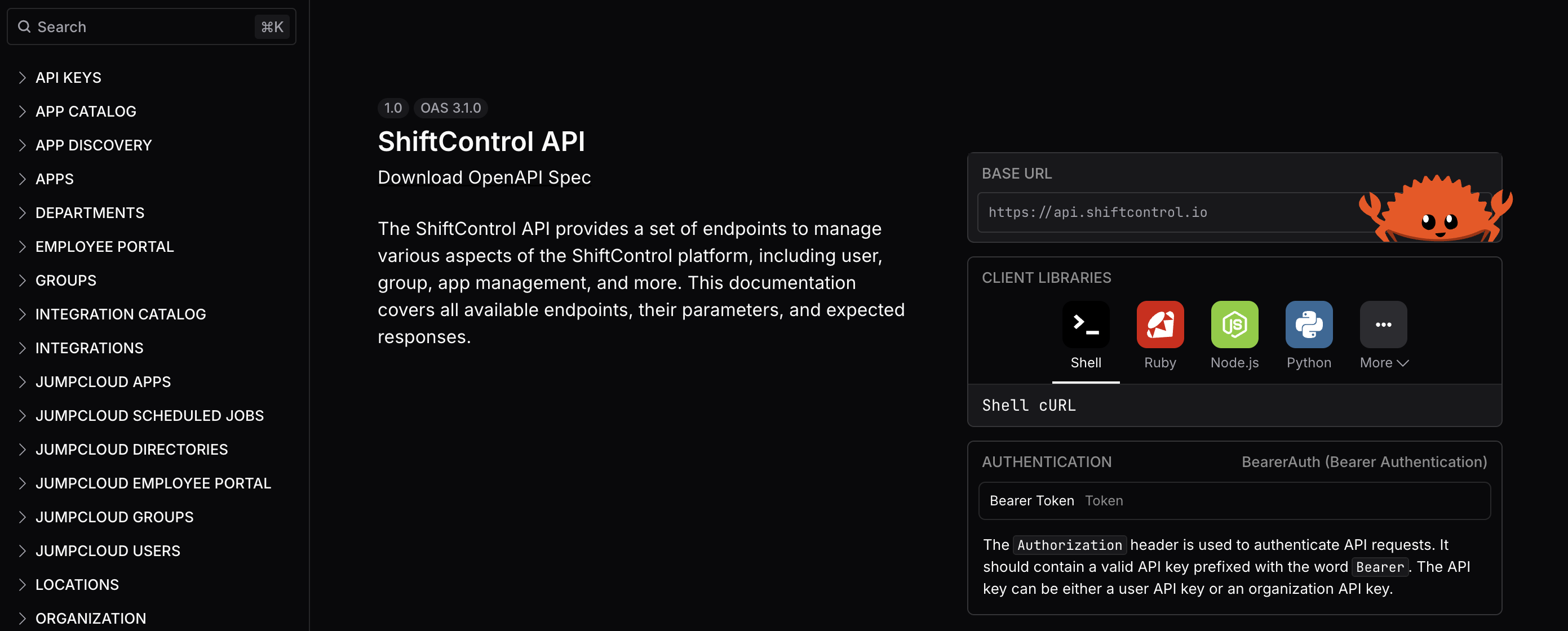
We’re excited to share that our API documentation is now fully available for you. This update brings several key improvements that simplify integration and enhance your experience:
• Complete API Specs: You can now download the OpenAPI spec file to use locally with tools like Postman. This makes testing and integrating with our API more straightforward than ever.
• Interactive Online Docs: Access our API docs online to explore and test various endpoints directly. This interactive approach helps you quickly understand how to leverage our API in your workflows.
• Enhanced Documentation: We’ve updated our documentation to include details on API specs and clear guidance on managing both User and Org API keys. You can view our ShiftControl documentation for managing API keys and using the API docs here.
• Easy Access to Full Specs: The complete API Documentation and Specs are available at this link.
We usually assume there’s a JumpCloud application that requires deleting when we delete an app in ShiftControl, but sometimes an admin may have deleted the app in JumpCloud and it hasn’t reflected yet in ShiftControl. Now, manually deleting the app will be successful even if there’s no underlying JumpCloud app. You can also just choose to wait for the app to be deleted automatically within 5 minutes.
Sometimes you may want to manage an app directly in JumpCloud, which is perfectly fine. While updating and creating app in JumpCloud was always supported, we now also detect when you’ve deleted an existing app in JumpCloud and remove the corresponding app in ShiftControl.
Note: It may take up to 5 minutes for the app to be deleted in ShiftControl.
We’ve always believed in the power of building our frontend on the same robust APIs that we expose to our customers. From the very start, we offered both user- and org-level API key management for straightforward integration. Now, we’re excited to announce that all of our APIs are fully compatible with both frontend access tokens and these API keys.
Important Permissions Considerations
• User API Keys inherit the same permissions as the user who created them. This means any actions the user can take, the API key can take as well.
• Org API Keys function as top-level administrative keys for an entire organization, granting full access to all available resources within that org.
Documentation for the /app Endpoint
An often requested feature is comprehensive API documentation. We’re thrilled to unveil our first set of docs at https://api.shiftcontrol.io/api-docs, currently focused on the /app endpoint. We prioritized this endpoint in response to our customers’ top requests, and we’re moving quickly to cover all remaining endpoints.
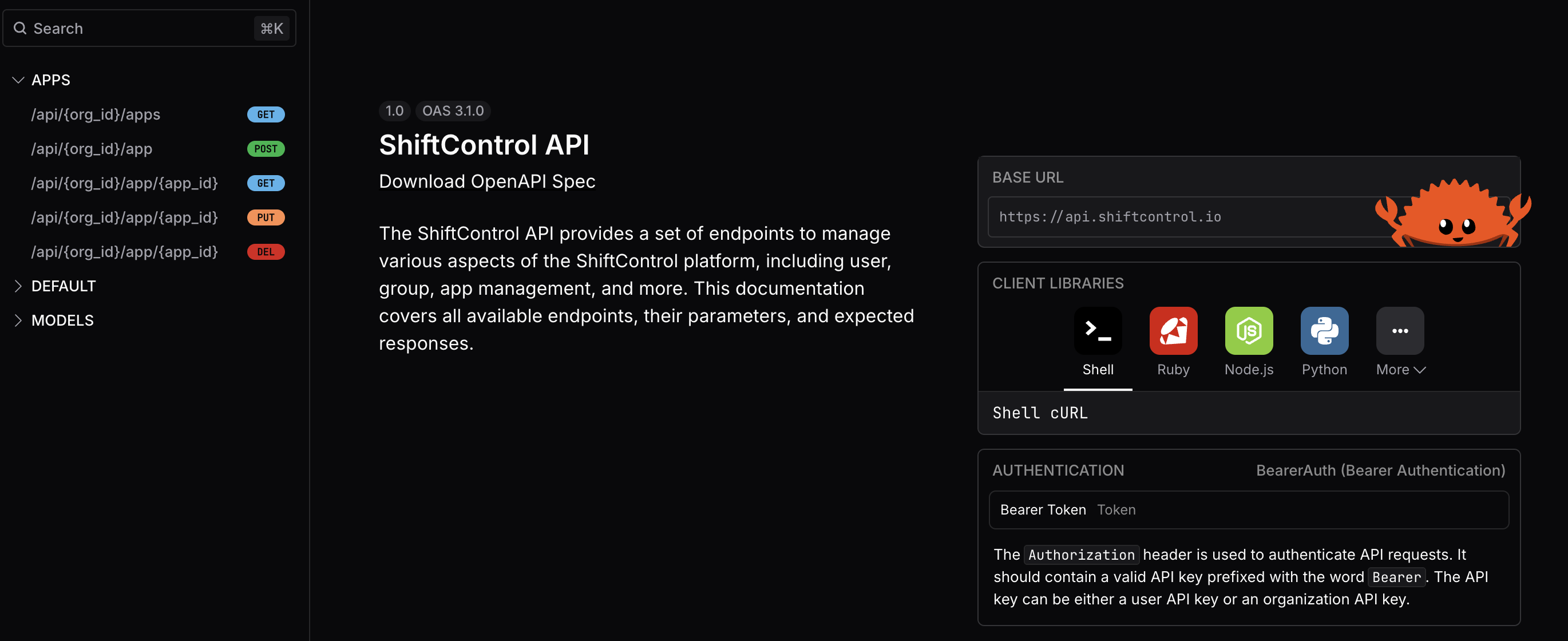
Multiple Formats Available
These new docs are published in OpenAPI, Redoc, Swagger, and more, giving you flexibility to choose the format that suits your workflow best.
What’s Next
We’re actively expanding the documentation to cover all remaining endpoints, so stay tuned for updates. As always, your feedback is invaluable to us—let us know how these enhancements help you build faster and more securely.
While most SaaS services default to SAML, OIDC is becoming increasingly popular as an option in more services. Software development companies, in particular, often rely on OIDC for testing apps or securing internal tools behind an OIDC login mechanism. To better support these scenarios, we’ve added the capability to manage OIDC apps within our platform.
This new feature allows full configuration of OIDC app parameters, including the attributes and claims you want to send to those apps.
This enhancement simplifies app testing and internal tool access, making it easier to tie everything to your employee identity for a unified and efficient workflow!
Start exploring OIDC app support today!
We’re excited to introduce a smoother, more personalized sign-in experience for all ShiftControl users!
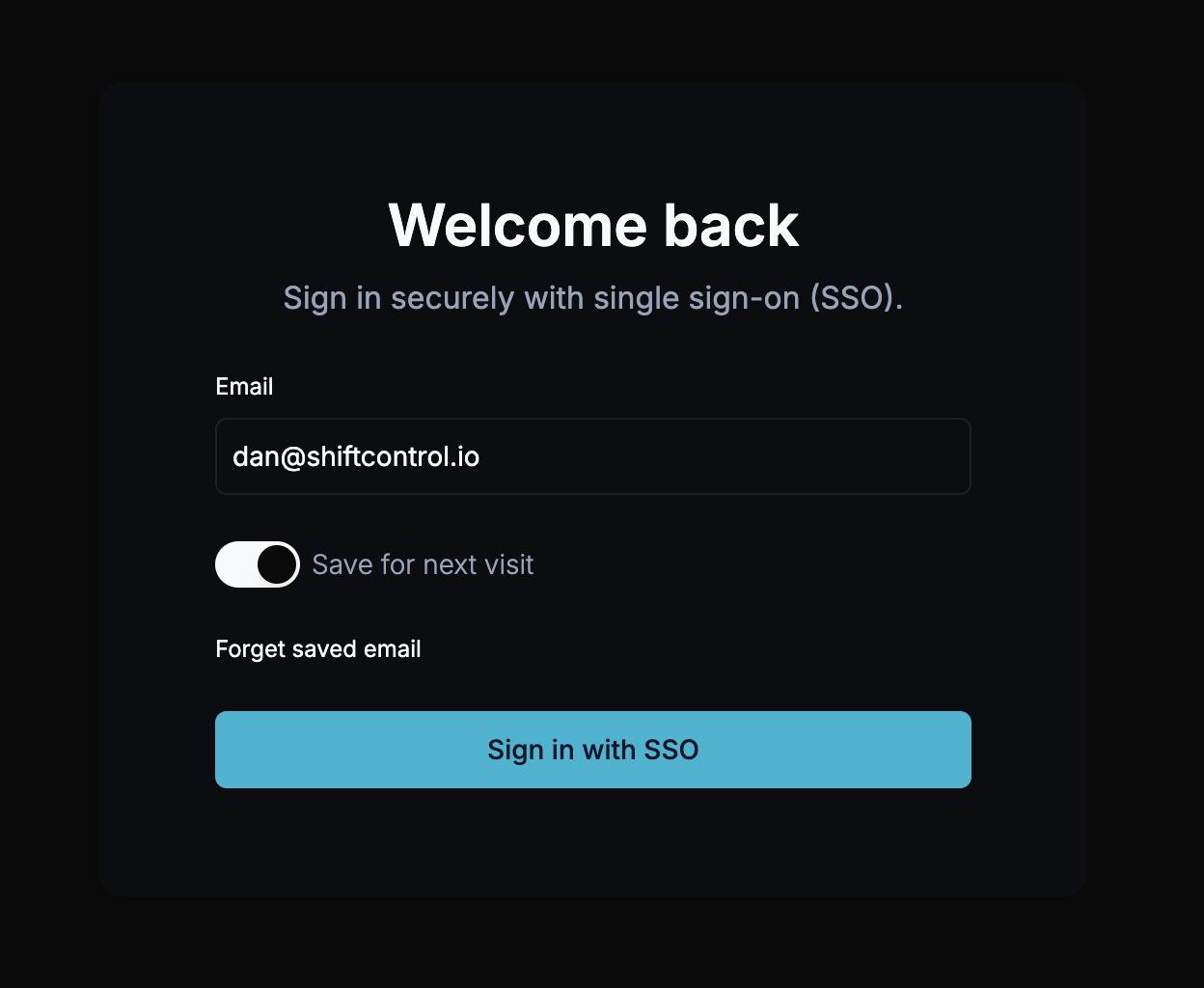
🔐 Streamlined SSO Login
All sign-ons are exclusively via Single Sign-On (SSO), ensuring secure and consistent access for every organization.
💾 Remember Your Email
You can now choose to save your email for your next visit, making it even easier to start your day with ShiftControl.
🔄 Seamless Workflow Integration
Once you log in, you’ll be automatically redirected to JumpCloud for authentication and then sent straight back to your ShiftControl dashboard—no extra clicks needed!
This upgrade makes ShiftControl the perfect starting point for your daily workflow.
Try it out and enjoy a faster, smarter login experience!
We’re excited to announce a major update to ShiftControl—a brand-new Employee Portal designed to simplify and enhance how every employee accesses their essential tool
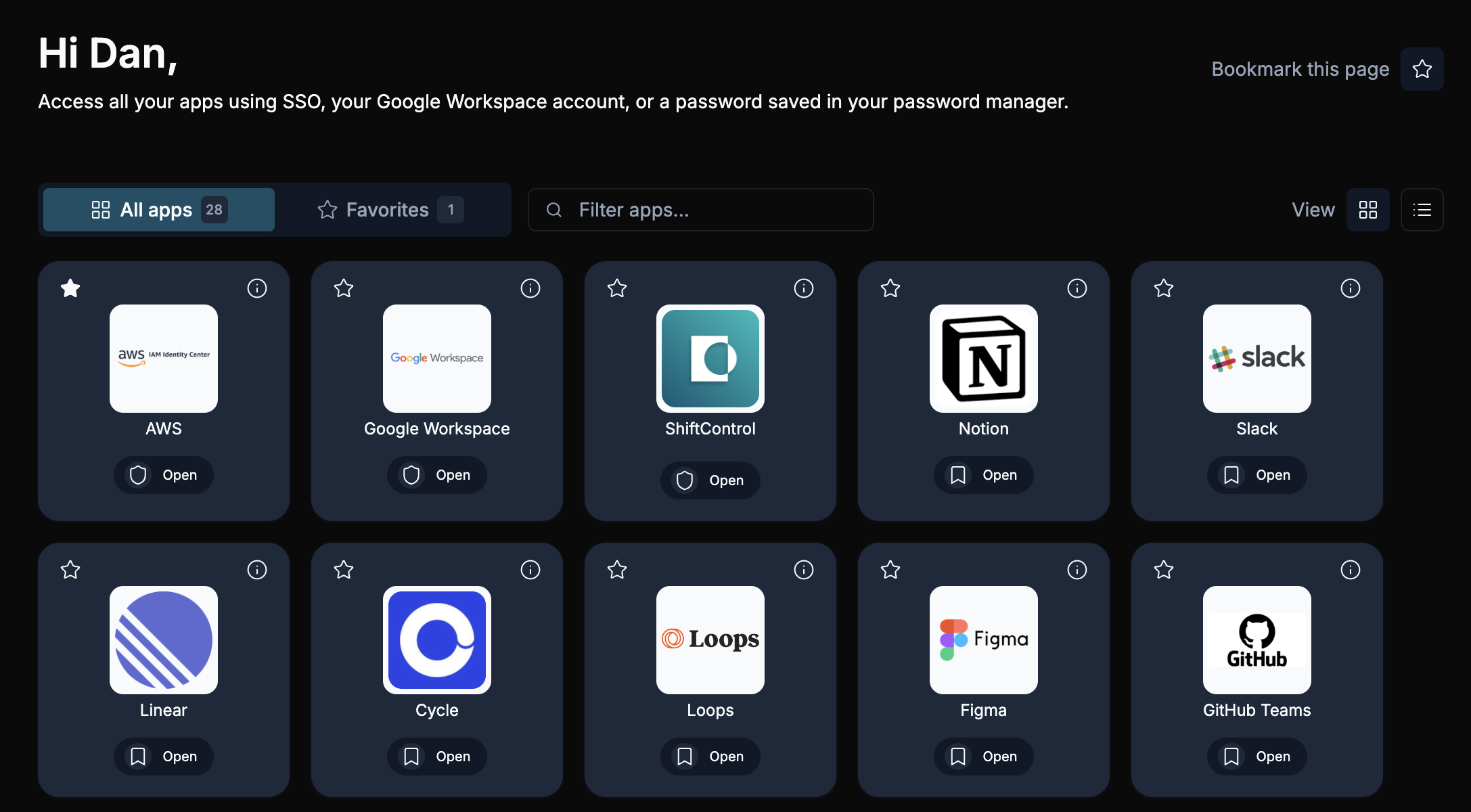
🔑 From Admin-Only to Everyone
ShiftControl is no longer just for admins. Now, every employee can log in and enjoy a streamlined, customizable experience that serves as the gateway to all their work applications.
📂 Your Apps, Your Way
• Reorganize app cards to prioritize your most-used tools. • Mark Favorites to quickly access what matters most. • Personalized Layouts that stay consistent across sessions and devices.
💡 Better Than Ever
This new experience is a major upgrade from the JumpCloud console. While both the ShiftControl Employee Portal and JumpCloud console will remain available, we believe most employees will find ShiftControl to be a more user-friendly and efficient hub for daily work.
🔮 More to Come!
We’re just getting started. Soon, you’ll see new features like:
• Org Charts for easier team visibility • App Access Requests for smoother onboarding
We’re excited to announce a significant security and management upgrade—Role-Based Access Control (RBAC) is now live in ShiftControl!
🛠️ Admin and Employee Portals
RBAC powers our newly launched Admin Portal and Employee Portal, giving users access tailored to their roles. Admins can manage users, apps, and settings, while employees enjoy a streamlined portal to access their essential tools.
👤 Easily Manage User Roles
Admins can now assign roles directly in the User Roles section, allowing seamless promotion of users to admin status or keeping them as standard users.
You can manager roles in your Org Settings → User Roles area.
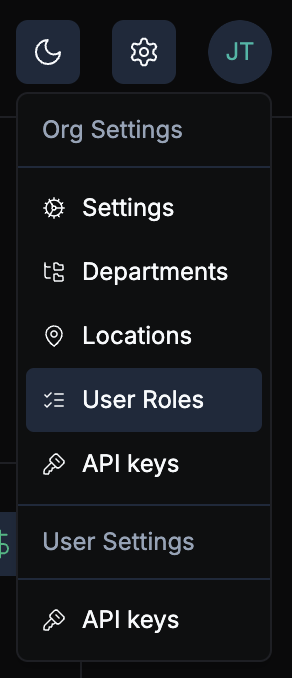
🔑 API-Ready Permissions
We’ve already laid the groundwork for fine-grained permissions at the API level, ensuring future roles will have precise access controls.
🚀 What’s Available Now:
• Admin Role: Full access to manage users, groups, and settings.
• User Role: Access to the personalized Employee Portal.
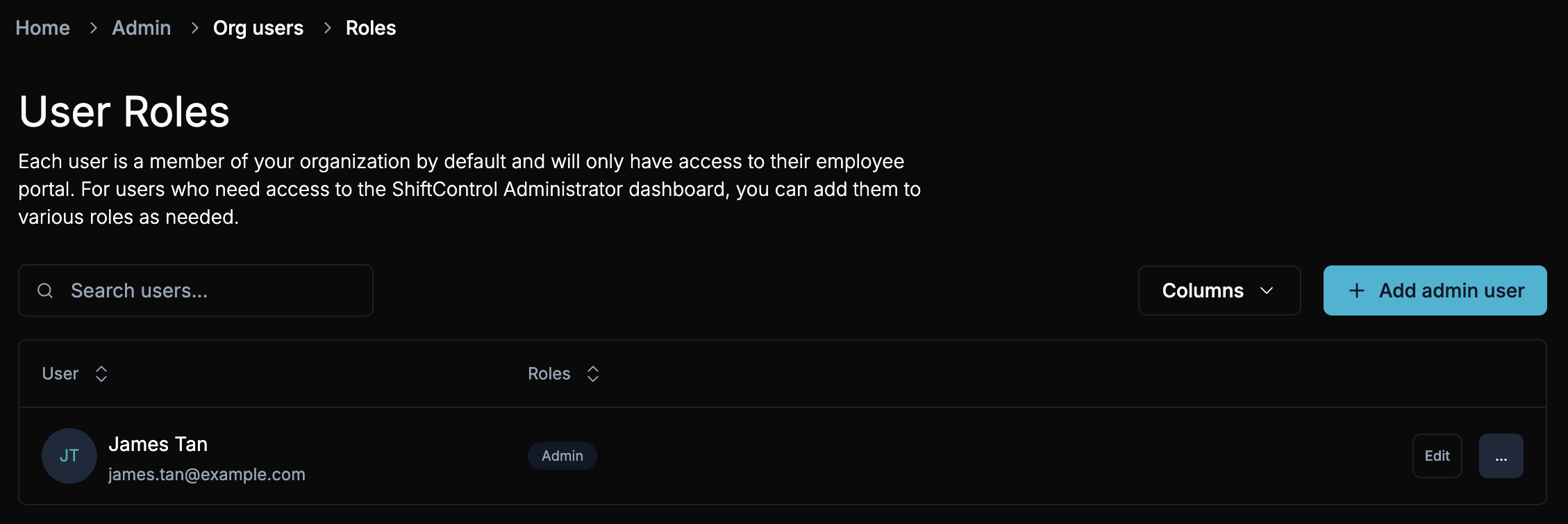
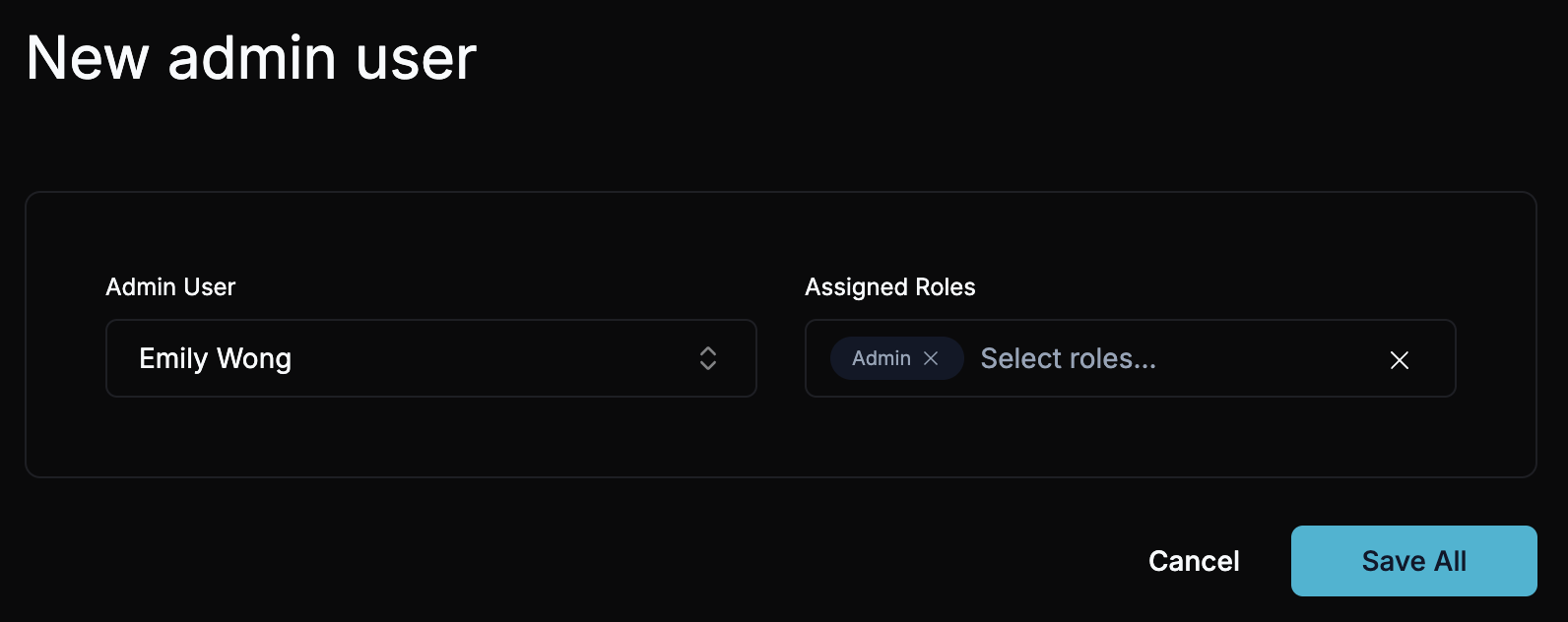
🔮 Coming Soon:
• Read-Only Access
• Finance User Role
• Custom Roles for Flexible Permissions
This update ensures your organization has the flexibility and security needed to scale. Start managing roles today and experience more control with ShiftControl!
You can now use the “company” field in your dynamic group rules, making it easier than ever to create internal groups for your own employees. Whether you’re setting up groups specifically for internal use or want to exclude contractors and other external members, adding the company field to your rules gives you greater flexibility and control.

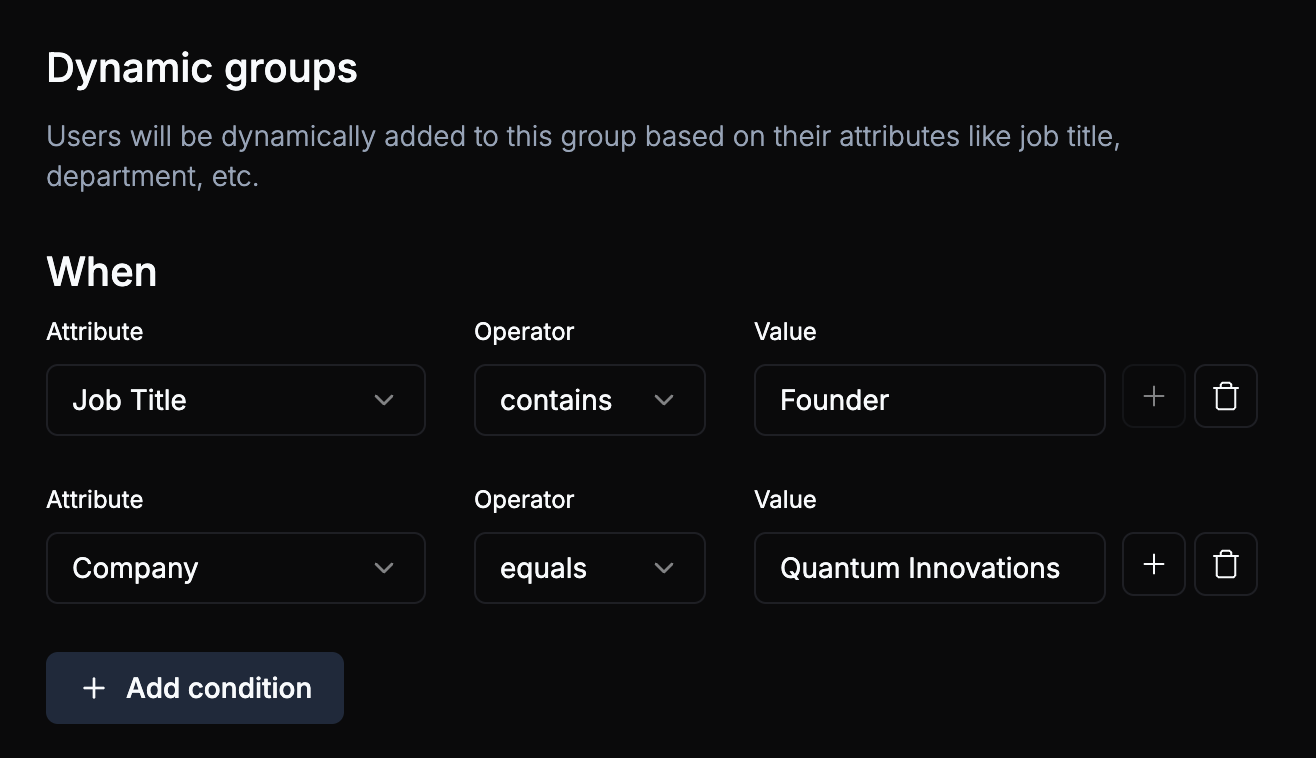
Give it a try and see how it can simplify your group management!
You can now add important notes directly to your subscriptions in the Apps tab! Whether it’s a quick reminder or critical details about a specific subscription, the new notes field makes it simple to keep track of everything in one place. No more scattered sticky notes or separate spreadsheets—just a clean, easy way to stay organized.

Give it a try and keep your subscription info at your fingertips!
ShiftControl is now available as a Progressive Web App (PWA), allowing you to experience it with the feel and convenience of a native app! PWAs are special web applications that you can install directly from your browser on supported devices, adding ShiftControl to your desktop or mobile home screen. This means faster access, offline functionality for certain features, and automatic updates—no app store required. Try installing ShiftControl as a PWA to streamline your access and enjoy a more responsive experience!
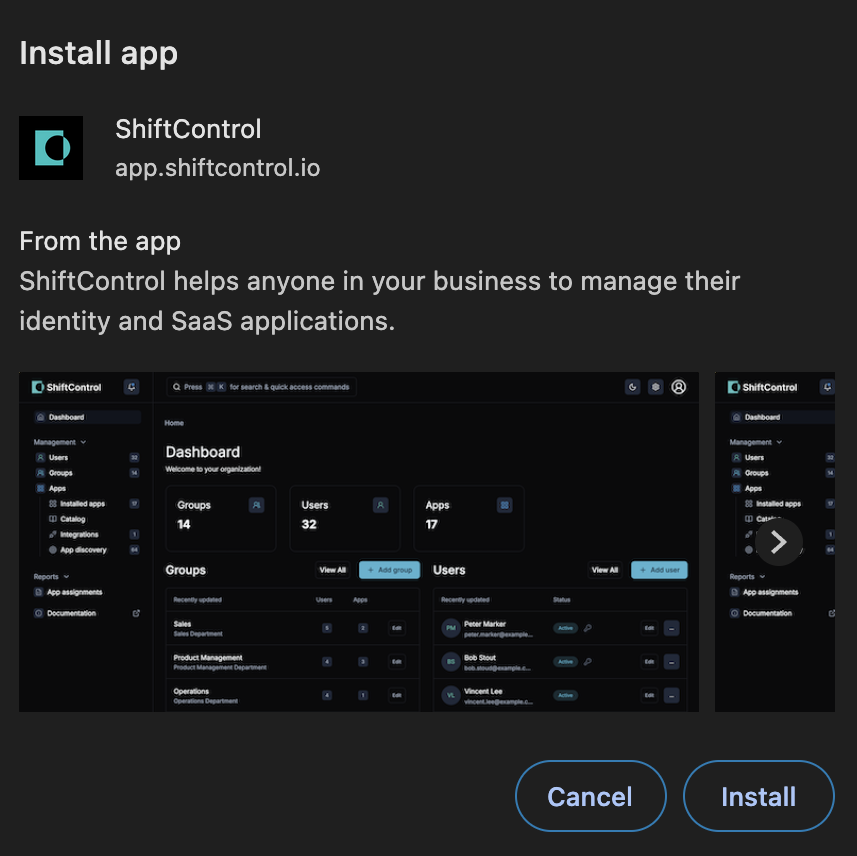
You can now view a consolidated summary of your SaaS spending right from your dashboard! This new card provides a clear, totalized cost of all your SaaS services, calculated based on cost type and the number of assigned users. We’ve taken care to normalize these values to your organization’s default currency (based on the latest currency exchange rates), ensuring a seamless and consistent overview of your monthly or annual expenses. Dive in to see exactly where your SaaS investments stand in real time!

You can now set your organization’s default currency in the settings, simplifying your SaaS cost tracking! This default currency will be used to automatically convert the cost of each app on your dashboard, ensuring all totals reflect your chosen currency. Additionally, it’s now easier to add new subscriptions—your default currency is pre-selected when you input cost details, making setup faster and more consistent. Update your settings to see it in action!
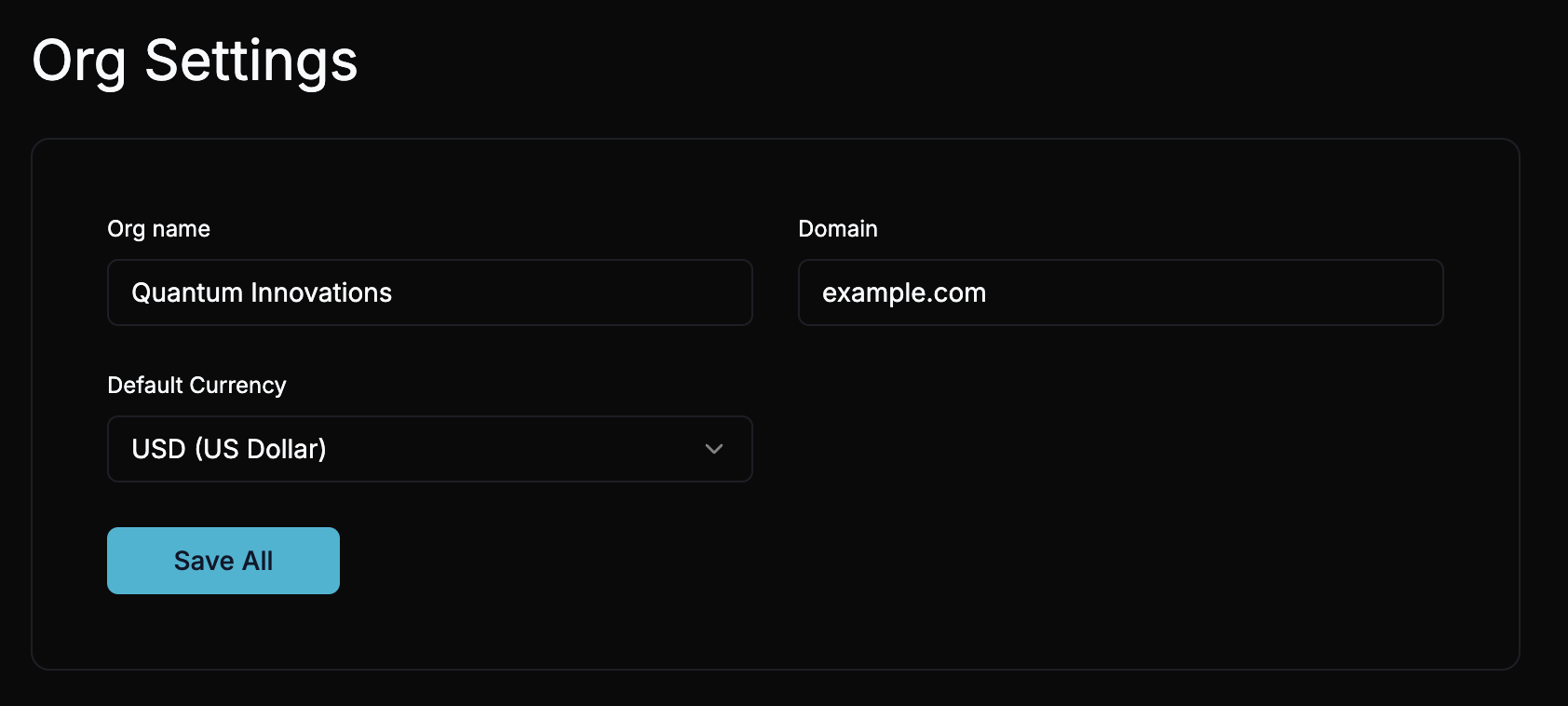
Effortless Google Workspace Sync
Now, with a simple setup in ShiftControl, you can sync groups and memberships directly to Google Workspace. Just update a group, designate its email address, and let the automatic sync take care of the rest. We’ll pull in the Group Name, Description, and members from Google, ensuring that your group information stays current and aligned across platforms without manual updates.
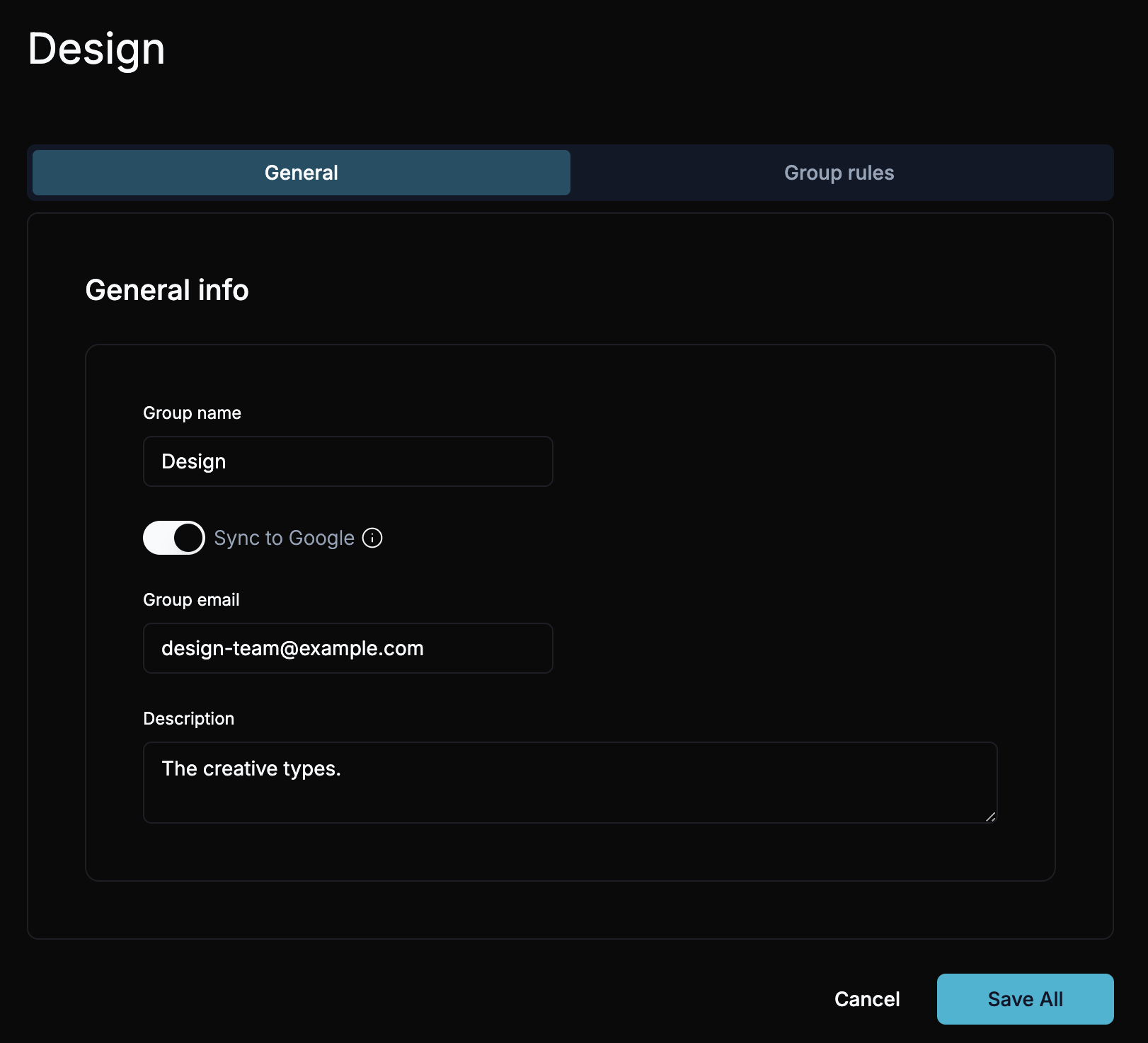
Get a clear overview of sync status in Group Management
To make things even easier, we’ve added a new status view in the Group Management area, showing which groups are actively synced to Google Workspace. This feature offers clear visibility and better control over which groups are integrated, so you can manage them effortlessly in one place.

Alongside the department improvements, we’ve introduced a location field to user profiles, allowing you to select locations from a dropdown menu for more consistent and reliable group creation. This feature ensures uniformity in location names across dynamic group rules, making it easier to create and manage groups based on geographical locations. You can even add new locations directly from the field, simplifying user management further.
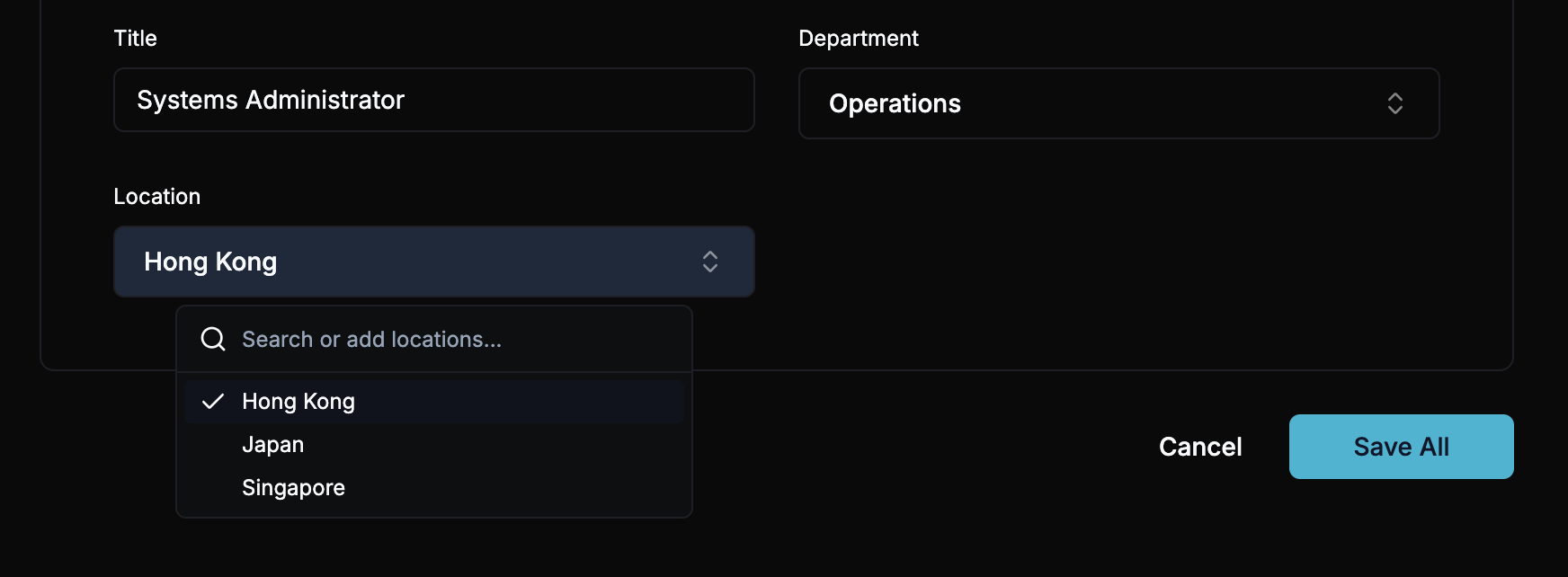
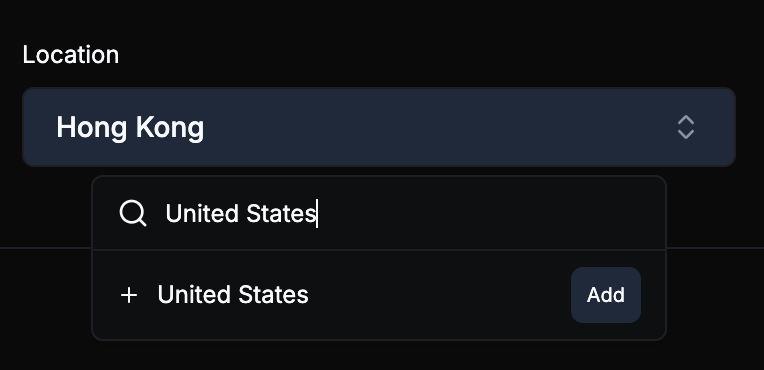
We’ve added a new feature that shows a quick breakdown of your SaaS costs per app, giving you the monthly and yearly cost calculations based on the number of users and contract terms. It’s now easier than ever to understand how much you’re spending on each tool and make smarter decisions for your budget. This detailed view is a game-changer for keeping your SaaS spending under control.

No more second-guessing when deleting! We’ve enhanced the delete confirmation process to ensure it’s crystal clear what you’re deleting and its potential impact. For added security, we also ask you to type ‘delete’ to confirm before proceeding.
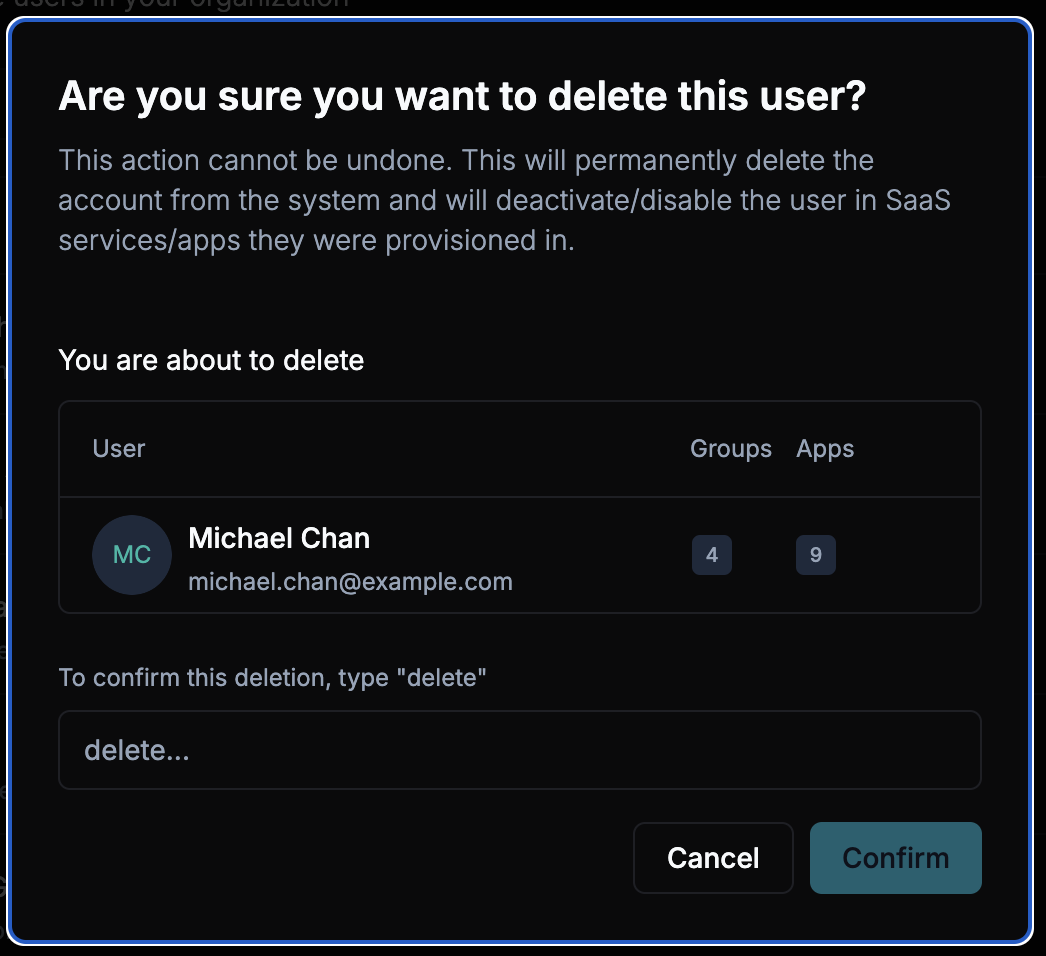
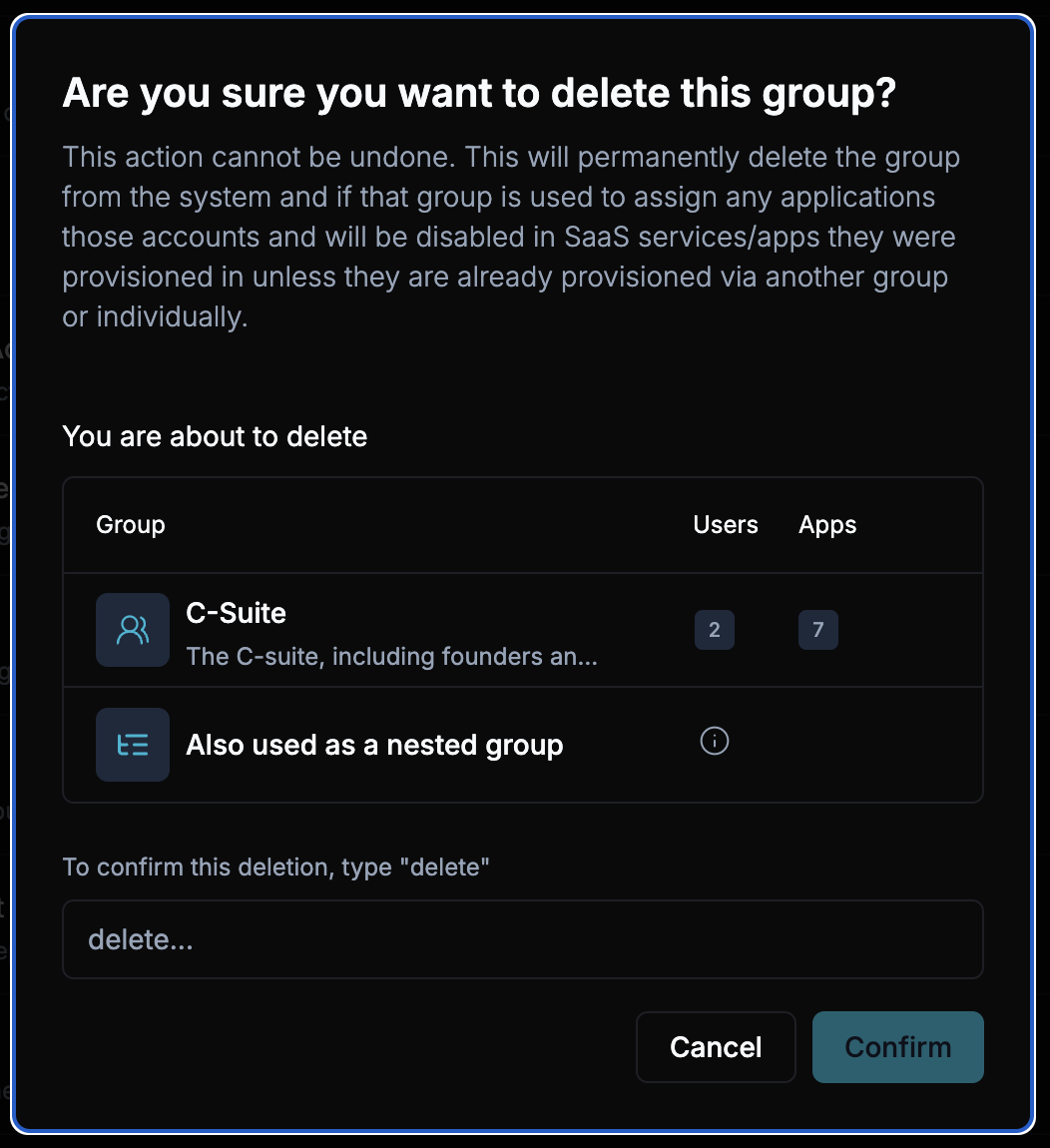
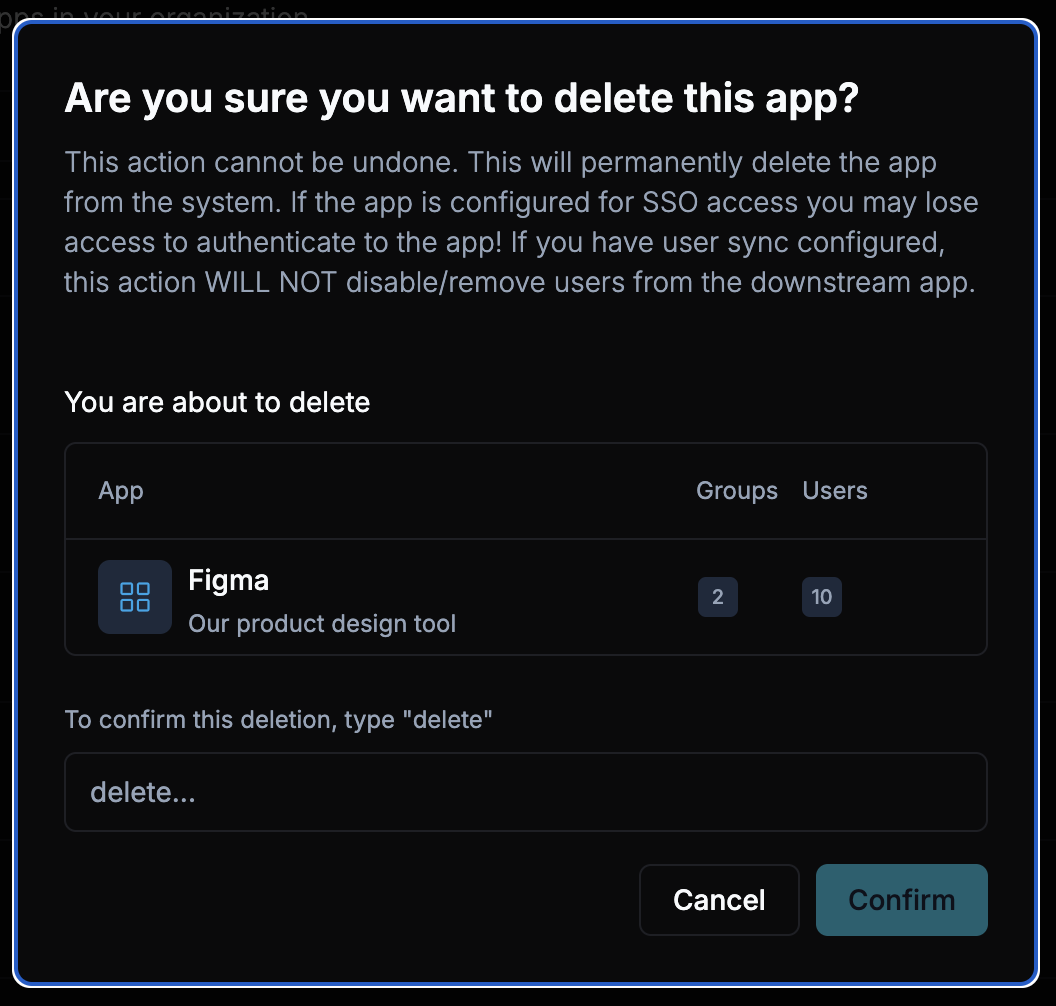
You can now manage departments more easily with our updated dropdown field. Previously a free text field, the department selection is now a pull-down menu available in the user edit areas and dynamic group rules. This change helps eliminate mistakes like typos or inconsistent capitalization, ensuring that dynamic rules work as expected when defining groups by department. You can also quickly add new departments directly from the dropdown, streamlining the process even further.
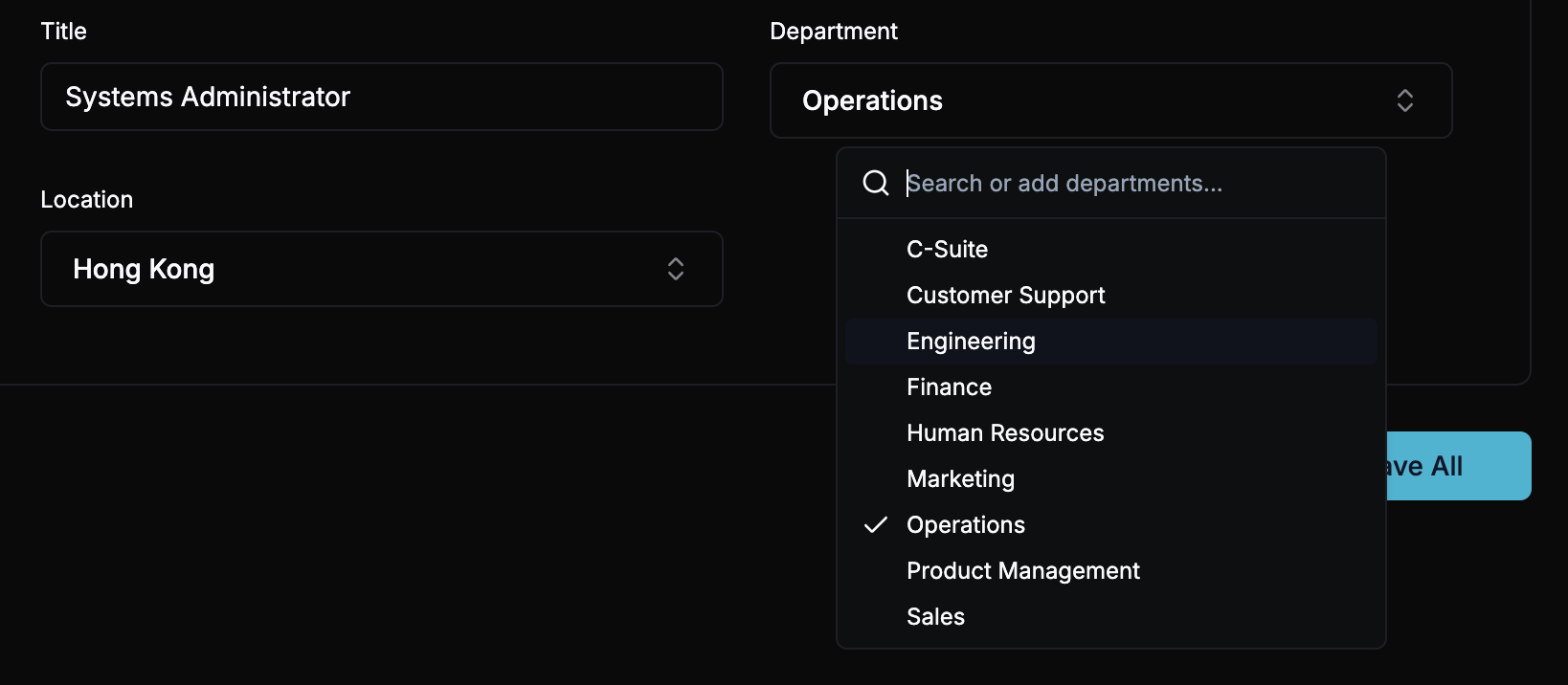
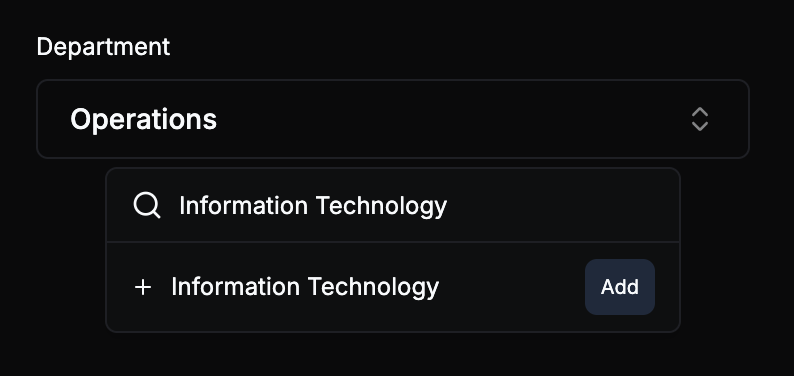
In both the group and app editing screens, you can now instantly see how many configurations are active in each tab. For example, in a group, you’ll know you’re using 3 Dynamic Rules and 1 Individual Assignment without digging into each section.
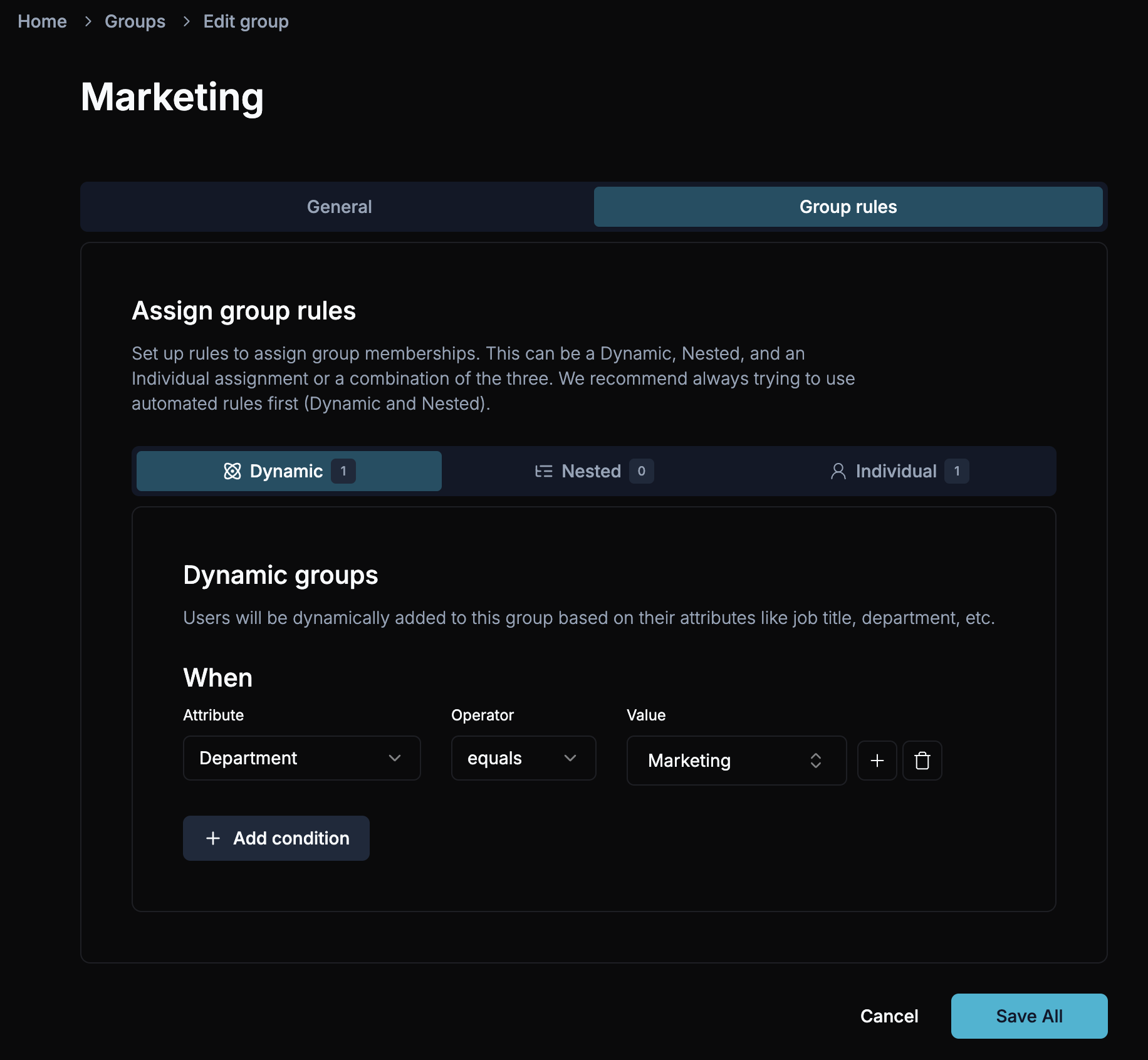
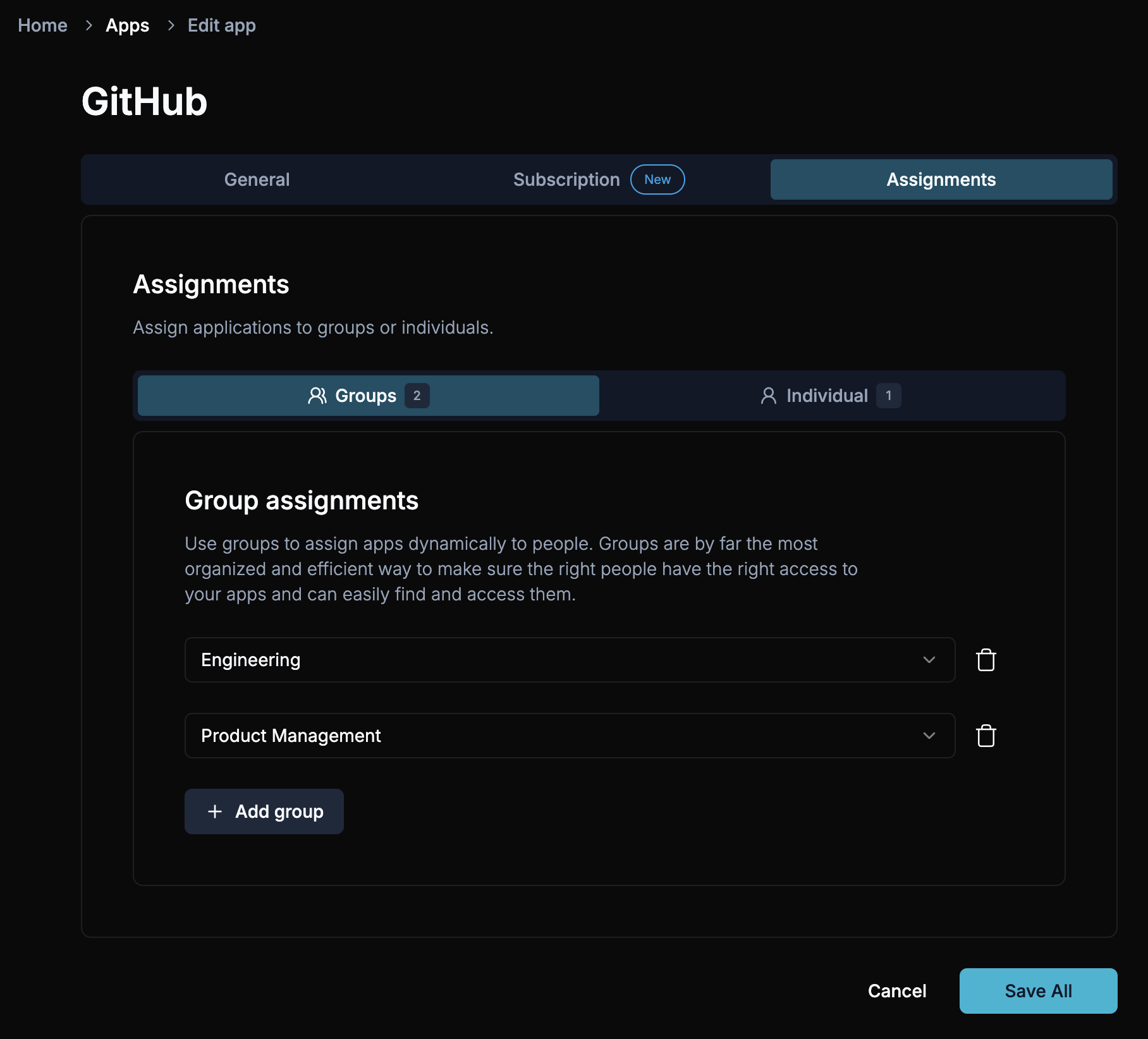
Take control of your departments and locations with our new centralized management areas. Accessible in the org settings menu, you can now easily add, rename, or remove departments and locations to maintain consistency across your organization. This ensures smooth user grouping and dynamic rules while giving you the flexibility to adjust as needed.
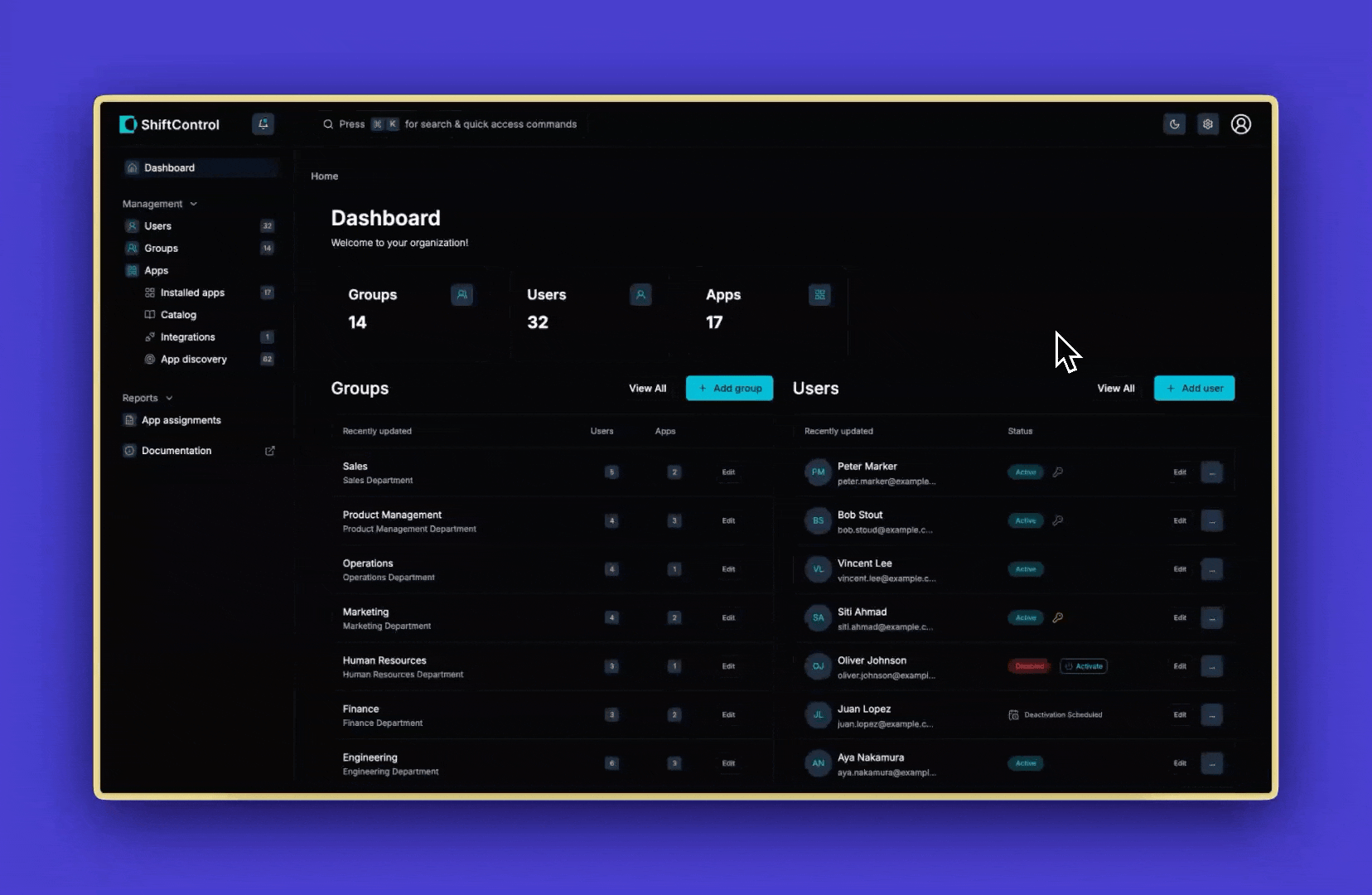
You can now input and save key details about your SaaS subscriptions, including contract lengths, billing frequencies, renewal dates, grace periods, and more. With this data, ShiftControl calculates your total SaaS costs, providing full visibility into where your budget is going. This is just the start! Soon, you’ll be able to access detailed cost reports, receive renewal notifications, and get insights on when to right-size your contracts before the lock-in period. We’re also working on integrations to automatically detect and update your subscription data, keeping everything accurate and up-to-date.
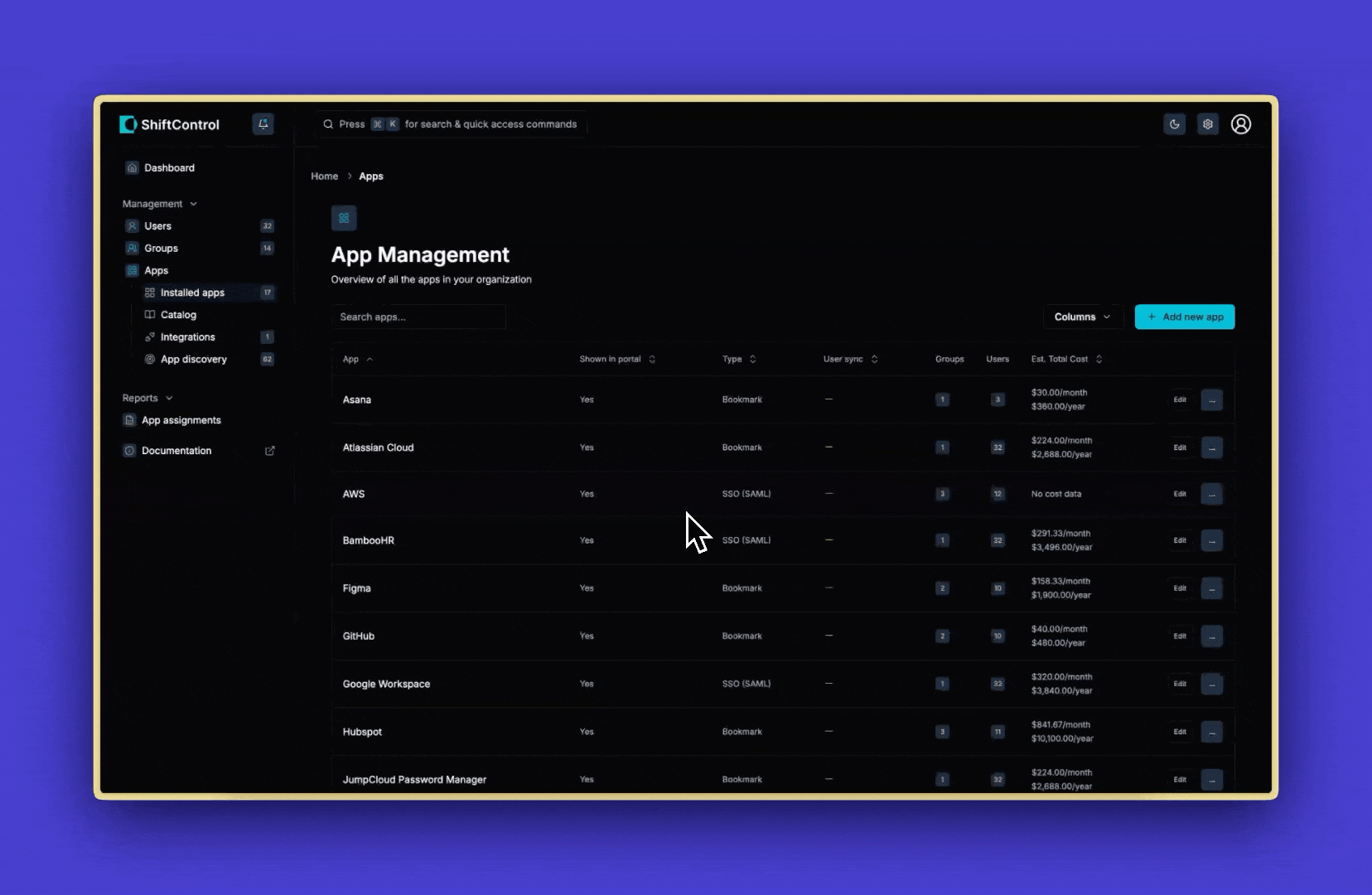
We’ve introduced powerful side panels in the user, group, and app editing areas to give you a comprehensive overview at a glance.
• User Info: See all the groups a user belongs to, including how they were assigned (dynamic rule, nested rule, or individual assignment). Also, check their app assignments and whether those assignments are via a group or direct.
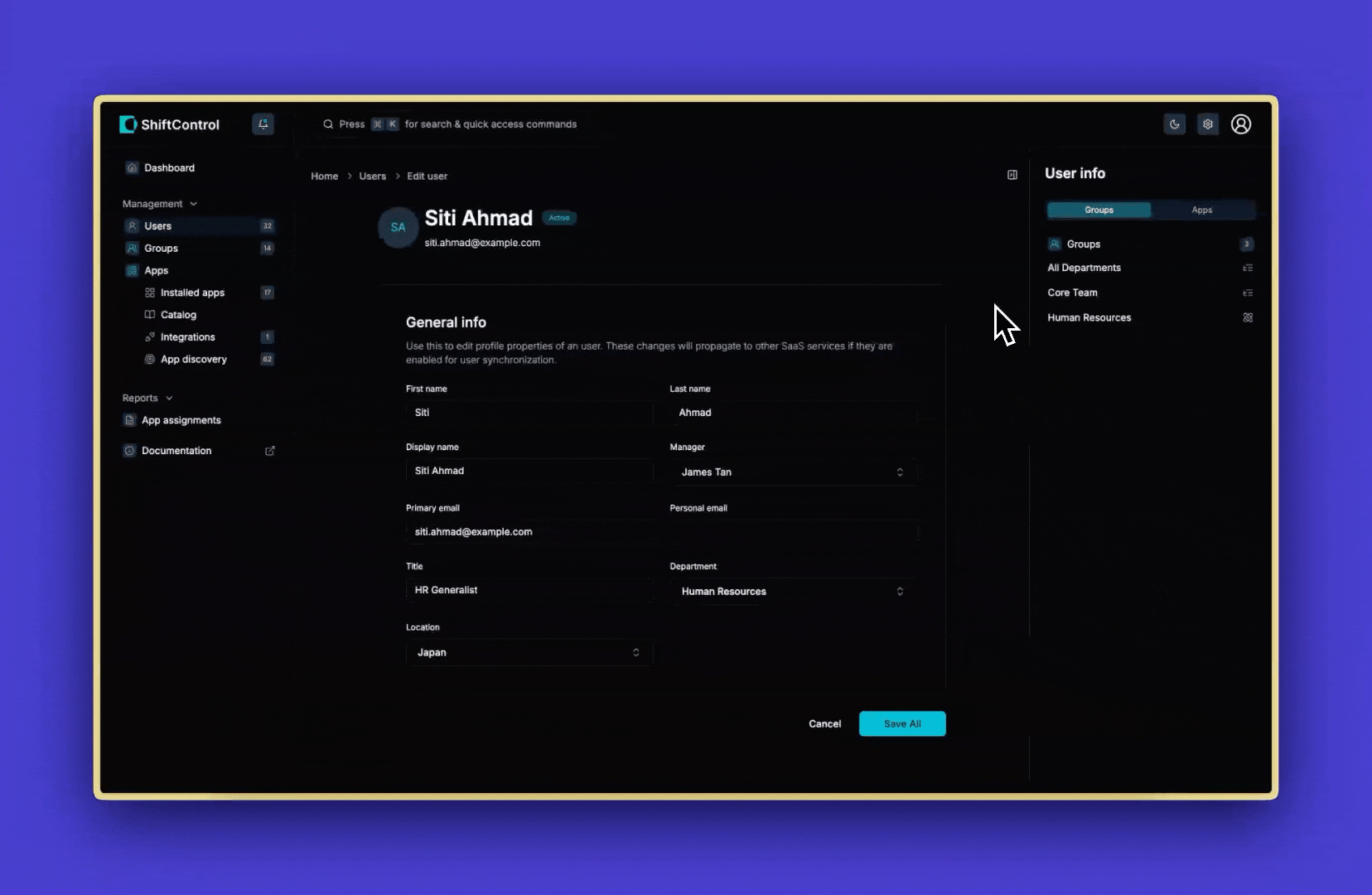
• Group Info: Get a breakdown of how users are assigned to a group (dynamic rules, nested rules, or individual assignments) and see which apps are tied to that group.
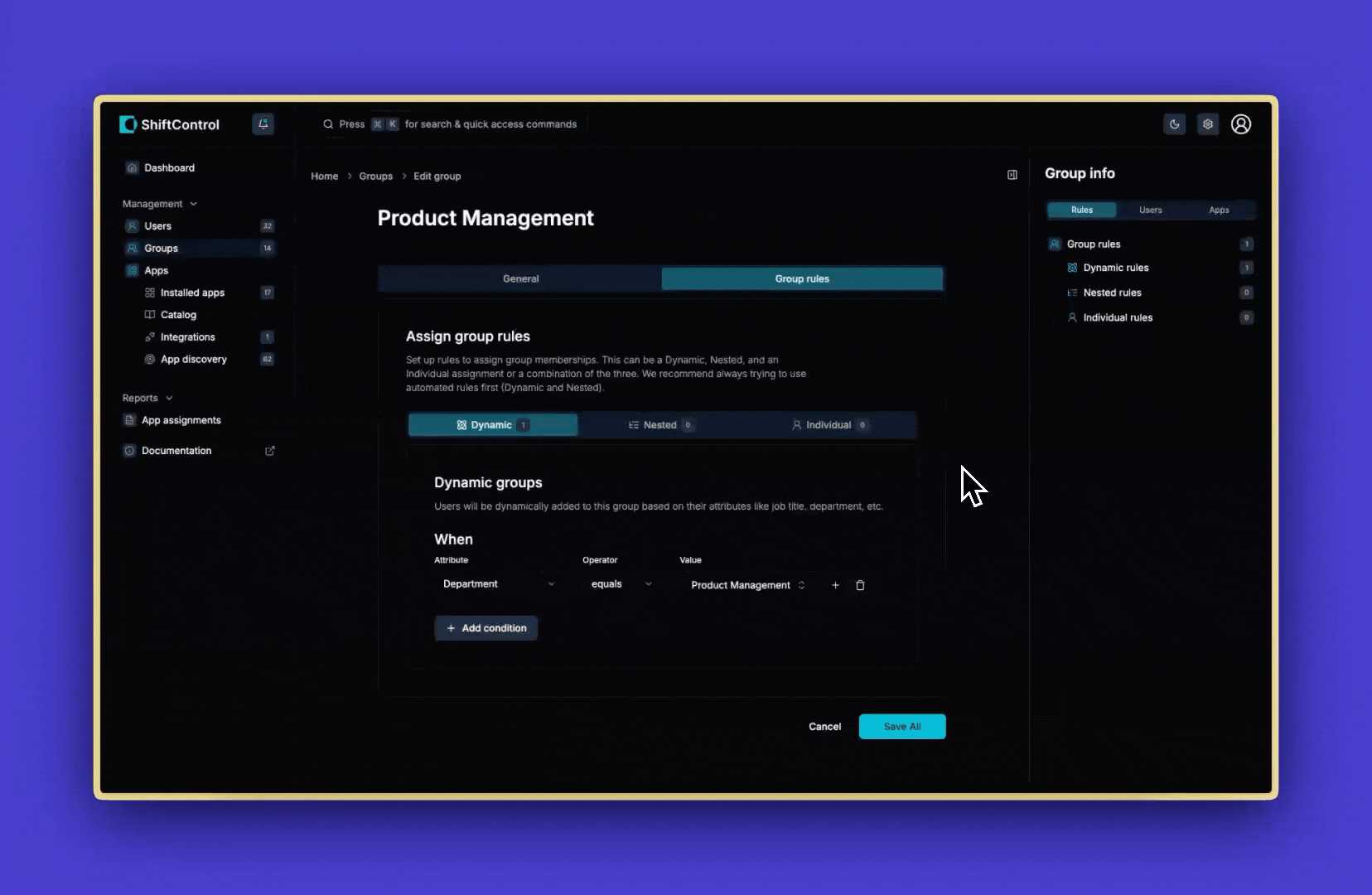
• App Info: View a list of users assigned to an app and the groups responsible for assigning them.
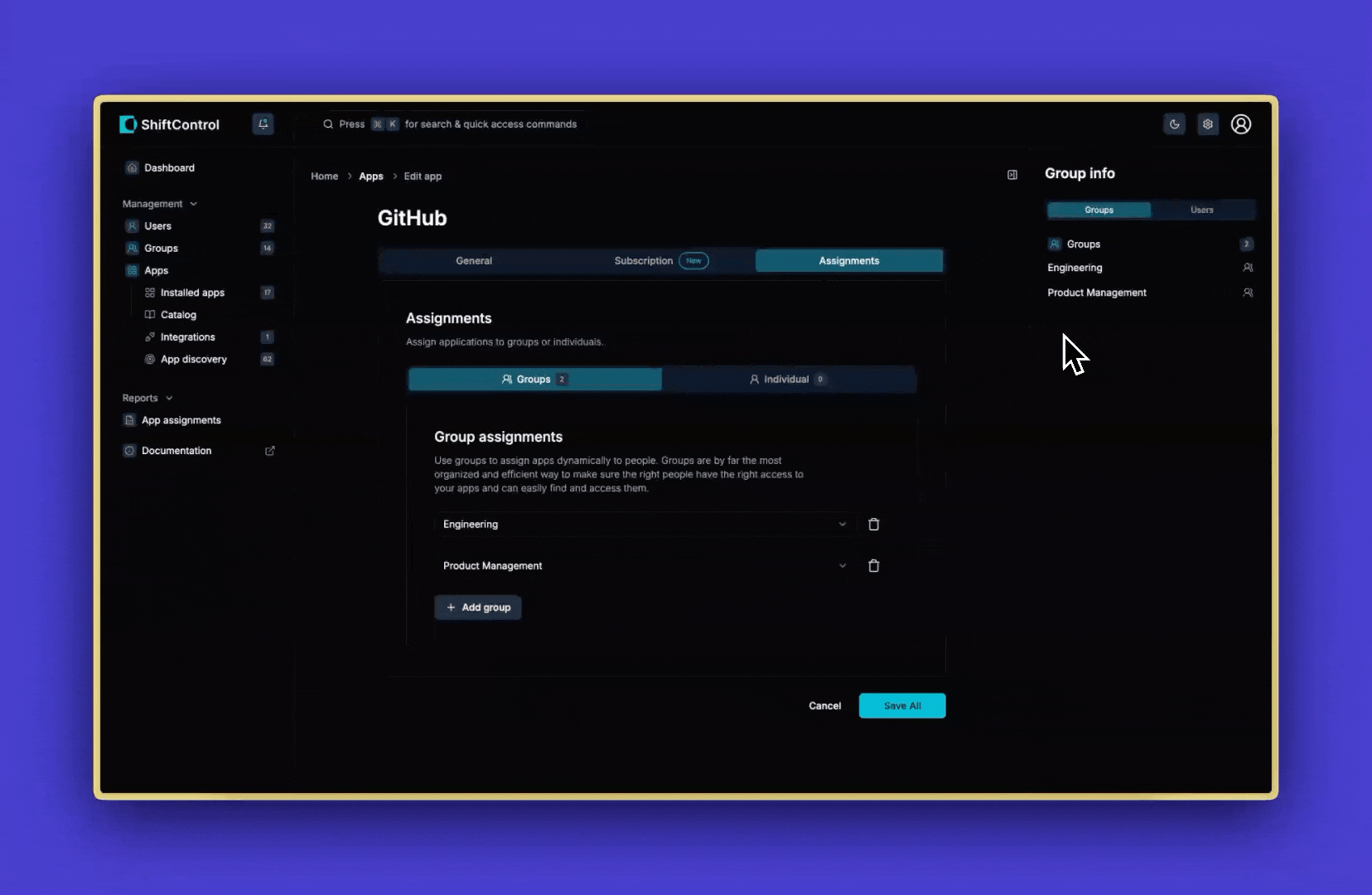
App management just got more informative! We’ve updated the user sync status icons and added key details, like how many groups are assigning the app and how many users are assigned. Hovering over the group number will reveal which groups are in use. Additionally, we’ve introduced new fields for Estimated Total Cost and Currency (Available as an optional column) as part of our new SaaS Cost Management features.
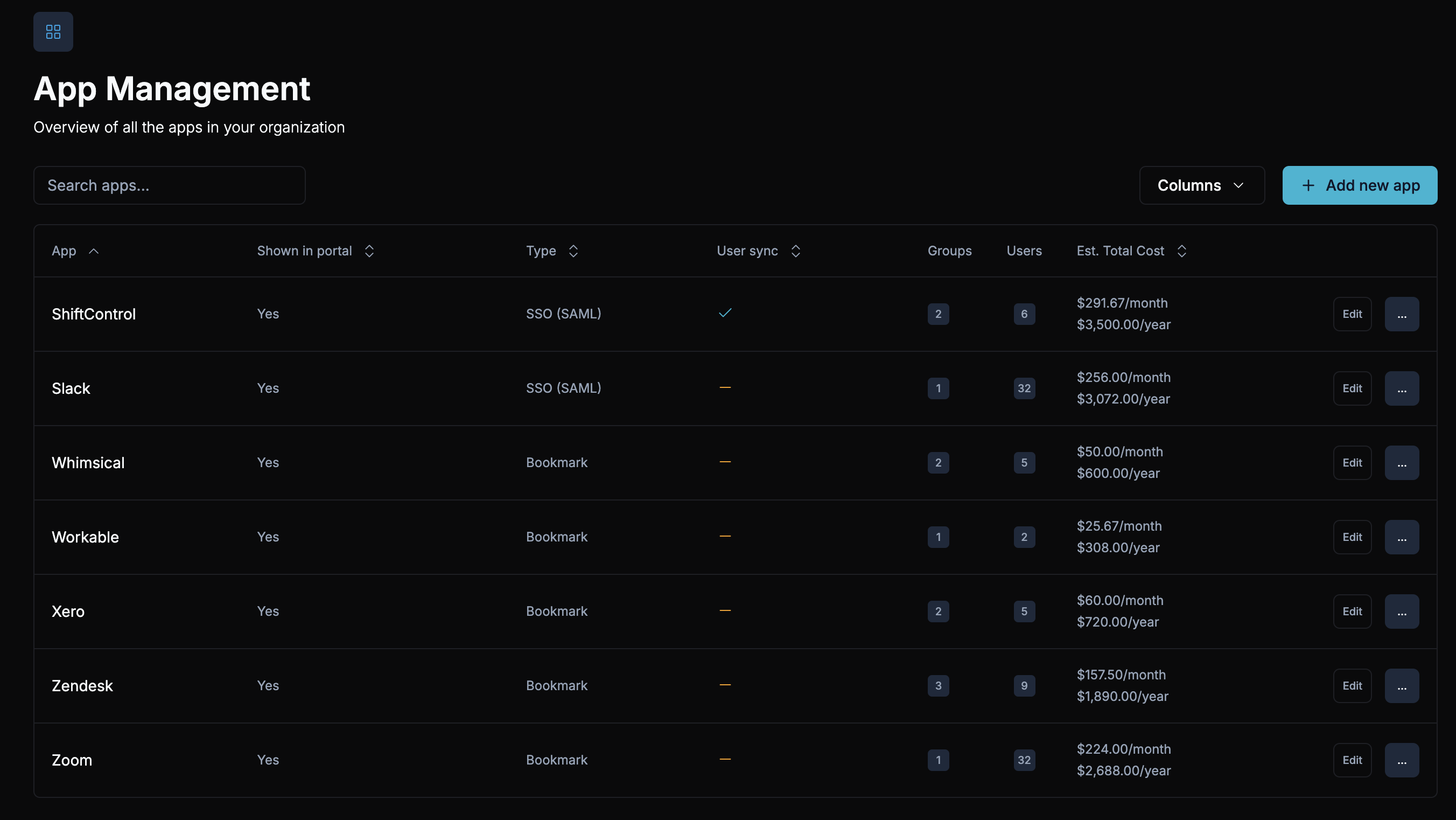
We’ve made it easier to get a clear view of your groups. Now, you can see at a glance how many users and apps are tied to each group. This helps validate whether your group setups match your expectations. We’ve also combined group names and descriptions for a cleaner look and improved the quick-view area for easier access to key details.
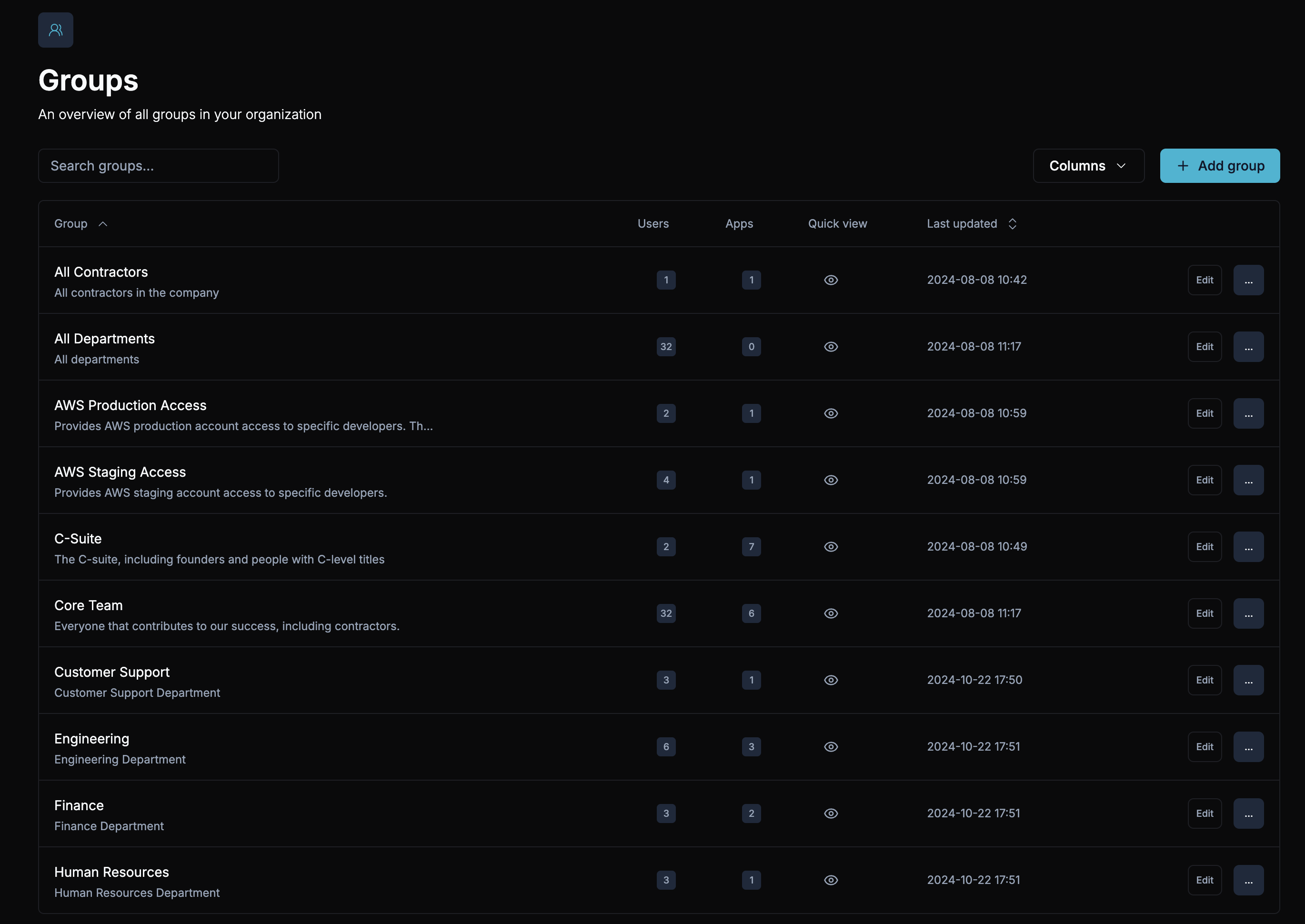
User management just got a boost! You can now quickly see how many groups and apps each user is assigned to. Plus, we’ve added optional columns for departments and locations, giving you a more comprehensive view of your users. The Name and Email fields are now condensed for faster access to key info.
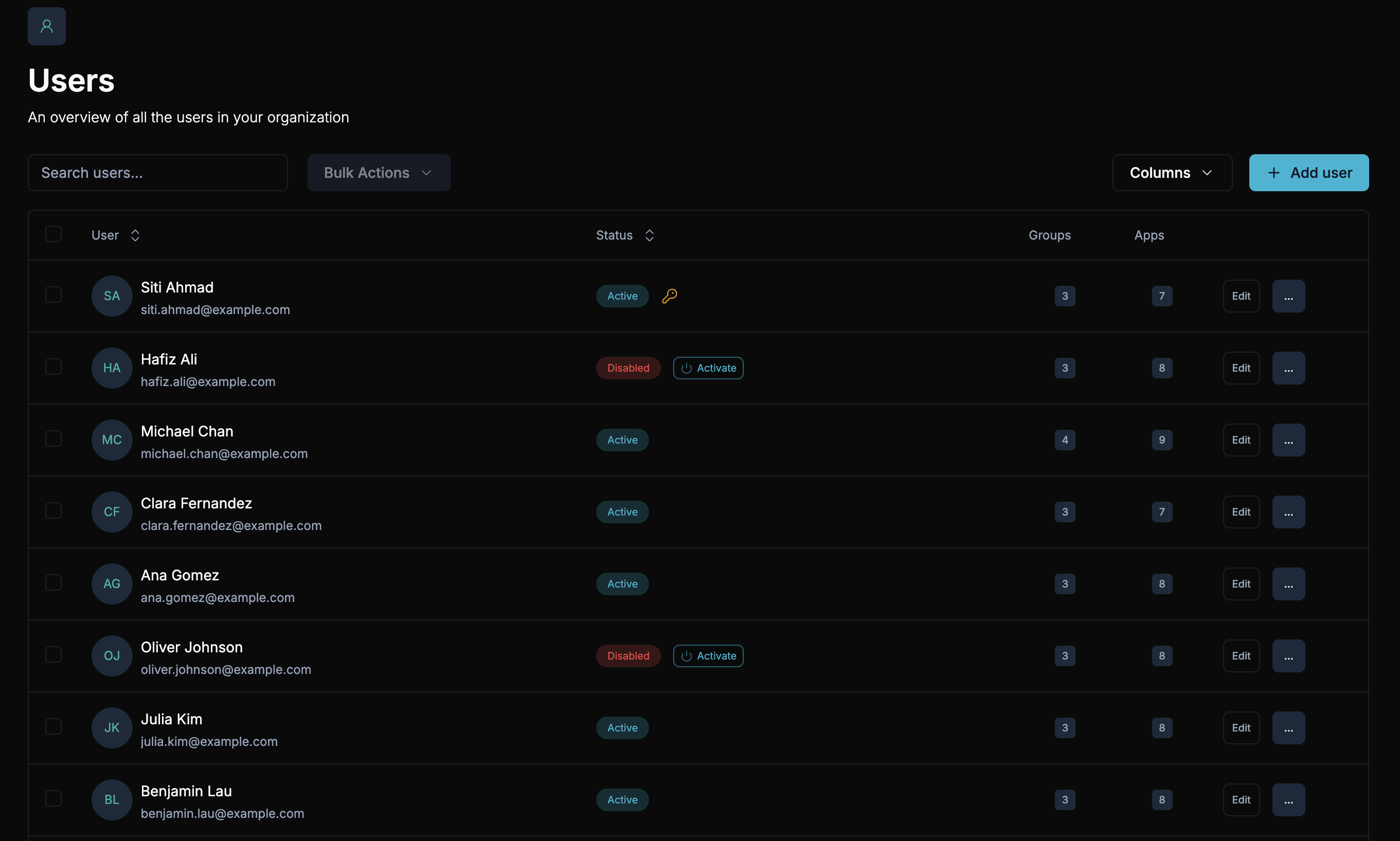
We’ve given the UI a fresh, intuitive makeover while exposing more detailed information across the board. Whether you’re in user management or editing apps and groups, you’ll find more helpful hints, tooltips, and contextual information at your fingertips. You can now easily see how many groups and apps each user is assigned to and navigate smoothly through frequently used configuration tabs. Even the sidebar is smarter, offering a clear overview of statuses and item counts for every section.
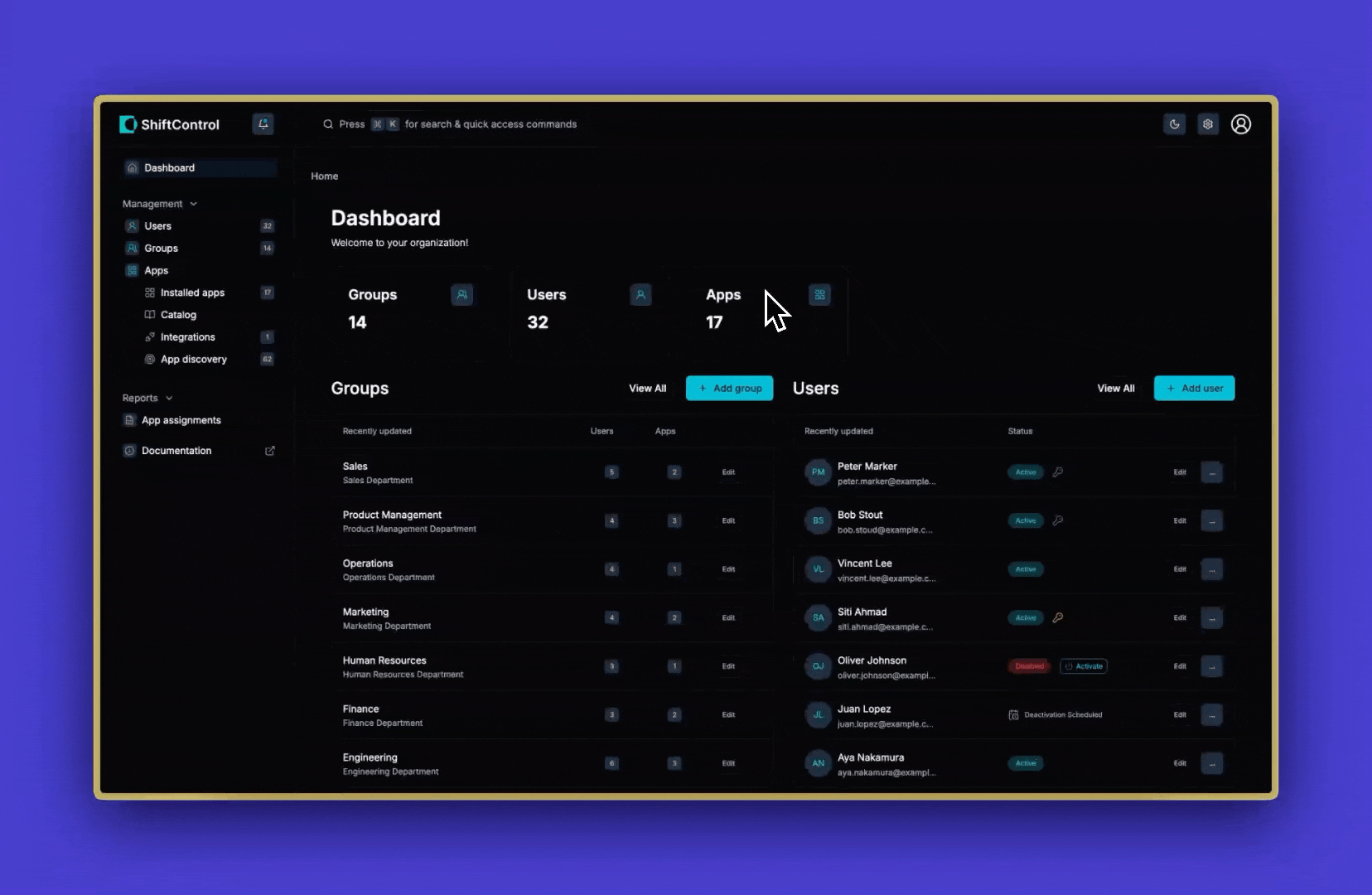
We’ve enhanced our app creation process! When you create a new app from our custom catalog, we now ensure the correct logo is always uploaded. Gone are the days of default logos—your apps will always display the correct branding, improving consistency and recognition.
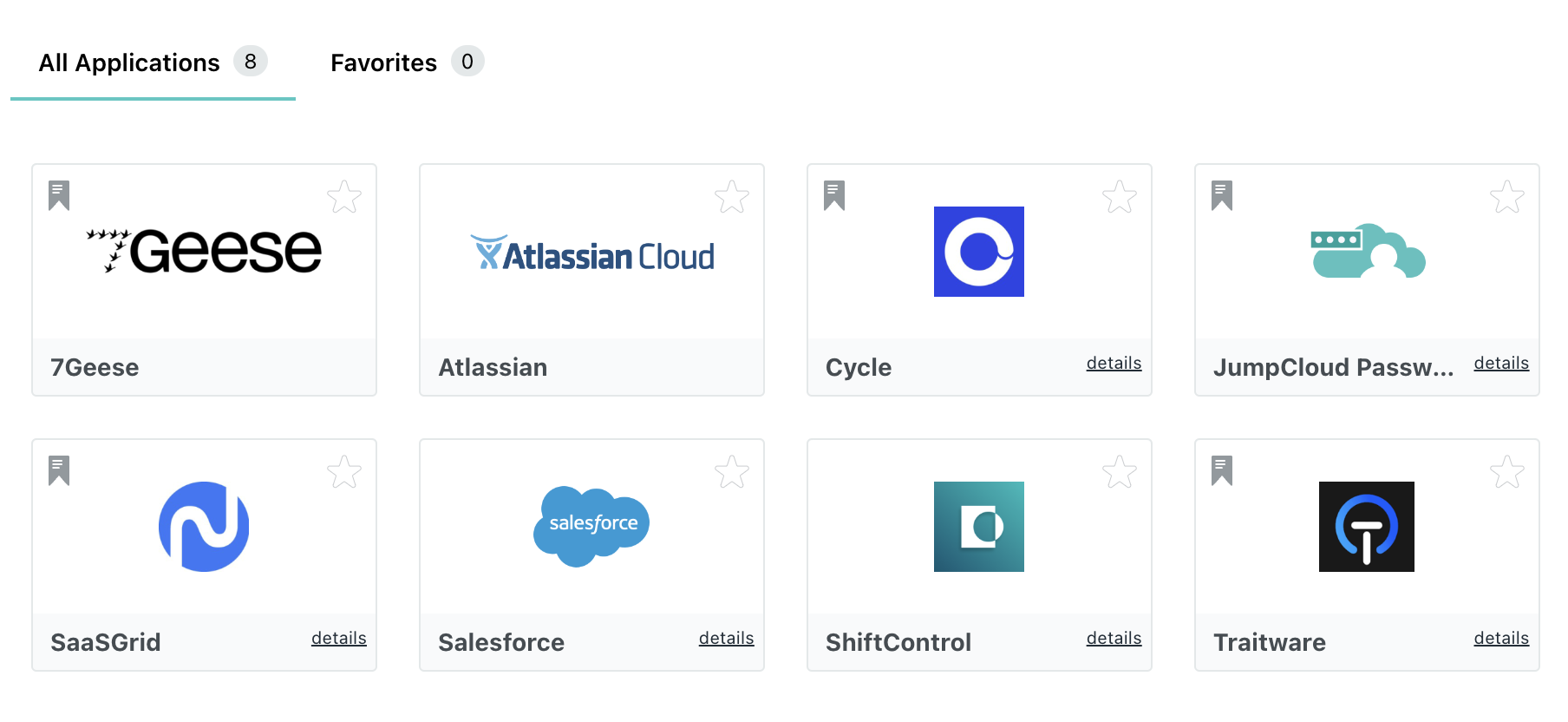
We’ve simplified the process for managing group access to JumpCloud Password Manager. Previously, managing group assignments for the password manager required direct actions in JumpCloud. Now, it’s treated like any other app within ShiftControl, allowing you to manage group access directly from our platform without needing to switch back and forth.
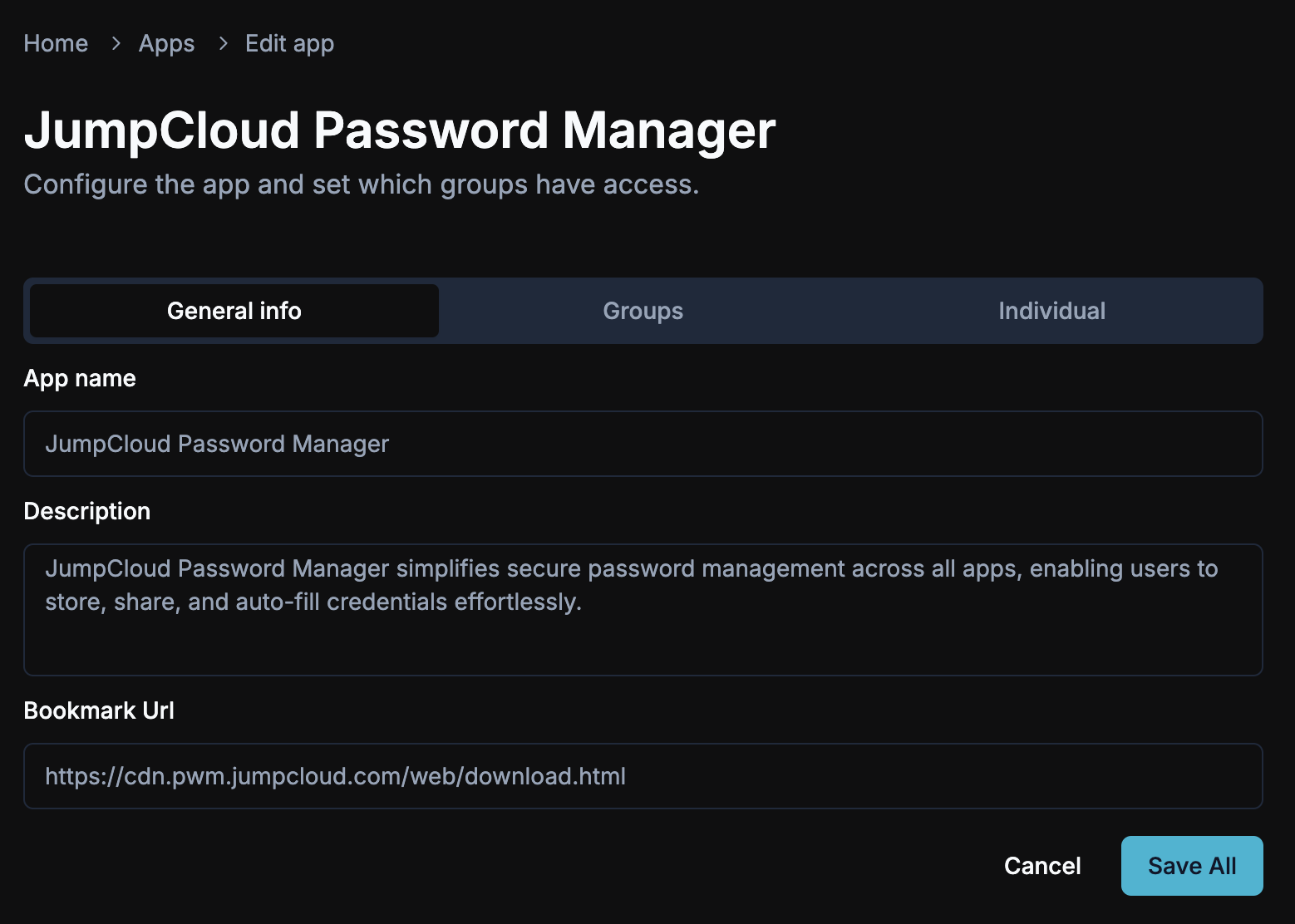
Introducing Task Management, a powerful new feature designed to help you manage critical tasks across ShiftControl. We know that not everything in your SaaS ecosystem is fully automated—especially when it comes to user onboarding and offboarding. While we’re working to automate as much as possible, there will always be manual steps required.

With this first release, Task Management highlights the actions that need your attention, such as deciding what to do with newly discovered applications. The task view helps you easily identify tasks with clear statuses, descriptions, and assignment options, giving you full control over who handles each task. In this early version, you’ll be able to manage tasks like reviewing apps discovered through Google Workspace integration.
Looking ahead, Task Management will continue to evolve to include essential tasks such as onboarding/offboarding users from apps that require manual user management, handling approval requests for app assignments, and much more. This feature ensures you stay in the loop and never miss important steps, giving you visibility and control over all manual tasks needed to keep your operations running smoothly.
Our new App Discovery feature gives you the power to see all the apps your users have connected to through integrations like Google Workspace. This feature helps you discover which apps your users are using, how they were authorized, and what actions have been taken—such as authorizations or revocations.
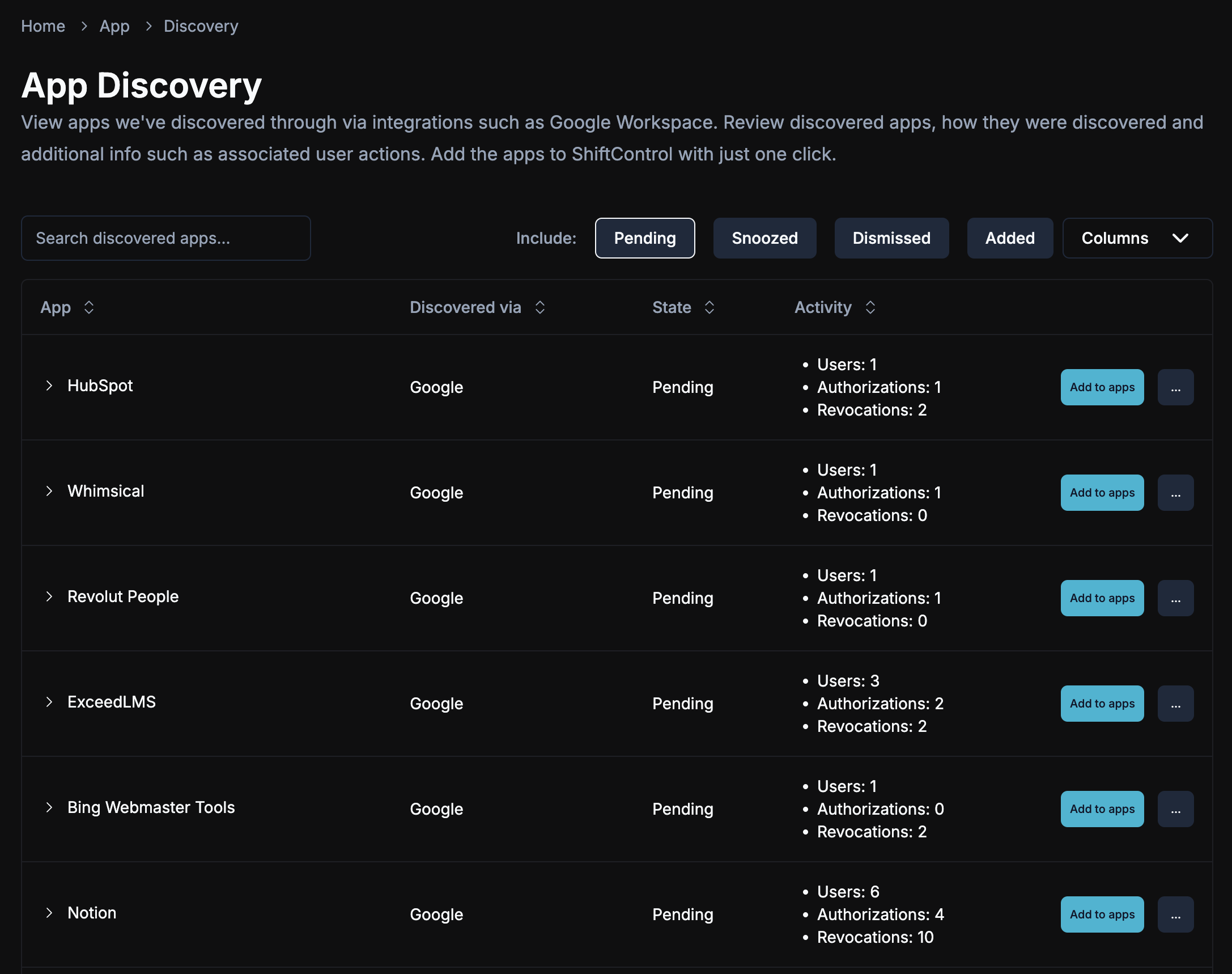
With detailed insights, such as the number of users interacting with each app, and how they were discovered, App Discovery helps you take immediate action. You can easily add newly discovered apps to ShiftControl with just one click.
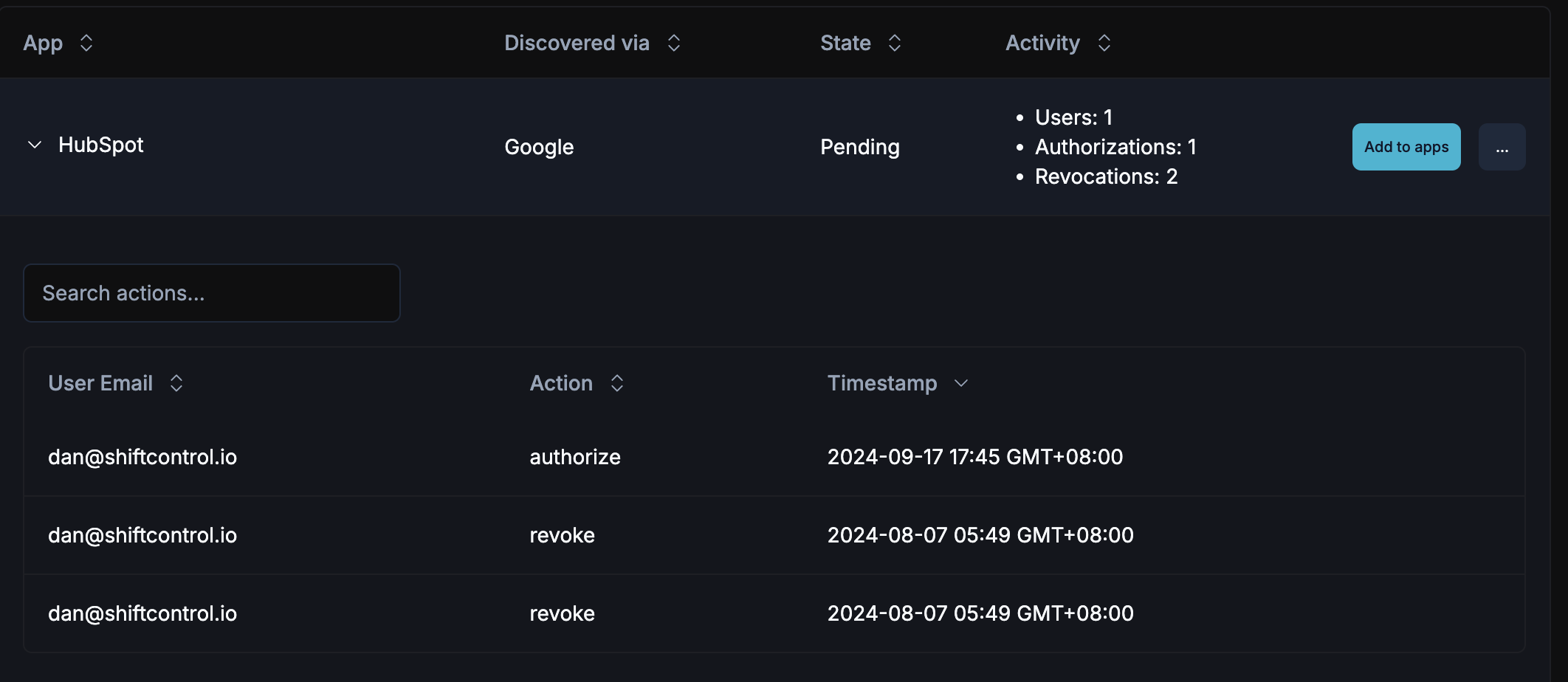
Key capabilities include:
This is just the beginning—our App Discovery feature is the first mechanism to help you gain control of your SaaS environment. We are actively working on more integrations to help you discover apps even more efficiently. Soon, you’ll be able to leverage tools like accounting systems, mailbox invoice discovery, and more to uncover every corner of your app ecosystem.
With our new Google Workspace integration, administrators can now gain deep insights into how their users are interacting with external apps and services. Once connected via an admin account, ShiftControl will automatically start pulling event logs, including details on when users authorize third-party services—such as using the “Sign in with Google” (Google SSO) feature—and when access is revoked by users or apps. This data is refreshed periodically to ensure you always have up-to-date visibility into the apps your users are authenticating with their Google identity.
This enhancement to our App Discovery feature empowers you to better manage SaaS services by helping you identify and add new applications to ShiftControl while also detecting unexpected uses of Google accounts and potential shadow IT. It’s an essential tool for maintaining control and ensuring secure use of your organization’s digital footprint.
We’ve introduced a dedicated area for discovering and managing integrations, providing you with full control over how ShiftControl interacts with your applications. Each integration requires secure credentials—whether API keys or OAuth tokens—which we support and store securely. This feature allows you to monitor critical data points like integration health, service health, and authentication status, giving you real-time insights into the connections your business depends on.
Our first available integration is with Google Workspace, part of the new App Discovery feature, with many more integrations on the way. These will enable powerful features such as synchronizing users across applications, ensuring secure configurations, and even pulling invoicing and usage data from SaaS services to streamline management.

We’ve grown our app catalog to include over 950 apps, allowing you to quickly configure and manage Single Sign-on (SSO) . However, we recognize that many users might not have licenses on the tier that supports SSO. To address this, we’ve enhanced the experience by fully managing our own app catalog. You can now easily add apps as bookmarks, with pre-filled login URLs and descriptions for apps—no more manually entering URLs or descriptions! Each bookmark will take you directly to the app’s login page, helping you stay productive and avoid unnecessary marketing pages.

We’re excited to introduce a powerful new feature to our platform: App Assignment Reporting. This update empowers you with the data and control needed to manage your entire IT and SaaS ecosystem seamlessly. Now, you can easily view and manage app assignments by both app and user, all in one convenient location within our new reports section.
To make your workflow even more efficient, we’ve added multiple export options, including CSV, TSV, JSON (both flattened and nested), and Google Sheets. The Google Sheets export comes with built-in pivots, giving you the flexibility to analyze and visualize your data exactly how you want. With this update, managing who has access to what apps has never been easier!
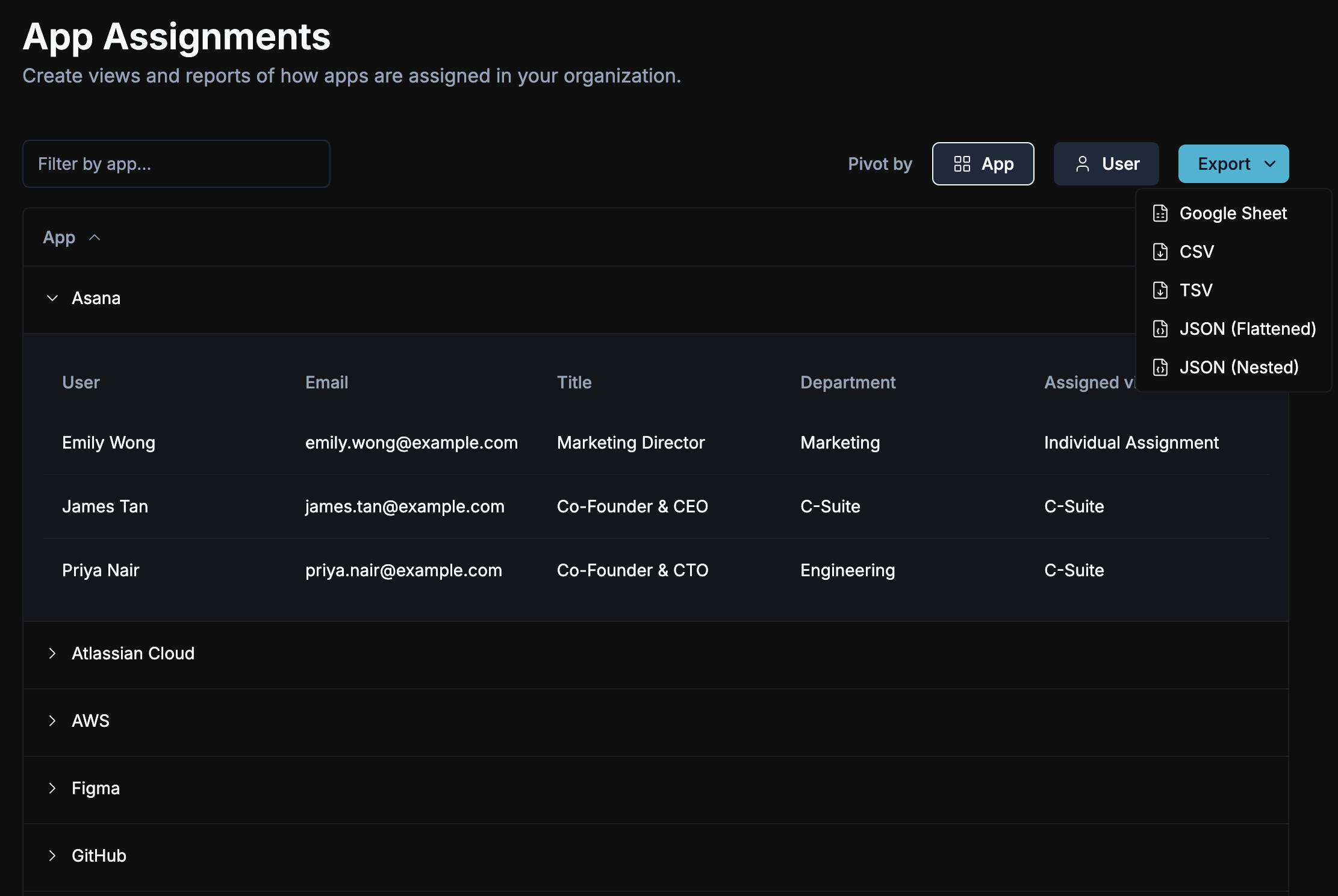
Effortlessly navigate ShiftControl with our new Command Bar! You can now quickly access the dashboard, users, groups, and apps—all in one convenient place. Use intuitive hotkeys to speed up your workflow and streamline your experience. Searching and managing your ShiftControl environment has never been easier!
Check it out in action! 🔥
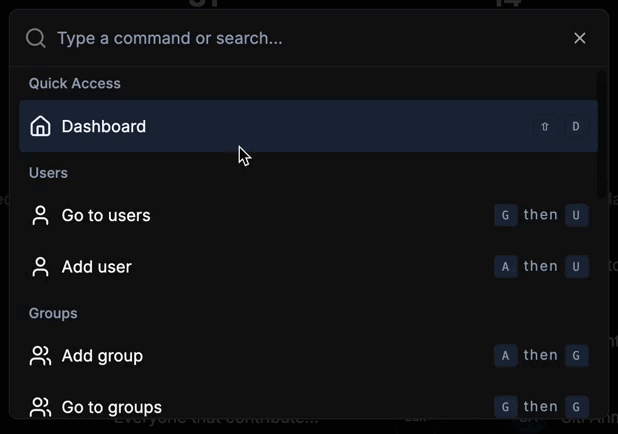
Our menus were a bit boring! Humans are visual beings, so we wanted it easier to navigate menus with icons that map clearly to the actions. It also just looks better!
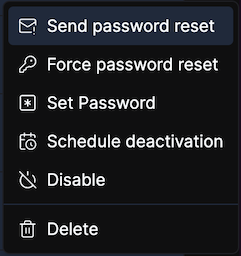
We noticed that the bulk actions menu was getting a bit too busy, so we organized the actions to make them easier to find and use! We also now disable actions that don’t apply for the selected users to make it clearer what actions can be taken.
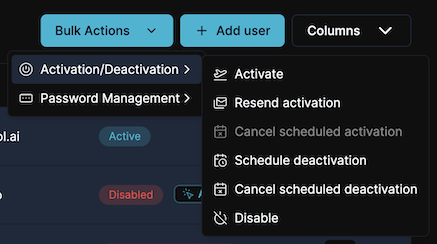
There are many cases where you might need to set a user’s password for them, especially if they lost access to their email and have forgotten their passwords. You can now set a user’s password for them using the ”Set Password” menu for each user. By default, we also expire the existing password and force the user to change it on next login.
We generate a password for you, or you can use your own! The generated passwords are designed to be secure enough for temporary use and easy to relay over a voice call or type in manually from another device.
⚠️ We always recommend forcing the user to reset the password on the next login to avoid the chance of them using a temporary password permanently.
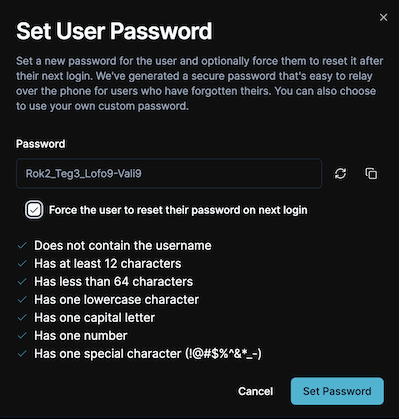
We updated the icon to make it clearer which apps don’t have user sync configured or enabled yet.

We’ve improved the way validation errors are communicated when saving changes across multiple tabs. Now, clear visual indicators will notify you if there’s an error on any tab, helping you to quickly identify and address issues.
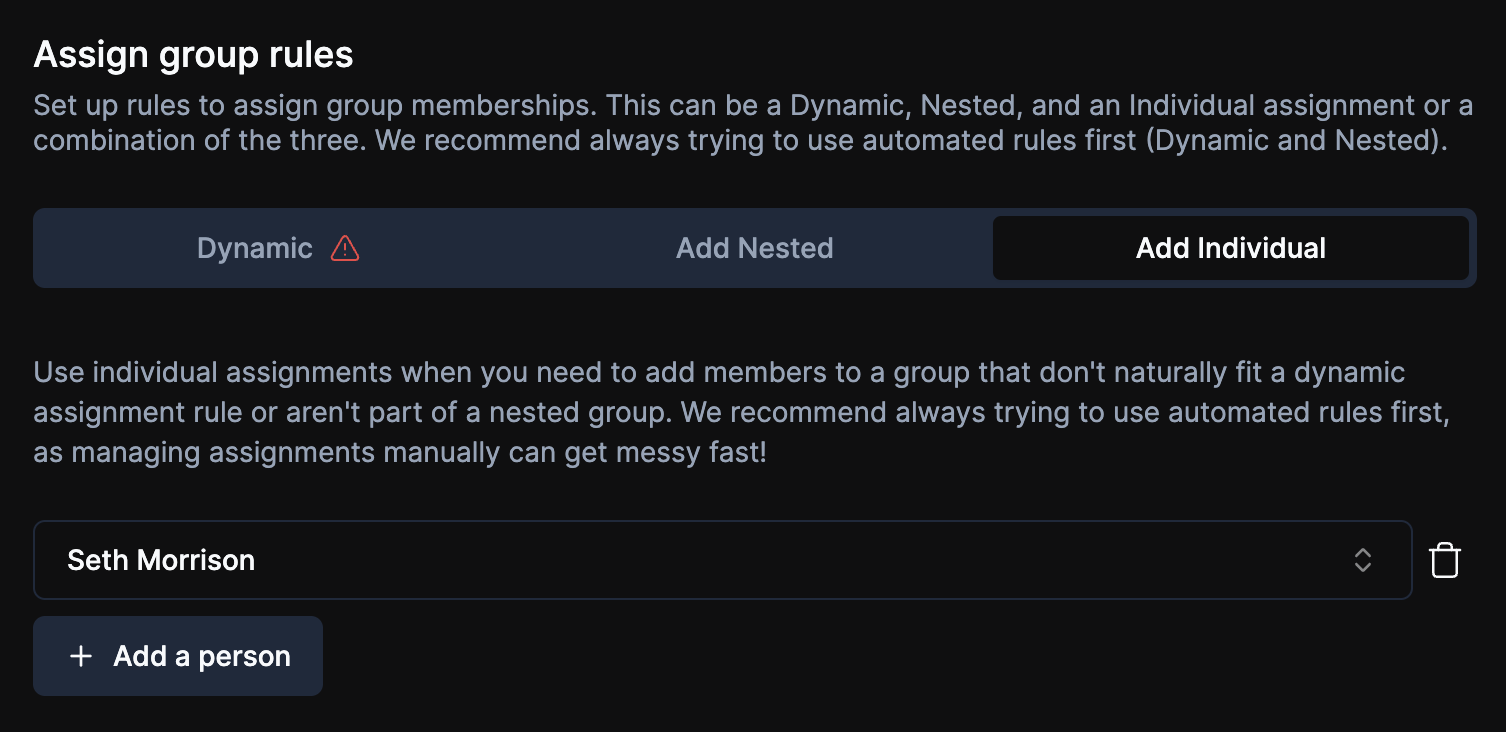
We’ve improved the interface to make configuring and customizing group memberships more intuitive. Now, it’s easier to see how different rule types interact. You can combine dynamic rules, nest existing groups, and add individual members to create powerful, customized group memberships. This change also includes updating the “Save” button to “Save All,” ensuring it’s clear that all settings across tabs are saved together.
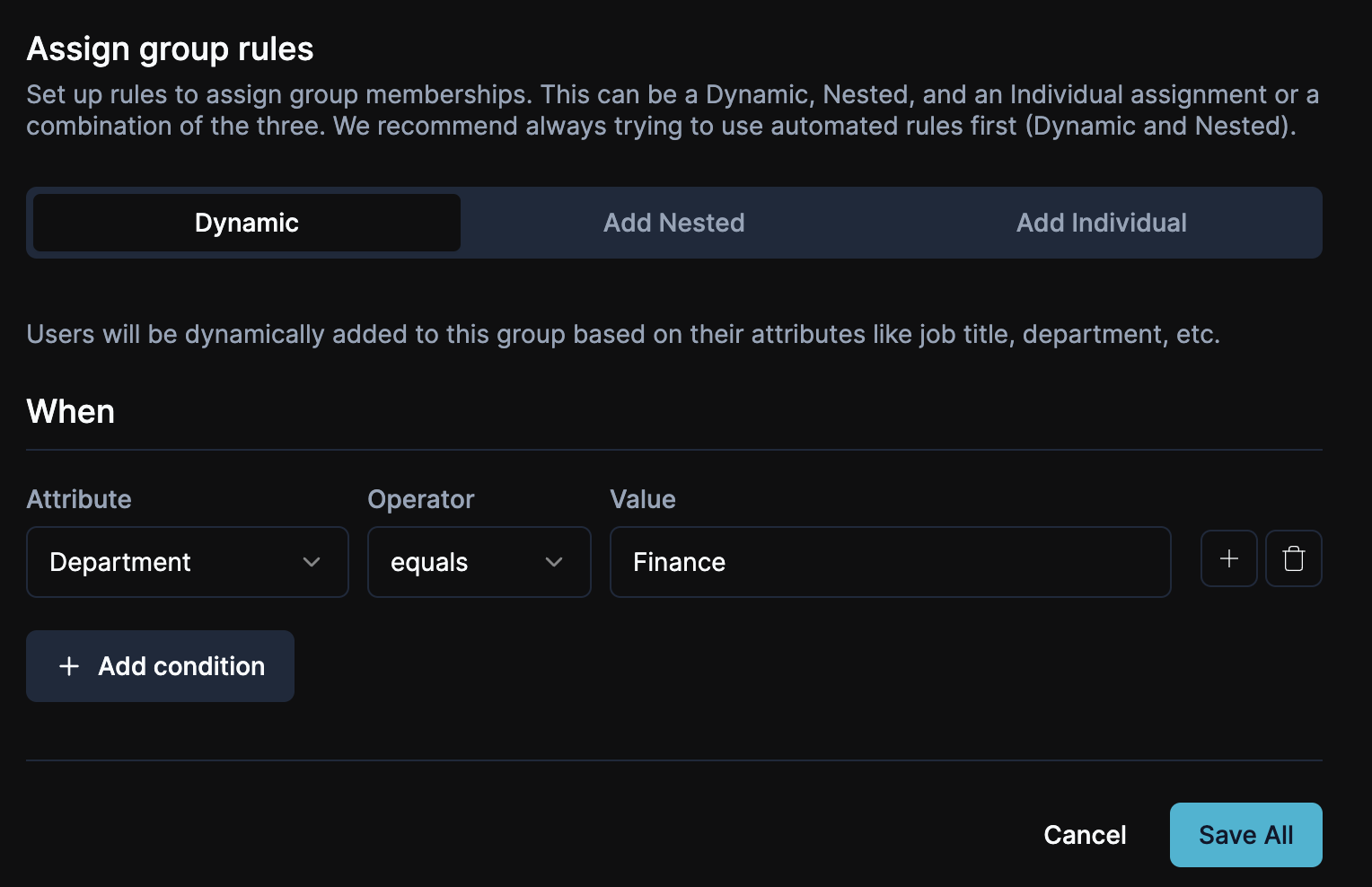
The Group management page now defaults to 10 items for pagination like other screens.
We’ve added a spinner to keep things clear while your forms are loading. Now, all the data will be fully loaded before the form appears, eliminating any confusion and making your experience smoother and more intuitive.
We’ve sprinkled some extra magic on our group management! Now, instead of showing all the behind-the-scenes groups, your dashboard will only display the ones you care about. Managing and understanding your groups just got a whole lot simpler—and more accurate!
Keeping track of scheduled user events is now even easier! Previously, we indicated upcoming activations or deactivations in the dashboard and user management areas. Now, you’ll also see a handy calendar icon. Simply hover over it to reveal the exact date and time of the event in a clear, easy-to-read format.
Change of plans? You can now cancel scheduled activations or deactivations for one or more users with ease. Whether you need to adjust timing or reverse a decision, managing your user schedule just got more flexible.
Planning ahead? Now, you can easily schedule user offboarding for one or multiple users at once! Simply set the date, and we’ll automatically disable the users, revoke their access, and remove them from any synced applications. Offboarding has never been simpler or more streamlined.
We’ve made it easier to navigate and take action with some key updates:
App Management/Add New Apps:
The ‘+ Custom Bookmark’ and ‘+ Custom SSO Integration’ buttons have received a makeover! They now match the style of our other action buttons, making them more prominent and easier to spot.
User Management:
The ‘Bulk Actions’ button is now always visible, even when no users are selected. While it’s disabled until needed, this tweak ensures you know bulk actions are just a click away when you need them.
We’ve fine-tuned our interface to make things more intuitive. The ‘Suspend’ action is now called ‘Disable,’ and the ‘Deactivated’ badge has been updated to ‘Disabled.’ This update ties the actions and statuses together more clearly, ensuring you’re always in the know.
Now, you can effortlessly update your organization’s name and domain in the settings section. Just click the gear icon at the top of your dashboard and select ‘Settings’ under the Org Settings area.
Pro Tip: The domain helps identify your organization during login. Change it only when you update your primary email domain. And don’t worry, logging in via the ShiftControl app in the App Dashboard will always work seamlessly, no matter what!
Unlock the power of seamless interaction with ShiftControl! You can now manage your organization’s and individual user’s API keys with ease. View, create, and manage key names, purposes, and expiry dates—all in one place.
You can find them under the gear menu at the top of your dashboard.
Now, keeping tabs on password health is a breeze! Our dashboard and user management areas feature new icons that instantly show if a user’s password status needs attention (e.g., not set or expired). Stay on top of security with these handy visual cues!
Forgotten passwords are a thing of the past! You can now send a password reset email to one or more users without logging them out. Help your team members get back into their accounts smoothly and effortlessly. Password woes, be gone!
These options are available in the ‘…’ menu for users and under the ‘Bulk actions’ button.
We get it, life gets busy! Sometimes those welcome emails slip through the cracks. But worry not—now you can effortlessly resend the activation email to one or more users who haven’t logged in and created their accounts yet. Ensure no one misses out on joining your organization with just a few clicks. Keeping your team connected has never been easier!
These options are available in the ‘…’ menu for users and under the ‘Bulk actions’ button.
You can now force a password reset for one or more users in just a few clicks. Say goodbye to the hassle of manually managing password updates and hello to streamlined security management.
These options are available in the ‘…’ menu for users and under the ‘Bulk actions’ button.
Some things to keep in mind:
We have resolved an issue where clicking the ‘View Members’ button for groups did not return any results.
We’ve heard your feedback: the button next to the user state badge for activating a user wasn’t clearly identifiable. We agree, so we’ve enhanced it by adding a mouse click icon to make it more obvious.
Don’t forget, you can also activate users from the user-specific action menu and the bulk action menu!
We understand that activating users one at a time during onboarding was tedious and time-consuming. To streamline this process, we’ve introduced a new feature that allows you to activate or suspend multiple users at once in the User Management section. Now, managing user statuses is more efficient and hassle-free!
Not all apps use all fields, and sometimes we were displaying a field that wasn’t actually configurable! We’ve now updated the logic to detect which fields are available for which apps and only show those, making like just a little bit easier.
We’re working hard to think through ways to make configuring SSO much easier. The nature of SSO configuration means a lot of copying and pasting and flipping between tabs, stay tuned to see how we are solving those issues and making this accessible for everyone!
We’re on a mission to simplify IT and SaaS management for everyone. To make this journey easier, we are proud to launch our new documentation site: docs.shiftcontrol.io. This resource is packed with helpful guides, complete with screenshots to walk you through even the most complex configuration tasks and information. Whether you’re setting up for the first time or looking to optimize your current setup, our documentation is designed to provide the support you need, step by step.
Ever looked at the dashboard and see the tiles and try to click on them? Well, before today, you might have been disappointed and nothing would have happned. Fear not, we like keeping things as intuitive as possible. You can now click on the each tile to go to the respective areas in our app!
When you have group names, group descriptions, or user names that don’t quite fit into the tables on the dashboard, we now truncate those names with a … to keep things looking nice and tidy! Curious what the full name is? Simply hover over the name and you’ll to view the full text.
It can be tedious to copy and paste all information required to configure SSO. While we’re striving to make this even easier than the “traditional” ways, for now we’ve added the ability to generate and download a metadata xml file that some providers accept to automatically configure SSO on their end.
What does this do? In the SSO section of an application, you can now simply click the “Download SSO Config Metadata” button to grab that file and provide it to the third-party application! Easy peasy!
What’s New?
Ever find that things are created in the JumpCloud UI rather than through the ShiftControl Interface? We’ve got you covered! With our latest enhancement, any changes made in JumpCloud are automatically discovered and adopted by ShiftControl. Now, you can manage everything through our platform without missing a beat.
Benefits for New Customers
For new customers, this feature is a game-changer. If you already have a pre-configured JumpCloud instance, our enhanced integration allows for a seamless onboarding experience. We’ll discover and adopt everything into ShiftControl, so you can immediately benefit from our intuitive and user-friendly interface.
JumpCloud has a hard limit of 90 days on retention of their audit logs. Often, a longer history of audit logs is needed for compliance and security reasons. We now store audit logs from JumpCloud to enhance the history of captured logs past the JumpCloud limit.
We wanted to turn this feature on as soon as possible so our customers can enjoy long retention from day one. We’ll be making these logs available in the UI soon, as well as ways to export them for your own use.
When a user becomes locked due to multiple failed login attempts, admins receive an email to notify them, and they can now unlock that user in the ShiftControl interface.
Locked users will have a lock next to their account state indicating the account is locked. If you believe the person was simply mistyping their password, you can unlock them through the … menu for the user.
Note: Users become locked because of failed login attempts! If an account locks out multiple times, you should contact the person to make sure they are actually failing to log in and that someone isn’t trying to test their credentials/break in.
We heard the feedback! You didn’t want to waste time switching between screens to configure Single Sign On. We’ve enabled the ability to configure key SSO configurations in our app!
SSO Configurations can be daunting and confusing, so we’re working on even more improvments to make it easier for you to configure SSO for your organization. Currently, we only expose the most common configuration elements to keep things simple. We’re working to analyze the most popular apps our customers use so we can make sure we only ask for the info we need, and provide you exactly what the app wants too. Stay tuned for more updates!
It’s now a real .ico file 🥳
We’ve fixed an issue where adding an app that had a space in the name caused an unknown error due to a mismatch between the SSOUrl and app internal name fields.
After months of hard work and dedication, we’re ready to take on our first batch of customers for our closed beta. We’ve made significant progress on our feature roadmap, believe we can already deliver significant value and are eager to get real customer feedback.
We’re incredibly excited to work closely with our beta users and shape the future of SaaS management together. If you think you should be part of this first batch, drop us a message/email with your reasons, and we’ll definitely consider it.
Thank you for your continued support – we can’t wait to show you what we’ve built!